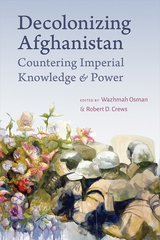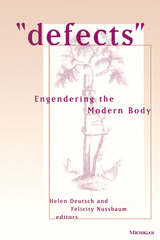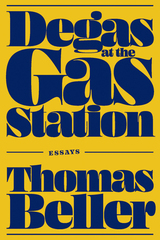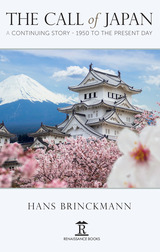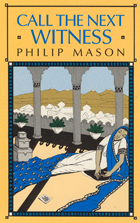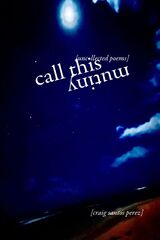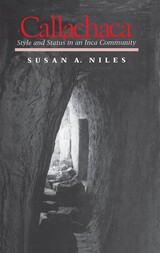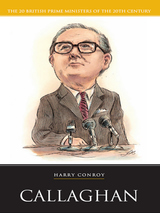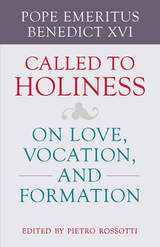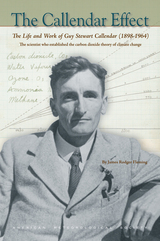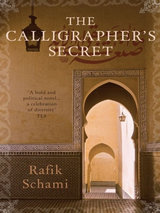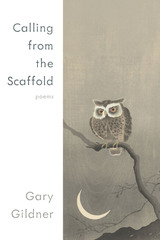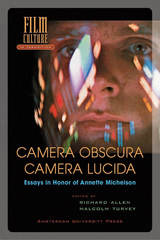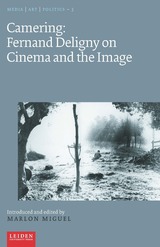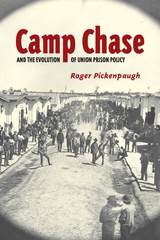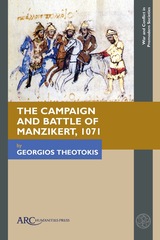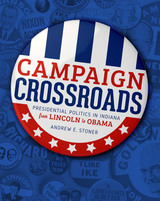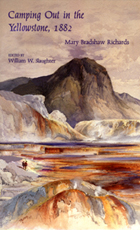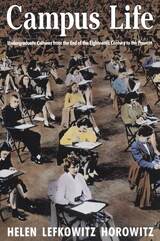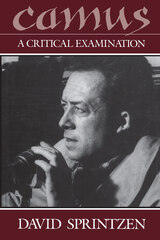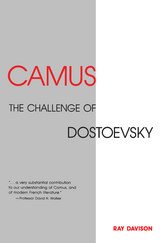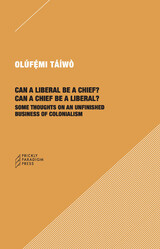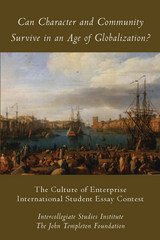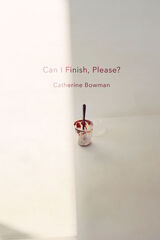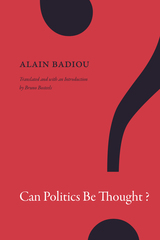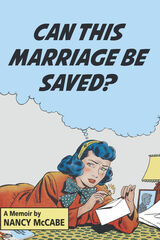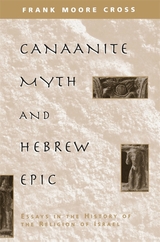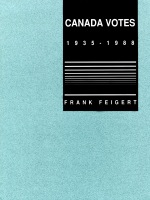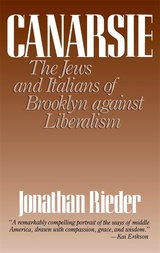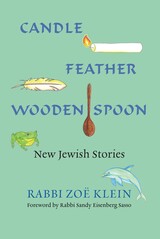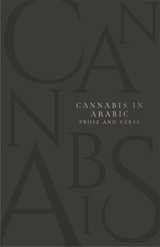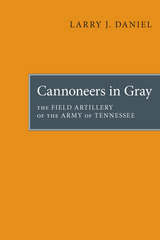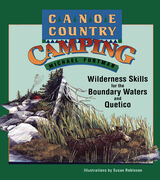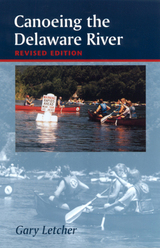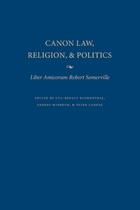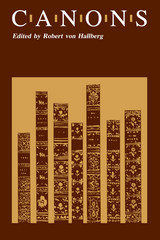The Call of Japan: A Continuing Story-1950 to the Present Day
Hans Brinckmann
Amsterdam University Press, 2020 Part personal memoir, part professional flashback, part socio-cultural commentary, The Call of Japan chronicles the author’s experiences during his 40 years of living in Japan, from 1950 to 1974 as a ‘reluctant banker’, and from 2003 to the present as a writer. The Call of Japan comments extensively on the country’s economic, political and cultural realities during the crucial early years of post-war reconstruction as well as during more recent times.
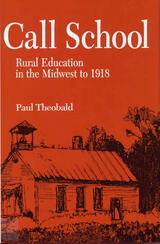 Call School: Rural Education in the Midwest to 1918
Paul Theobald
Southern Illinois University Press, 1995 Paul Theobald chronicles the history of the one-room country schools that were spread throughout the rural Midwest during the nineteenth and early twentieth centuries. Focusing on the region’s educational history in light of the religious, economic, and political atmosphere, Theobald explores the tight connection between educational preferences and religious views, between the economics of the countryside and the educational experiences of children, and between the politics of local power and the educational prospects of the powerless. Basing his study on extensive archival research, including findings from eight midwestern states, Theobald neither condemns nor lauds the one-room school experience. Providing an objective evaluation, he examines rural school records, correspondence of early school officers, contemporary texts, and diaries and letters of rural students and teachers. As he weaves together a contextualized account of the circumstances surrounding and within the one-room country schools of the Midwest, Theobald stresses that religion was of primary importance in nineteenth-century American life. Yet he also looks carefully at the shifting economic environment at work in the countryside, particularly in regard to the development of widespread farm tenancy and the consolidation of agricultural and related industries. He challenges readers to analyze how a national move from an agrarian to an industrial view caused conflict and confusion, thereby introducing irrevocable change into rural American life. Theobald’s study illuminates the history of education on the plains and sheds light on the social foundations of the period.
Call the Next Witness
Philip Mason
University of Chicago Press, 1986 Call the Next Witness is an exciting detective story in which the suspense depends not on finding out "who done it," but rather on who will say what. Set in northern India during colonial rule, the story follows the thread of a murder from deed to trial. Mason not only weaves a gripping tale of death and detection in a small village, but also provides a fascinating insight into the religious, economic, political and psychological infrastructure of prewar Indian society.
Call This Mutiny: [uncollected poems]
Craig Santos Perez
Omnidawn, 2024 A collection of previously published poems by renowned National Book Award-winning Chamoru poet Craig Santos Perez.
The seventh book from award-winning Chamoru author Craig Santos Perez, Call This Mutiny brings together poems that were originally published in journals and anthologies from 2008 to 2023. Throughout these selected poems, Perez offers critical explorations of native cultures, decolonial politics, colonial histories, and the entangled ecologies of his homeland of Guam, his current home of Hawaiʻi, and the larger Pacific region in relation to the Global South and the Indigenous Fourth World. Perez’s poetry draws on the power of storytelling to share Indigenous history and culture and to offer healing from the trauma of colonialism and injustice. As he writes, “If we can write the ocean, we will never be silenced.”
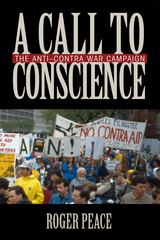 A Call to Conscience: The Anti-Contra War Campaign
Roger Peace
University of Massachusetts Press, 2012 Unlike earlier U.S. interventions in Latin America, the Reagan administration's attempt to overthrow the Sandinista government of Nicaragua during the 1980s was not allowed to proceed quietly. Tens of thousands of American citizens organized and agitated against U.S. aid to the counterrevolutionary guerrillas, known as "contras." Believing the Contra War to be unnecessary, immoral, and illegal, they challenged the administration's Cold War stereotypes, warned of "another Vietnam," and called on the United States to abide by international norms.
A Call to Conscience offers the first comprehensive history of the anti–Contra War campaign and its Nicaragua connections. Roger Peace places this eight-year campaign in the context of previous American interventions in Latin America, the Cold War, and other grassroots oppositional movements. Based on interviews with American and Nicaraguan citizens and leaders, archival records of activist organizations, and official government documents, this book reveals activist motivations, analyzes the organizational dynamics of the anti–Contra War campaign, and contrasts perceptions of the campaign in Managua and Washington.
Peace shows how a variety of civic groups and networks—religious, leftist, peace, veteran, labor, women's rights—worked together in a decentralized campaign that involved extensive transnational cooperation.
 A Call to Fidelity: On the Moral Theology of Charles E. Curran
James J. Walter, Timothy E. O’Connell, and Thomas A. Shannon, Editors
Georgetown University Press, 2002 A Call to Fidelity seeks to thoughtfully examine and critically evaluate the contributions that Charles E. Curran has made to the field of Catholic moral theology over the past forty years. It also seeks to assess the development of specific topics in contemporary moral theology to which Curran has made his unique mark, particularly in fundamental ethics, sexual and medical ethics, social and political ethics, and topics related to dialogue with other traditions and approaches to Catholic ethics. Reviewing the many years of his influential writings, thought, and scholarship, fourteen distinguished scholars examine his contributions and the current state of the topics under discussion-which are as far ranging as academic freedom, birth control, gay and lesbian relationships, and feminism. Each contributor also provides a critical evaluation of Curran's work and outlines how these areas will hold or undergo transformation as the church looks toward its relationship with society and culture in the coming decades.
 The Call to Read: Reginald Pecock's Books and Textual Communities
Kirsty Campbell
University of Notre Dame Press, 2010
The Call to Read is the first full-length study to situate the surviving oeuvre of Reginald Pecock in the context of current scholarship on English vernacular theology of the late medieval period. Kirsty Campbell examines the important and innovative contribution Pecock made to late medieval debates about the roles of the Bible, the Church, the faculty of reason, and practices of devotion in fostering a vital, productive, and stable Christian community.
Campbell argues that Pecock's fascinating attempt to educate the laity is more than an effort to supply religious reading material: it is an attempt to establish and unite a community of readers around his books, to influence and thus change the ways they understand their faith, the world, and their place in it. The aim of Pecock's educational project is to harness the power of texts to effect religious change. Combining traditional approaches with innovative thinking on moral philosophy, devotional exercises, and theological doctrine, Pecock's works of religious instruction are his attempt to reform a Christian community threatened by heresy through reshaping meaningful Christian practices and forms of belief. Campbell's book will be of interest to scholars and students of medieval literature and culture, especially those interested in fifteenth-century religious history and culture.
"This book is a study of the surviving writings of the mid-fifteenth-century English bishop Reginald Pecock and the ambitious program of lay education he devised in response both to the explicit threat represented by the Lollards and the more insidious threat presented by orthodox counter-attacks against their views. The Call to Readrepresents the most promising attempt to encompass Pecock as an intellectual that I have seen, as well as the most lucid and sheerly interesting study of his writings. The book is a notable achievement and will be an important contribution to late medieval religious studies." --Nicholas Watson, Harvard University
"The Call to Readargues that Reginald Pecock's writings offer us a new view of the fifteenth century as a dynamic period in which writers, preachers, and poets were provoked by the threat of heresy to come up with new ways of thinking about the very foundations of belief and practice in the Christian community. By looking at Pecock in this way, the book contributes to the current reappraisal of the fifteenth century in terms of analyzing the effects of the Lollard heresy on vernacular culture." --Vincent Gillespie, University of Oxford
"An important contribution to our developing understanding of the complexity and diversity of fifteenth-century vernacular theologies. The first extended study of Pecock's work to be published in twenty-five years, Campbell's book both builds on, and greatly extends, our burgeoning understanding of fifteenth-century religious, intellectual, and literary culture." --Fiona Somerset, Duke University
Callachaca: Style Status In Inca Community
Susan A. Niles
University of Iowa Press, 1987
Inca constructions, designed to conform to a state aesthetic, reveal the worldview of these masters of social and architectural engineering. In her meticulous analysis of Callachaca—the fifteenth-century estate of the royal Amaro Topa Inca and his retainers near the ancient capital of Cuzco—Susan Niles shows us that the physical order seen in this planned community reflects the Inca vision of an appropriate social order.
Callachaca: Style and Status in an Inca Community will be valuable reading for archaeologists, art historians, geographers, architects with an interest in pre-Columbian cultures, landscape architects, anthropologists, folklorists, and historians with a special interest in the Andes. Since she focuses on all the varied architectural remains at one site in the Inca heartland, Niles provides a unique model for examining royal Inca architecture and society.
Callaghan
Harry Conroy
Haus Publishing, 2006 Part of the Prime Ministers Series, Callaghan was the Labour Prime Minister who was defeated by Thatcher
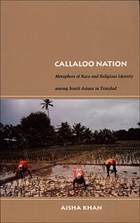 Callaloo Nation: Metaphors of Race and Religious Identity among South Asians in Trinidad
Aisha Khan
Duke University Press, 2004 Mixing—whether referred to as mestizaje, callaloo, hybridity, creolization, or multiculturalism—is a foundational cultural trope in Caribbean and Latin American societies. Historically entwined with colonial, anticolonial, and democratic ideologies, ideas about mixing are powerful forces in the ways identities are interpreted and evaluated. As Aisha Khan shows in this ethnography, they reveal the tension that exists between identity as a source of equality and identity as an instrument through which social and cultural hierarchies are reinforced. Focusing on the Indian diaspora in the Caribbean, Khan examines this paradox as it is expressed in key dimensions of Hindu and Muslim cultural history and social relationships in southern Trinidad. In vivid detail, she describes how disempowered communities create livable conditions for themselves while participating in a broader culture that both celebrates and denies difference. Khan combines ethnographic research she conducted in Trinidad over the course of a decade with extensive archival research to explore how Hindu and Muslim Indo-Trinidadians interpret authority, generational tensions, and the transformations of Indian culture in the Caribbean through metaphors of mixing. She demonstrates how ambivalence about the desirability of a callaloo nation—a multicultural society—is manifest around practices and issues, including rituals, labor, intermarriage, and class mobility. Khan maintains that metaphors of mixing are pervasive and worth paying attention to: the assumptions and concerns they communicate are key to unraveling who Indo-Trinidadians imagine themselves to be and how identities such as race and religion shape and are shaped by the politics of multiculturalism.
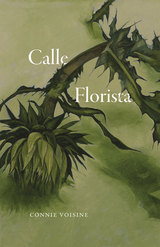 Calle Florista
Connie Voisine
University of Chicago Press, 2015 This World and That One
Sometimes you defy it,
I am not that, watching a stranger
cry like a dog when she thinks she’s alone
at the kitchen window, hands forgotten
under the running tap.
The curtains blow out, flap the other side of the sill.
In you one hole fills another,
stacked like cups.
You remember your hands.
Connie Voisine’s third book of poems centers on the border between the United States and Mexico, celebrating the stunning, severe desert landscape found there. This setting marks the occasion as well for Voisine to explore themes of splitting and friction in both human and political contexts. Whose space is this border, she asks, and what voice can possibly tell the story of this place?
In a wry, elegiac mode, the poems of Calle Florista take us both to the edge of our country and the edge of our faith in art and the world. This is mature work, offering us poems that oscillate between the articulation of complex, private sensibilities and the directness of a poet cracking the private self open—and making it vulnerable to the wider world.
Called Back
Rosa Lane
Tupelo Press, 2024 Rosa Lane brings a necessary, gender-fluid, feminist perspective to the Emily Dickinson table of debate.
In bold tribute with a title utilizing the last two words Emily Dickinson wrote, Rosa Lane’s Called Back converses with one of our greatest poets in theatrical monologue—decoding secrets amid the blatant. Evoked by epigraphs selected from Dickinson’s work, Lane’s poems, through her I-speaker, reveal the extraordinary to be found in the ordinary and speak to the struggle of sexual orientation, otherness, and the challenges of living in a Calvinistic socioreligious world of oughts and noughts as evidenced in Dickinson’s poems. From sapphic eroticism and subsequent pangs of nonbelonging to tacking next life as a welcome reprieve, poems in Called Back create a de novo dot-connecting lyrical narrative.
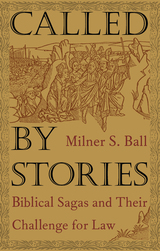 Called by Stories: Biblical Sagas and Their Challenge for Law
Milner S. Ball
Duke University Press, 2000 Distinguished legal scholar and Presbyterian minister Milner S. Ball examines great sagas and tales from the Bible for the light they shed on the practice of law and on the meaning of a life lived in the legal profession. Scholars and laypersons alike typically think of the law as a discipline dominated by reason and empirical methods. Ball shows that many of the dilemmas and decisions that legal professionals confront are more usefully approached through an experience of narrative in which we come to know ourselves and our actions through stories.
He begins with the story of Moses, who is obliged both to speak for God to the Hebrews and to advocate for the Hebrews before God. What, asks Ball, does Moses’s predicament say to lawyers professionally bound to zealous representation of only one client? In the story of Rachel, Ball finds insights that comprehend the role of tears and emotion in the judicial process. He relates these insights to specific contemporary situations, such as a plant closing and the subsequent movement of jobs to Mexico and legal disputes over the sovereignty of native Hawaiians. In a discussion of “The Gospel According to John,” Ball points out that the writer of this gospel is free simultaneously to be critical of law and to rely extensively on it. Ball uses this narrative to explore the boundaries of free will and independence in lawyering. By venturing into the world of powerful events and biblical characters, Ball enables readers to contest their own expectations and fundamental assumptions.
Employing legal theory, theology, and literary criticism, Called by Stories distills a wisdom in biblical texts that speaks specifically to the working life of legal professionals. As such, it will enrich lovers of narrative and poetry, ethicists, literary and biblical scholars, theologians, lawyers, law students, judges, and others who seek to discern deeper meanings in the texts that have shaped their lives.
 Called to Care?: Health Care Work, Burnout, and the Search for Meaningful Work
Cindy L. Cain
Rutgers University Press, 2026 Health care workers are burned out. Health care leaders know that workers are burned out, but do not yet have the right tools to fix the problem. Called to Care? argues that we can mitigate burnout by examining what is most meaningful about health care work. Using interviews and observation of a wide range of health care workers, Cain shows that workers who care for our most vulnerable adults find their work to be meaningful when they are able to connect to the work and make progress on something that matters. In most cases, these meaningful experiences are also consistent with better care for patients. And yet organizational practices, policy environments, and cultural meanings get in the way of meaningful work, creating burnout. But it doesn’t have to be this way. Called to Care? illustrates that workplaces can and should align meaningful work experiences with quality care for patients.
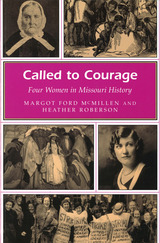 Called to Courage: Four Women in Missouri History
Margot Ford McMillen & Heather Roberson
University of Missouri Press, 2002 While there are many accessible biographies of important Missouri men, there are few such biographies of Missouri women, which might suggest that they did not count in history. This book, written by a mother-and-daughter team, helps to correct that misconception by tracing the lives of four women who played important roles in their eras. These women were exceptional because they had the courage to make the best of their abilities, forging trails and breaking the barriers that separated women’s spheres from those of men: · A Native American woman the French newspapers called “Ignon Ouaconisen,” and the people of Paris called the “Missouri princess,” lived from about 1700 to after 1751. She traveled with adventurer Etienne de Bourgmont and bore his child. Although much of her life remains a mystery, her story gives us insights into the lives of Missouri Indian women in the days of the fur trade.
· Pioneer Olive Boone (1783–1858) came to the Louisiana Territory as the teenage bride of Nathan Boone, guiding a skiff and their horses across the Missouri River to join the Daniel Boone family near St. Charles. For much of her married life, she stayed alone with her fourteen children while her husband traveled on lengthy hunting expeditions, supervised the Boone saltworks in present-day Howard County, and spent years in the military. · Martha Jane Chisley, born a slave in 1833, was brought to northeast Missouri as a young woman. During the Civil War, Martha Jane escaped with her children to Illinois. She overcame many obstacles so that her son Augustine was able to enter school and get an education. Augustine studied in Rome and became the first nationally known African American priest. · Nell Donnelly of Kansas City was a pioneering businesswoman who founded a dress company that became the world’s largest, brightening the wardrobe of the “housewife” while also creating fair working conditions for her employees. Born into an ordinary middle-class family in 1889, she achieved a success and high profile that brought its own problems. Using Missouri and Illinois archives, Margot Ford McMillen and Heather Roberson have compiled well-known and obscure materials to describe the lives of both women and men, showing how roles changed as Missouri and America matured. Bringing together family insights and the rare writings of observers who almost never mention women in their journals, Called to Courage will be welcomed by anyone interested in women’s history or Missouri history.
Called to Holiness
Pope Emeritus Benedict XVI Pope Emeritus Benedict XVI
Catholic University of America Press, 2017 This edited collection is the first to gather in one volume the most relevant addresses, speeches, and homilies of His Holiness, Pope Emeritus Benedict XVI to seminarians and consecrated men and women into a single volume for the English-speaking world.
The Callendar Effect: The Life and Work of Guy Stewart Callendar (1898-1964)
James Rodger Fleming
American Meteorological Society, 2007 This is the untold story of the remarkable scientist who established the carbon dioxide theory of climate change. Guy Stewart Callendar discovered that global warming could be brought about by increases in the concentration of atmospheric carbon dioxide due to human activities, primarily through burning fossil fuels. He did this in 1938! Using never-before-published original scientific correspondence, notebooks, family letters, and photographs, science historian James Rodger Fleming introduces us to one of Britain’s leading engineers and explains his life and work through two World Wars to his continuing legacy as the scientist who established The Callendar Effect.
Calligraphers Secret
Rafik Schami and Anthea Bell
Haus Publishing, 2011 Even as a young man, Hamid Farsi is acclaimed as a master of the art of calligraphy. But as time goes by, he sees that weaknesses in the Arabic language and its script limit its uses in the modern world. In a secret society, he works out schemes for radical reform, never guessing what risks he is running. His beautiful wife, Noura, is ignorant of the great plans on her husband’s mind. She knows only his cold, avaricious side and so it is no wonder she feels flattered by the attentions of his amusing, lively young apprentice. And so begins a passionate love story of a Muslim woman and a Christian man.
 A Calligraphy of Days: Selected Poems
Krzysztof Siwczyk
Seagull Books, 2024 Verses that oscillate between the turmoil of post-communist Eastern Europe to understated reflections on grief and mortality.
The sixty-four poems in A Calligraphy of Days reflect Krzysztof Siwczyk’s wide-ranging and variegated style. Born in 1977, Siwczyk has lived most of his life in the Silesian city of Gliwice. In 1995, he became a wunderkind of the Polish poetry scene with his debut volume Wild Kids, an edgy and unsentimental narrative of youthful tribulations and urban malaise during Poland’s transition from communism to capitalism. Siwczyk’s poems careen down the page at great speed, relying on clever turns of phrase or an idea that illuminates a larger meaning. As in calligraphy, a meandering subterranean process connects meaning and memory, thought and verse. Teased to the surface, words and images emerge in rapid, terse, and precise bursts.
Throughout his career, Siwczyk has never ceased to challenge our sense of who we are—changing course multiple times in the process. Following several volumes full of expansive lines, his most recent works offer spare meditations on illness and grief. Clipped and understated, these post-Holocaust poems address our inability to speak of death and tragedy.
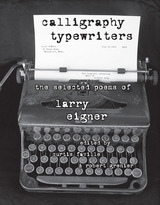 Calligraphy Typewriters: The Selected Poems of Larry Eigner
Larry Eigner, Edited and introduced by Curtis Faville and Robert Grenier, Foreword by Charles Bernstein
University of Alabama Press, 2016 The first and only single-volume collection of Larry Eigner’s most significant poems, gathering in one place the most celebrated of the several thousand poems that constitute his remarkable life’s work
Larry Eigner began writing poetry at age eight and was first published at age nine. Revered by poets and artists across a broad spectrum of generations and schools, Eigner’s remarkably moving poetry was created through enormous effort: because of severe physical disabilities, he produced his texts by typing with only one index finger and thumb on a 1940 Royal manual typewriter, creating a body of work that is unparalleled in its originality.
Calligraphy Typewriters showcases the most celebrated of Eigner's several thousand poems, which are an important part of the Black Mountain/Projectivist movement that began in the 1950s and which remain a primary inspiration for many younger writers, including those in the Language movement that began in the 1970s. In its two sections—Swampscott and Berkeley, named for the two locales where Eigner lived and worked—the volume traces his fantastic perception of the ordinary and his zeal for language. Eigner’s use of visual space, metaphor, and description provide fascinating insights into both his own life and the world that surrounded him. This volume maintains the distinctive visual spacing of his original typescripts, reminders of his method, aesthetic sensibility, and creative ability to compose on the typewriter.
A collection that reimagines the ordinary, Calligraphy Typewriters is the definitive selection of Eigner’s poems, and will serve well not only poets and students of poetry, but readers and writers of every vein.
 Calling All Cars: Radio Dragnets and the Technology of Policing
Kathleen Battles
University of Minnesota Press, 2010 Calling All Cars shows how radio played a key role in an emerging form of policing during the turbulent years of the Depression. Until this time popular culture had characterized the gangster as hero, but radio crime dramas worked against this attitude and were ultimately successful in making heroes out of law enforcement officers. Through close analysis of radio programming of the era and the production of true crime docudramas, Kathleen Battles argues that radio was a significant site for overhauling the dismal public image of policing. However, it was not simply the elevation of the perception of police that was at stake. Using radio, reformers sought to control the symbolic terrain through which citizens encountered the police, and it became a medium to promote a positive meaning and purpose for policing. For example, Battles connects the apprehension of criminals by a dragnet with the idea of using the radio network to both publicize this activity and make it popular with citizens. The first book to systematically address the development of crime dramas during the golden age of radio, Calling All Cars explores an important irony: the intimacy of the newest technology of the time helped create an intimate authority—the police as the appropriate force for control—over the citizenry.
 Calling Elections
Thomas B. Littlewood
University of Notre Dame Press, 1998 Calling Elections: The History of Horse Race Journalism is the lively and important story of the origins and evolution of the "horserace" tradition of political journalism in the United States. Thomas B. Littlewood examines how the treatment of elections as sporting events has come to overshadow the reporting of the campaign as a forum for the discussion of ideas. He suggests reasons for the perception of presidential elections as spectator sport: the historical interconnections between gambling, politics, and the press; the infusion of sports language into political rhetoric; the government spoils system that gives individuals and businesses a financial stake in the status of the contest; the methodological development of "scientific" polling; the fiercely declared independence of many formerly partisan organizations; the perverse conviction of many journalists in the early 1900s that substantive politics was not interesting to news consumers and that partisan "speech" belonged in the paid advertising columns of the newspaper.
Many influential journalists resisted the growing power of media polls, preferring what some have called their "instincts and impressions." Littlewood contends that Washington journalists are biased by stylistic considerations and in favor of "a good story." Sometimes the "good story" will prevail temporarily over contrary numbers in the polls. Without denying the psychological desire of news consumers to know who is winning, Littlewood completes his study by suggesting how the journalism of a campaign discourse can be made more meaningful and compelling.
Political scientists, journalists, sociologists, American Studies scholars, and all those interested in the past, and upcoming, presidential elections will find much to ponder in Calling Elections: The History of Horse Race Journalism.
----------
Thomas B. Littlewood is Professor Emeritus of Journalism at the University of Illinois Urbana-Champaign and the author of The Politics of Population Control (Notre Dame Press). He has worked as a reporter for the Chicago Sun-Times and on the congressional staff of Robert Dole.
----------
"This is an entertaining slice of American political history. Littlewood, a former congressional aide to Bob Dole, examines the ways in which newspapers - and later, television networks - have reported election results from the early 1800s to the present. While showing how elections came to be seen as a spectator sport, he treats significant methods with loving detail, such as the first use (in the 1880s) of 'key precincts,' the growing acceptance of public opinion polls, and the rise of exit polls and 'voter profile analysis' in the 1960s and 1970s." -Library Journal
"As a companion of Tom Littlewood's along many a campaign trail, I can vouch for what a great reporter he is: hard-working, perceptive, and always digging for the facts. He has brought all of these qualities into this insightful study of what presidential campaigns and elections are all about." --Godfrey Sperling, Jr., Senior Columnist, The Christian Science Monitor
"Journalist-scholar Thomas Littlewood's Calling Elections is a treasure-trove of insightful nuggets from the past and useful remedies for the future." --Stephen Hess, Senior Fellow, The Brookings Institute
"Tom Littlewood is a skilled journalist who uses his skills admirably in a fascinating, thoughtful, and challenging book." --Paul Simon, Director of the Public Policy Institute, Southern Illinois University at Carbondale
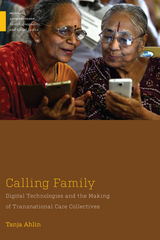 Calling Family: Digital Technologies and the Making of Transnational Care Collectives
Tanja Ahlin
Rutgers University Press, 2023 How do digital technologies shape both how people care for each other and, through that, who they are? With technological innovation is on the rise and increasing migration introducing vast distances between family members--a situation additionally complicated by the COVID-19 pandemic and the requirements of physical distancing, especially for the most vulnerable – older adults--this is a pertinent question. Through ethnographic fieldwork among families of migrating nurses from Kerala, India, Tanja Ahlin explores how digital technologies shape elder care when adult children and their aging parents live far apart. Coming from a country in which appropriate elder care is closely associated with co-residence, these families tinker with smartphones and social media to establish how care at a distance can and should be done to be considered good. Through the notion of transnational care collectives, Calling Family uncovers the subtle workings of digital technologies on care across countries and continents when being physically together is not feasible. Calling Family provides a better understanding of technological relationality that can only be expected to further intensify in the future.
This book is also freely available online as an open access digital edition. The open access publication was financially supported by the Social Science Research Master and partly also by the Health, Care and the Body Programme Group of the Department of Anthropology, both at the Amsterdam Institute of Social Science Research, University of Amsterdam.
Calling from the Scaffold: Poems
Gary Gildner
University of Pittsburgh Press, 2022 Calling from the Scaffold is a collection of poems about connecting and not connecting—of approaching the brink of connecting. It’s about paying tribute and salvaging and gratitude. The voices vary in their longings: we hear from men and women, the young and no longer young. Nature often is there to help them out. The poet, also a writer of fiction and nonfiction, is interested in story, in his characters’ ability to move down the road, searching for their best selves, best home, putting together the pieces that move them toward that famous happy ending.
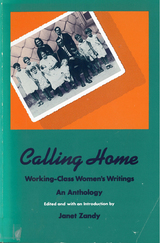 Calling Home: Working-Class Women's Writings
Zandy, Janet
Rutgers University Press, 1990 Working-class women are the majority of women in the United States, and yet their work and their culture are rarely visible. Calling Home is an anthology of writings by and about working-class women. Over fifty selections represent the ethnic, racial, and geographic diversity of working-class experience. This is writing grounded in social history, not in the academy. Traditional boundaries of genre and periodization collapse in this collection, which includes reportage, oral histories, speeches, songs, and letters, as well as poetry, stories, and essays. The divisions in this collection - telling stories, bearing witness, celebrating solidarity - address the distinction of "by" or "about" working-class women, and show the connections between individual identity and collective sensibility in a common history of struggle for economic justice.
The geography of home, identity, parents, sex, motherhood, the dominance of the job, the overlapping of private and public worlds, the promise of solidarity and community are a few of the themes of this book. Here is a chorus of working class women's voices: Sandra Cisneros, Barbara Garson, Meridel Le Sueur, Tillie Olsen, Barbara Smith, Endesha I. M. Holland, Mother Jones, Nellie Wong, Agnes Smedley, Bobbie Louise Hawkins, Sharon Doubiago, Carol Tarlen, Hazel Hall, Margaret Randall, Judy Grahn, and many others!
The aesthetic impulse is shaped by class, but not limited to one ruling class. What connects these writers is a collective consciousness, a class, which rejects bondage and lays claim to liberation through all the possibilities of language. Calling Home is illustrated with family photographs as well as images of working women by professional photographers.
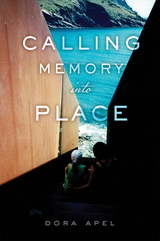 Calling Memory into Place
Dora Apel
Rutgers University Press, 2021 How can memory be mobilized for social justice? How can images and monuments counter public forgetting? And how can inherited family and cultural traumas be channeled in productive ways?
In this deeply personal work, acclaimed art historian Dora Apel examines how memorials, photographs, artworks, and autobiographical stories can be used to fuel a process of “unforgetting”—reinterpreting the past by recalling the events, people, perspectives, and feelings that get excluded from conventional histories. The ten essays in Calling Memory into Place feature explorations of the controversy over a painting of Emmett Till in the Whitney Biennial and the debates about a national lynching memorial in Montgomery, Alabama. They also include personal accounts of Apel’s return to the Polish town where her Holocaust survivor parents grew up, as well as the ways she found strength in her inherited trauma while enduring treatment for breast cancer.
These essays shift between the scholarly, the personal, and the visual as different modes of knowing, and explore the intersections between racism, antisemitism, and sexism, while suggesting how awareness of historical trauma is deeply inscribed on the body. By investigating the relations among place, memory, and identity, this study shines a light on the dynamic nature of memory as it crosses geography and generations.
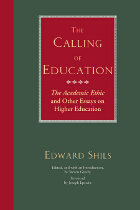 The Calling of Education: "The Academic Ethic" and Other Essays on Higher Education
Edward Shils
University of Chicago Press, 1997 Throughout his long and prolific career, Edward Shils brought an extraordinary knowledge of academic institutions to discussions about higher education. The Calling of Education features Shils's most illuminating and incisive writing on this topic from the last twenty-five years of his life. The first essay, "The Academic Ethic," articulates the unique ethical demands of the academic profession and directs special attention to the integration of teaching and research. Other pieces, including Shils's renowned Jefferson lectures, focus on perennial issues in higher learning: the meaning of academic freedom, the connection between universities and the state, and the criteria for appointing individuals to academic positions.
Edward Shils understood the university as a great symphonic conductor comprehends the value of each instrument and section, both separately and in cooperation. The Calling of Education offers Shils's insightful perspective on problems that are no less pressing than when he first confronted them.
Edward Shils (1910-1995) was distinguished service professor in the Committee on Social Thought and the department of sociology at the University of Chicago. Among his many books published by the University of Chicago Press are Portraits: A Gallery of Intellectuals and the three-volume Selected Papers of Edward Shils.
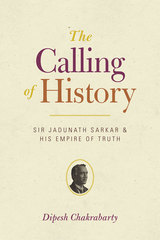 The Calling of History: Sir Jadunath Sarkar and His Empire of Truth
Dipesh Chakrabarty
University of Chicago Press, 2015 A leading scholar in early twentieth-century India, Sir Jadunath Sarkar (1870–1958) was knighted in 1929 and became the first Indian historian to gain honorary membership in the American Historical Association. By the end of his lifetime, however, he had been marginalized by the Indian history establishment, as postcolonial historians embraced alternative approaches in the name of democracy and anti-colonialism. The Calling of History examines Sarkar’s career—and poignant obsolescence—as a way into larger questions about the discipline of history and its public life.
Through close readings of more than twelve hundred letters to and from Sarkar along with other archival documents, Dipesh Chakrabarty demonstrates that historians in colonial India formulated the basic concepts and practices of the field via vigorous—and at times bitter and hurtful—debates in the public sphere. He furthermore shows that because of its non-technical nature, the discipline as a whole remains susceptible to pressure from both the public and the academy even today. Methodological debates and the changing reputations of scholars like Sarkar, he argues, must therefore be understood within the specific contexts in which particular histories are written.
Insightful and with far-reaching implications for all historians, The Calling of History offers a valuable look at the double life of history and how tensions between its public and private sides played out in a major scholar’s career.
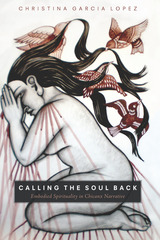 Calling the Soul Back: Embodied Spirituality in Chicanx Narrative
Christina Garcia Lopez
University of Arizona Press, 2019 Spirituality has consistently been present in the political and cultural counternarratives of Chicanx literature. Calling the Soul Back focuses on the embodied aspects of a spirituality integrating body, mind, and soul. Centering the relationship between embodiment and literary narrative, Christina Garcia Lopez shows narrative as healing work through which writers and readers ritually call back the soul—one’s unique immaterial essence—into union with the body, counteracting the wounding fragmentation that emerged out of colonization and imperialism. These readings feature both underanalyzed and more popular works by pivotal writers such as Gloria Anzaldúa, Sandra Cisneros, and Rudolfo Anaya, in addition to works by less commonly acknowledged authors.
Calling the Soul Back explores the spiritual and ancestral knowledge offered in narratives of bodies in trauma, bodies engaged in ritual, grieving bodies, bodies immersed in and becoming part of nature, and dreaming bodies. Reading across narrative nonfiction, performative monologue, short fiction, fables, illustrated children’s books, and a novel, Garcia Lopez asks how these narratives draw on the embodied intersections of ways of knowing and being to shift readers’ consciousness regarding relationships to space, time, and natural environments.
Using an interdisciplinary approach, Calling the Soul Back draws on literary and Chicanx studies scholars as well as those in religious studies, feminist studies, sociology, environmental studies, philosophy, and Indigenous studies, to reveal narrative’s healing potential to bring the soul into balance with the body and mind.
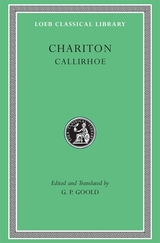 Callirhoe
Chariton
Harvard University Press, 1995 An ancient Greek tale of romance and adventure.
Chariton’s Callirhoe, subtitled “Love Story in Syracuse,” is the oldest extant novel. It is a fast-paced historical romance with ageless charm.
Chariton narrates the adventures of an exceptionally beautiful young bride named Callirhoe, beginning with her abduction by pirates—adventures that take her as far as the court of the Persian king Artaxerxes and involve shipwrecks, several ardent suitors, an embarrassing pregnancy, the hazards of war, and a happy ending. Animated dialogue captures dramatic situations, and the novelist takes us on picturesque travels. His skill makes us enthralled spectators of plots and counterplots, at trials and a crucifixion, inside a harem, among the admiring crowd at weddings, and at battles on land and sea.
This enchanting tale is here made available for the first time in an English translation facing the Greek text. In his Introduction G. P. Goold establishes the book’s date in the first century AD and relates it to other ancient fiction.
 Callista
John Henry Cardinal Newman
University of Notre Dame Press, 2000 Callista is an arresting picture of Christian commitment under trial in the third century A.D. John Henry Newman's novel follows the moral and spiritual development of three very different characters caught up in the mysterious processes of divine Providence, who all fulfill their destinies through suffering and self-sacrifice. The Greek sculptress Callista, an exile from her native island in the Sea of Marmara, serves the cause of paganism by fashioning images of the gods. Agellius, her suitor, rediscovers his Christian duty and vocation in the terrifying circumstances in which he finds himself, while his brother Juba struggles to overcome his own passions and inner torment.
Far from being tied to the past, Newman's novel challenges the assumptions of the modern reader in unexpected ways. More perhaps than his major works, Newman's fiction reveals the contours of his imaginative life, the range and power of his prose writing, and the wider literary culture which he so often subordinated to his higher vocation or the demands of controversy. Callista's picture of the Christian venture of faith, so close to Newman's own, and the setting in his beloved church of the Fathers in Roman North Africa, make it one of his most characteristic works. Callista is an important text for understanding Newman's lifelong vocation as a Christian apologist, and the the importance for him of the early Church.
Alan G. Hill is Emeritus Professor of English at the University of London and a Fellow of the British Academy.
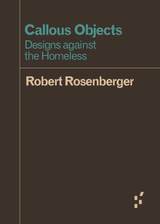 Callous Objects: Designs against the Homeless
Robert Rosenberger
University of Minnesota Press, 2017 Uncovering injustices built into our everyday surroundings
Callous Objects unearths cases in which cities push homeless people out of public spaces through a combination of policy and strategic design. Robert Rosenberger examines such commonplace devices as garbage cans, fences, signage, and benches—all of which reveal political agendas beneath the surface. Such objects have evolved, through a confluence of design and law, to be open to some uses and closed to others, but always capable of participating in collective ends on a large scale. Rosenberger brings together ideas from the philosophy of technology, social theory, and feminist epistemology to spotlight the widespread anti-homeless ideology built into our communities and enacted in law. Forerunners: Ideas First is a thought-in-process series of breakthrough digital publications. Written between fresh ideas and finished books, Forerunners draws on scholarly work initiated in notable blogs, social media, conference plenaries, journal articles, and the synergy of academic exchange. This is gray literature publishing: where intense thinking, change, and speculation take place in scholarship.
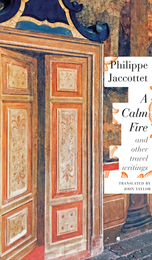 A Calm Fire: and Other Travel Writings
Philippe Jaccottet
Seagull Books, 2018 In these times of heartbreaking violence, clashing religions, and a seemingly never-ending narrative of dichotomy between East and West, wonder at the religion and culture of the Middle East can be in short supply. However, the lyrical and philosophical travel writing in Swiss poet Philippe Jaccottet’s Calm Fire rekindles it, lifting us out of our ordinary locales and stories of violent conflict in the Middle East. Jaccottet’s poetic descriptions explore the rich cultural worlds of Syria, Lebanon, Egypt, and Israel, giving us uncommon glimpses into countries so often associated with turmoil, death and destruction. Expressing a poet’s admiration for the ecstasies of faith and a philosopher’s skepticism of these seemingly transformative feelings, Jaccottet dives deep into the religious cultures of the places he visits.
Ultimately, whether in his native Swiss Alps or among the cedars of Lebanon, the same question pervades Philippe Jaccottet’s work: How should we live? More than a simple palliative to a depressing news cycle, Calm Fire captures a true sense of place by celebrating and pondering ways of life through the immersive experience of travel.
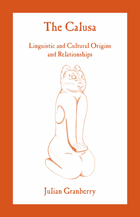 The Calusa: Linguistic and Cultural Origins and Relationships
Julian Granberry
University of Alabama Press, 2012 Normal0falsefalsefalseMicrosoftInternetExplorer4 Normal0falsefalsefalseEN-USX-NONEX-NONEMicrosoftInternetExplorer4 Presents a full phonological and morphological analysis of the total corpus of surviving Calusa language data left by a literate Spanish captive held by the Calusa from his early youth to adulthood
The linguistic origins of Native American cultures and the connections between these cultures as traced through language in prehistory remain vexing questions for scholars across multiple disciplines and interests. Native American linguist Julian Granberry defines the Calusa language, formerly spoken in southwestern coastal Florida, and traces its connections to the Tunica language of northeast Louisiana. Archaeologists, ethnologists, and linguists have long assumed that the Calusa language of southwest Florida was unrelated to any other Native American language. Linguistic data can offer a unique window into a culture’s organization over space and time; however, scholars believed the existing lexical data was insufficient and have not previously attempted to analyze or define Calusa from a linguistic perspective. In The Calusa: Linguistic and Cultural Origins and Relationships, Granberry presents a full phonological and morphological analysis of the total corpus of surviving Calusa language data left by a literate Spanish captive held by the Calusa from his early youth to adulthood. In addition to further defining the Calusa language, this book presents the hypothesis of language-based cultural connections between the Calusa people and other southeastern Native American cultures, specifically the Tunica. Evidence of such intercultural connections at the linguistic level has important implications for the ongoing study of life among prehistoric people in North America. Consequently, this thoroughly original and meticulously researched volume breaks new ground and will add new perspectives to the broader scholarly knowledge of ancient North American cultures and to debates about their relationships with one another.
 Calvert Casey: The Collected Stories
Calvert Casey
Duke University Press, 1998 Hailed as a literary relative of Kafka and Poe by his Italian and Cuban contemporaries, Calvert Casey and his enthralling work have until now remained eclipsed in the United States. This collection brings all of Casey’s powerful short stories and a fragment of an unfinished novel to an English-speaking audience for the first time. Exploring the human condition through poetically unique yet torturous views of the mind, Casey was a renegade artist whose work perceives reality as a smoke screen behind which Truth is hidden. He intended his fiction to disturb and subvert standard, plot-driven views of life. Born in the United States, Casey was raised in Cuba and spent most of his life there and in Europe. He chose Spanish as his primary artistic tongue. A member of the intelligentsia surrounding Castro in the early years of the revolution, he was eventually exiled—and in 1969 committed suicide in Rome at the age of forty-five. Although most of his luminous stories are set in Havana, his is not a touristy, picturesque landscape but an often strange and nightmarish theater of human passions, inhabited by figures—silhouettes, really—that live on the edge of normality. This volume, which showcases Casey’s mastery of the skill of indirect and gradual revelation, is the most complete to appear in any language and includes a biographical and critical introduction written by Ilan Stavans, the noted novelist and scholar of Hispanic culture. Readers interested in the art of fiction and in the complexities of the human psyche will find Casey’s work irresistible.
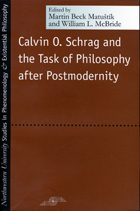 Calvin O. Schrag and the Task of Philosophy After Postmodernity
Martin Beck Matustik and William Leon McBride
Northwestern University Press, 2002 Devoted to the most important American Continental philosopher of his generation and one of the discipline's founding fathers, and featuring some of the field's
most distinguished luminaries, this collection is a critical document in Continental philosophy, reflecting its recent history, its present state, and its debt to Calvin O. Schrag. Taking up themes central to Schrag's own philosophical concerns, these essays refer throughout to his salient "interventions" in the dialogue of late-twentieth-century thought characterized as "postmodernity." The authors address, implicitly or directly, the question of philosophy's role and responsibility, or "task."
The volume begins with an overview of this task and of Schrag's contributions to it, written from the perspective of a resolute defender of the phenomenological tradition that Schrag's work has extended and reconfigured. The essays are organized around the four conceptual figures widely considered Schrag's most significant and original philosophical achievements: transversal rationality, the self after post-modernity, the fourth cultural value sphere, and communication praxis. Following and expanding on the implications of these themes, the authors focus on topics ranging from Cartesian rationality to Foucauldian rational relativism; from transcendence in relation to the self to the Schragean self's connections with discourse, action, and community; from religion's disruptive presence in contemporary philosophy to recent developments in the philosophy of language. The book also contains Schrag's responses to many of the works in the collection.
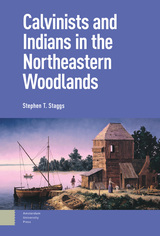 Calvinists and Indians in the Northeastern Woodlands
Stephen Staggs
Amsterdam University Press, 2023 In Calvinists and Indians in the Northeastern Woodlands, Stephen T. Staggs analyzes the impact of the Dutch Reformation upon the cross-cultural relations between those living in and around New Netherland. Staggs shows that Native Americans and New Netherlanders hunted, smoked, ate, and drank together, shared their faith while traveling in a canoe, and slept in each other’s bedrooms. Such details emerge in documents written by New Netherlanders like Megapolensis. Author of the most accurate account of the Kanien'kehá:ka (Mohawks) by a Dutch Reformed minister, Megapolensis provides a window into the influence and limits of the Dutch Reformation upon the dynamic, multifaceted relationships that developed in the early modern Northeastern Woodlands.
Megapolensis came of age when Dutch Reformed theologians looked to the Bible to incorporate Indians into a Reformed worldview. In so doing, they characterized Indians as “blind Gentiles” to whom the Dutch were being called, by God, to present the gospel through the preaching of the Bible and the Christian conduct of colonists, which necessitated social interaction. This characterization ultimately informed the instructions given to those heading to New Netherland, raised expectations among the clergy and lay chaplains who served in the colony, and prefigured the reciprocal, intimate relationships that developed between Indians and New Netherlanders during the seventeenth and eighteenth centuries.
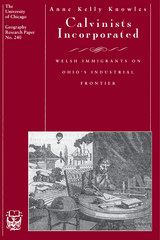 Calvinists Incorporated: Welsh Immigrants on Ohio's Industrial Frontier
Anne Kelly Knowles
University of Chicago Press, 1996 Bringing immigrants onstage as central players in the drama of rural
capitalist transformation, Anne Kelly Knowles traces a community of
Welsh immigrants to Jackson and Gallia counties in southern Ohio. After
reconstructing the gradual process of community-building, Knowles
focuses on the pivotal moment when the immigrants became involved with
the industrialization of their new region as workers and investors in
Welsh-owned charcoal iron companies. Setting the southern Ohio Welsh in
the context of Welsh immigration as a whole from 1795 to 1850, Knowles
explores how these strict Calvinists responded to the moral dilemmas
posed by leaving their native land and experiencing economic success in
the United States.
Knowles draws on a wide variety of sources, including obituaries and
community histories, to reconstruct the personal histories of over 1,700
immigrants. The resulting account will find appreciative readers not
only among historical geographers, but also among American economic
historians and historians of religion.
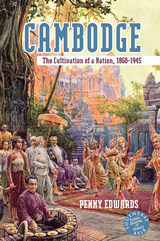 Cambodge: The Cultivation of a Nation, 1860-1945
Penny Edwards
University of Hawaii Press, 2007 This strikingly original study of Cambodian nationalism brings to life eight turbulent decades of cultural change and sheds new light on the colonial ancestry of Pol Pot’s murderous dystopia. Penny Edwards recreates the intellectual milieux and cultural traffic linking Europe and empire, interweaving analysis of key movements and ideas in the French Protectorate of Cambodge with contemporary developments in the Métropole. From the naturalist Henri Mouhot’s expedition to Angkor in 1860 to the nationalist Son Ngoc Thanh’s short-lived premiership in 1945, this history of ideas tracks the talented Cambodian and French men and women who shaped the contours of the modern Khmer nation. Their visions and ambitions played out within a shifting landscape of Angkorean temples, Parisian museums, Khmer printing presses, world’s fairs, Buddhist monasteries, and Cambodian youth hostels. This is cross-cultural history at its best.
With its fresh take on the dynamics of colonialism and nationalism, Cambodge: The Cultivation of a Nation will become essential reading for scholars of history, politics, and society in Southeast Asia. Edwards’ nuanced analysis of Buddhism and her consideration of Angkor’s emergence as a national monument will be of particular interest to students of Asian and European religion, museology, heritage studies, and art history. As a highly readable guide to Cambodia’s recent past, it will also appeal to specialists in modern French history, cultural studies, and colonialism, as well as readers with a general interest in Cambodia.
 Cambodia's Trials: Contrasting Visions of Truth, Transitional Justice and National Recovery
Edited by Robin Biddulph and Alexandra Kent
National University of Singapore Press, 2023 New insights into understanding how Cambodia grapples with its traumatic historical past.
More than four decades have passed since the end of Khmer Rouge rule in Cambodia in 1979. Even so, the country is still coming to terms with the destruction wrought by the Khmer Rouge during both the time they were in power and during the period of guerrilla resistance that lasted until 1998. The Khmer Rouge Tribunal, or the Extraordinary Chambers in the Court of Cambodia (ECCC), was established in 2006 to bring the Khmer Rouge leadership to justice. In many ways a product of the 1990s, when liberal democracy appeared to be on the rise both in Cambodia and internationally, the ECCC was imagined as a transitional justice initiative that would help ease the transition to liberal democracy.
The ECCC has long been the focus of scholarly attention in Cambodia’s recovery, but this compelling study argues that such an approach is dated, noting that the political circumstances in which the ECCC was born have since changed profoundly, both globally and locally. Cambodia’s current situation can no longer be analyzed solely in terms of transitional justice narratives or the work of the ECCC, and other ways in which Cambodians have come to terms with their past and built new lives must be considered. By decentering the ECCC in the scholarly narrative of Cambodia’s recovery, the volume’s authors offer fascinating new insights into the Khmer Rouge period and more recent years of social, cultural, and political change in Cambodia.
 The Cambridge Cockpit and the Paradoxes of Fatigue, 1940–1977
David Bloor
University of Chicago Press, 2025 The story of a unique and controversial wartime study of pilot fatigue.
During World War II, members of the Cambridge Psychology Laboratory were commissioned to study pilot fatigue. They set up a Spitfire cockpit in the laboratory, turned it into a piece of laboratory apparatus, and carried out a series of important experiments that appeared to dramatically confirm the dangers of fatigue. Historians of psychology are aware of this episode, but the experiments, the events surrounding them, and the scientific reasoning involved have never been studied in detail. By going into the episode in depth, and by looking behind the scenes at archival material, David Bloor offers an analysis that is both original and more penetrating than anything that has been said before on the topic.
Bloor describes the Cockpit experiments themselves before turning to the theoretical interpretation of the results and the intellectual resources that informed how they were viewed. Bloor then explains a major empirical and theoretical challenge to the Cambridge Cockpit work drawn from a field study of landing accidents apparently showing that fatigue-effects were operationally negligible. Bloor delves into the consequences of this challenge, and the Cambridge reaction to it, in the post-war years. The analysis is deepened by comparison with the corresponding wartime work on fatigue carried out both in Germany and the United States. As the author demonstrates, even today the Cambridge Cockpit experiments pose a challenge to the current understanding of pilot fatigue.
 The Cambridge Songs (Carmina Cantabrigiensia)
Jan M. Ziolkowski
Harvard University Press, 2020 The Cambridge Songs, from the Latin Carmina Cantabrigiensia, is the most important anthology of songs from before the thirteenth-century Carmina Burana. It offers the only major surviving anthology of Latin lyric poems from between Charlemagne and the Battle of Hastings. It contains panegyrics and dirges, political poems, comic tales, religious and didactic poems, and poetry of spring and love. Was it a school book for students, or a songbook for the use of professional entertainers? The greatest certainty is that the poems were composed in the learned language, and that they were associated with song. The collection is like the contents of an eleventh-century jukebox or playlist of top hits from more than three centuries.
This edition and translation comprises a substantial introduction, the Latin texts and English prose in carefully matched presentation, and extensive commentary, along with appendices, list of works cited, and indices.
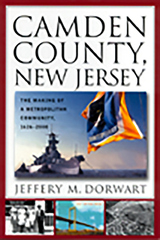 Camden County, New Jersey: The Making of a Metropolitan Community, 1626-2000
Dorwart, Jeffery M
Rutgers University Press, 2001 In this book, Jeffery M. Dorwart chronicles more than three centuries of Camden County history. He takes readers on a journey, from the earliest days as a Native American settlement, to the county's important roles in the Revolutionary and Civil Wars, Camden City's booms and busts, the county's increasing suburbanization, and concluding with current inner-city revitalization efforts. Dorwart details how the earliest European settlers radically changed the local Native American culture and introduced black slavery. In the Revolutionary War, the county's location directly across the Delaware River from Philadelphia placed it at the crossroads of the American Revolution. Dorwart examines the county's conflicted roles during the Civil War, when the older agrarian population, which held traditional social and economic ties to the slave-owing South, clashed with the increasingly industrialized interests of the urban waterfront, which showed strong Unionist tendencies. He explores the changing demographics of the area as waves of European immigrants came to work in the factories. He surveys the rise and fall of first Camden City, then of the suburbs, as both areas experienced population ebbs and flows. Finally, Dorwart looks at the revitalization efforts of 2000 when Camden County began efforts to reinvent the riverfront community where it all began.
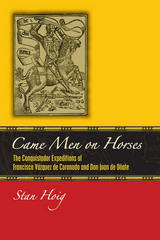 Came Men on Horses: The Conquistador Expeditions of Francisco Vásquez de Coronado and Don Juan de Oñate
Stan Hoig
University Press of Colorado, 2013 Guided by myths of golden cities and worldly rewards, policy makers, conquistador leaders, and expeditionary aspirants alike came to the new world in the sixteenth century and left it a changed land. Came Men on Horses follows two conquistadors—Francisco Vázquez de Coronado and Don Juan de Oñate—on their journey across the southwest. Driven by their search for gold and silver, both Coronado and Oñate committed atrocious acts of violence against the Native Americans, and fell out of favor with the Spanish monarchy. Examining the legacy of these two conquistadors Hoig attempts to balance their brutal acts and selfish motivations with the historical significance and personal sacrifice of their expeditions. Rich human details and superb story-telling make Came Men on Horses a captivating narrative scholars and general readers alike will appreciate.
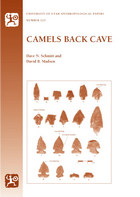 Camels Back Cave: Anthropological Paper 125
Dave N. Schmitt
University of Utah Press, 2005 University of Utah Anthropological Paper No. 125 Camels Back Cave is in an isolated limestone ridge on the southern edge of the Great Salt Lake Desert. Recent archaeological investigations there have exposed a series of stratified deposits spanning the entire Holocene era (10,000 BP–present), deposits that show intermittent human occupations dating back through the past 7,600 years. Most human visits to the cave were brief—many likely representing overnight stays—and visitors did not dig pits or move sediment. As a result, fieldworkers were able to recognize and remove thirty-three stratigraphic horizons; radiocarbon analysis provided a pristine, high-resolution chronological sequence of human use. The brevity of visits and the undisturbed nature of the deposits also allowed researchers to identify portions of eight “living surfaces” where they exposed and mapped artifacts and ecofacts across contiguous blocks of units.
Aside from presenting model field techniques, this volume provides new and unique information on regional Holocene climates and biotic communities, cave taphonomy and small mammal hunting, as well as updated human chronologies for Great Basin occupation.
 The Camel's Nose: Memoirs Of A Curious Scientist
Knut Schmidt-Nielsen
Island Press, 1998 "It has been said that the primary function of schools is to impart enough facts to make children stop asking questions. Those with whom the schools do not succeed become scientists." So begins Knut Schmidt-Nielsen in his autobiography The Camel's Nose, a fascinating reflection on his life and more than forty years of studies and adventures in locations ranging from the Sahara Desert to the Arctic Circle.One of the world's most prominent animal physiologists, Schmidt-Nielsen has throughout his career sought answers to seemingly simple questions: How can camels go for days without drinking? Do marine birds drink seawater? Why don't penguins' feet freeze? How do animals find food and water in the desert? By asking questions about the animals around us, we learn more about who we are, and the answers Schmidt-Nielsen discovered have not only helped us understand animals, but have provided us with insight into fundamental principles of life and survival.In The Camel's Nose, Schmidt-Nielsen relates the story of his life and work, interweaving tales of his childhood in Scandinavia and his personal and professional struggles in the United States with first-hand accounts of field work in Africa, Australia, and around the globe. He recounts how he sought out peculiar problems of animal form and function and details his remarkable discoveries. He also provides a glimpse into the personal life of a world-renowned scientist, from the rewards and difficulties of growing up in a family of scientists to the challenges of his early career to the redeeming power of love later in life.The Camel's Nose reveals a passionate curiosity for seeking out and finding answers. The reader is fortunate to share in Schmidt-Nielsen's lifelong quest and to be given an inside look into the life of a scientist who has witnessed the better part of a century of breathtaking discovery and change.
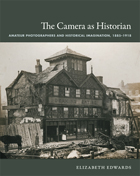 The Camera as Historian: Amateur Photographers and Historical Imagination, 1885-1918
Elizabeth Edwards
Duke University Press, 2012 In the late nineteenth century and early twentieth, hundreds of amateur photographers took part in the photographic survey movement in England. They sought to record the material remains of the English past so that it might be preserved for future generations. In The Camera as Historian, the groundbreaking historical and visual anthropologist Elizabeth Edwards works with an archive of nearly 55,000 photographs taken by 1,000 photographers, mostly unknown until now. She approaches the survey movement and its social and material practices ethnographically. Considering how the amateur photographers understood the value of their project, Edwards links the surveys to concepts of leisure, understandings of the local and the national, and the rise of popular photography. Her examination of how the photographers negotiated between scientific objectivity and aesthetic responses to the past leads her to argue that the survey movement was as concerned with the conditions of its own modernity and the creation of an archive for an anticipated future as it was nostalgic about the imagined past. Including more than 120 vibrant images, The Camera as Historian offers new perspectives on the forces that shaped Victorian and Edwardian Britain, as well as on contemporary debates about cultural identity, nationality, empire, material practices, and art.
 The Camera Does the Rest: How Polaroid Changed Photography
Peter Buse
University of Chicago Press, 2016 In a world where nearly everyone has a cellphone camera capable of zapping countless instant photos, it can be a challenge to remember just how special and transformative Polaroid photography was in its day. And yet, there’s still something magical for those of us who recall waiting for a Polaroid picture to develop. Writing in the context of two Polaroid Corporation bankruptcies, not to mention the obsolescence of its film, Peter Buse argues that Polaroid was, and is, distinguished by its process—by the fact that, as the New York Times put it in 1947, “the camera does the rest.”
Polaroid was often dismissed as a toy, but Buse takes it seriously, showing how it encouraged photographic play as well as new forms of artistic practice. Drawing on unprecedented access to the archives of the Polaroid Corporation, Buse reveals Polaroid as photography at its most intimate, where the photographer, photograph, and subject sit in close proximity in both time and space—making Polaroid not only the perfect party camera but also the tool for frankly salacious pictures taking.
Along the way, Buse tells the story of the Polaroid Corporation and its ultimately doomed hard-copy wager against the rising tide of digital imaging technology. He explores the continuities and the differences between Polaroid and digital, reflecting on what Polaroid can tell us about how we snap photos today. Richly illustrated, The Camera Does the Rest will delight historians, art critics, analog fanatics, photographers, and all those who miss the thrill of waiting to see what develops.
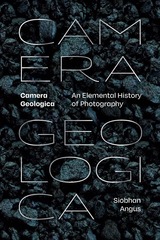 Camera Geologica: An Elemental History of Photography
Siobhan Angus
Duke University Press, 2024 In Camera Geologica Siobhan Angus tells the history of photography through the minerals upon which the medium depends. Challenging the emphasis on immateriality in discourses on photography, Angus focuses on the inextricable links between image-making and resource extraction, revealing how the mining of bitumen, silver, platinum, iron, uranium, and rare earth elements is a precondition of photography. Photography, Angus contends, begins underground and, in photographs of mines and mining, frequently returns there. Through a materials-driven analysis of visual culture, she illustrates histories of colonization, labor, and environmental degradation to expose the ways in which photography is enmeshed within and enables global extractive capitalism. Angus places nineteenth-century photography in dialogue with digital photography and its own entangled economies of extraction, demonstrating the importance of understanding photography’s complicity in the economic, geopolitical, and social systems that order the world.
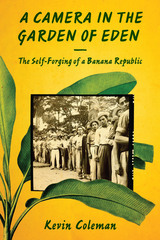 A Camera in the Garden of Eden: The Self-Forging of a Banana Republic
By Kevin Coleman
University of Texas Press, 2016 In the early twentieth century, the Boston-based United Fruit Company controlled the production, distribution, and marketing of bananas, the most widely consumed fresh fruit in North America. So great was the company’s power that it challenged the sovereignty of the Latin American and Caribbean countries in which it operated, giving rise to the notion of company-dominated “banana republics.” In A Camera in the Garden of Eden, Kevin Coleman argues that the “banana republic” was an imperial constellation of images and practices that was checked and contested by ordinary Central Americans. Drawing on a trove of images from four enormous visual archives and a wealth of internal company memos, literary works, immigration records, and declassified US government telegrams, Coleman explores how banana plantation workers, women, and peasants used photography to forge new ways of being while also visually asserting their rights as citizens. He tells a dramatic story of the founding of the Honduran town of El Progreso, where the United Fruit Company had one of its main divisional offices, the rise of the company now known as Chiquita, and a sixty-nine day strike in which banana workers declared their independence from neocolonial domination. In telling this story, Coleman develops a new set of conceptual tools and methods for using images to open up fresh understandings of the past, offering a model that is applicable far beyond this pathfinding study.
 Camera Indica: The Social Life of Indian Photographs
Christopher Pinney
University of Chicago Press, 1997 A wedding couple gazes resolutely at viewers from the wings of a butterfly; a portrait surrounded by rose petals commemorates a recently deceased boy.
These quiet but moving images represent the changing role of photographic portraiture in India, a topic anthropologist Christopher Pinney explores in Camera Indica. Studying photographic practice in India, Pinney traces photography's various purposes and goals from colonial through postcolonial times. He identifies three key periods in Indian portraiture: the use of photography under British rule as a quantifiable instrument of measurement, the later role of portraiture in moral instruction, and the current visual popular culture and its effects on modes of picturing. Photographic culture thus becomes a mutable realm in which capturing likeness is only part of the project. Lavishly illustrated, Pinney's account of the change from depiction to invention uncovers fascinating links between these evocative images and the society and history from which they emerge.
Camera Lake
Alex Pickett
University of Wisconsin Press, 2024 Fleeing her family, a woman finds unexpected solace in an empty hotel. Following a shattering professional failure, a therapist becomes convinced someone is watching his every move. A coach’s disciplinary tactic doesn’t so much backfire as it implodes his players’ lives. Inhabiting a (mostly) midwestern landscape, Alex Pickett’s characters specialize in breaking rules. Believing themselves to be good people, they try to bend their situations to fit their needs or fulfill their desires. The results are rarely completely disastrous or successful, but are tinged with a humor that rides comfortably alongside embarrassment, regret, and longing—and in the process remind us that it is achingly hard to live up to expectations.
 Camera Obscura at Thirty, Volume 21
Amelie Hastie , Lynne Joyrich, Constance Penley, Sasha Torres, Patricia White, Sharon Willis, eds.
Duke University Press In honor of the journal’s thirtieth anniversary, this special issue of Camera Obscura considers the past and future of the intertwined topics and disciplines that comprise its subtitle: feminism, culture, and media studies. Contributors examine the ways in which feminism, culture, and media studies intersect with other discourses, disciplines, and practices in meaningful ways. Considering the import of past modes of theoretical, historical, and textual inquiry, the issue asks what theories, methodologies, objects, texts, and practices should be revived and reinvigorated for future study. Others share their characterizations of the changes in feminist culture and media studies over the last thirty years, discussing the ways in which those changes are related and/or removed from the changes within the media and cultural practices themselves.
Camera Obscura, Camera Lucida: Essays in Honor of Annette Michelson
Edited by Richard Allen and Malcolm Turvey
Amsterdam University Press, 2003 Annette Michelson’s contributions to art and film criticism over the last three decades have been unparalleled. This volume honors her unique legacy with original essays by some of the many scholars who have been influenced by her work. Some continue her efforts to develop theoretical frameworks for understanding modernist art, while others practice her form of interdisciplinary criticism in relation to avant-garde and modernist art works and artists. Still others investigate and evaluate Michelson’s work itself. All in some way pay homage to her extraordinary contribution.
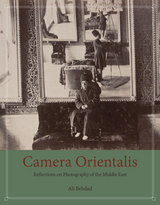 Camera Orientalis: Reflections on Photography of the Middle East
Ali Behdad
University of Chicago Press, 2016 In the decades after its invention in 1839, photography was inextricably linked to the Middle East. Introduced as a crucial tool for Egyptologists and Orientalists who needed to document their archaeological findings, the photograph was easier and faster to produce in intense Middle Eastern light—making the region one of the original sites for the practice of photography. A pioneering study of this intertwined history, Camera Orientalis traces the Middle East’s influences on photography’s evolution, as well as photography’s effect on Europe’s view of “the Orient.”
Considering a range of Western and Middle Eastern archival material from the late nineteenth and early twentieth centuries, Ali Behdad offers a rich account of how photography transformed Europe’s distinctly Orientalist vision into what seemed objective fact, a transformation that proved central to the project of European colonialism. At the same time, Orientalism was useful for photographers from both regions, as it gave them a set of conventions by which to frame exotic Middle Eastern cultures for Western audiences. Behdad also shows how Middle Eastern audiences embraced photography as a way to foreground status and patriarchal values while also exoticizing other social classes.
An important examination of previously overlooked European and Middle Eastern photographers and studios, Camera Orientalis demonstrates that, far from being a one-sided European development, Orientalist photography was the product of rich cultural contact between the East and the West.
Camering: Fernand Deligny on Cinema and the Image
Marlon Miguel
Amsterdam University Press, 2022 Fernand Deligny (1913-1996), ‘poet and ethologist’, is mostly known for his work with autistic children and for his influence on the revolutions in French post-war psychiatry. Though neither director nor a theorist of the image, cinema is constantly called into his social, pedagogical, and clinical experimentations. More interested in the processes of making, he distinguishes ‘camering’ from filming, thus emphasizing not the finished film but a ‘film to come’. This volume provides Deligny’s essential corpus on cinema and the image. It shows both the role of cameras in many of his experimental ‘attempts’ with delinquents and autistic children and his highly speculative reflections on image.
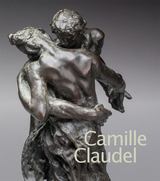 Camille Claudel
Emerson Bowyer
J. Paul Getty Trust, The, 2023 Abundantly illustrated, this catalogue is a fascinating and comprehensive reevaluation of the French modernist sculptor Camille Claudel.
Camille Claudel (1864–1943) was among the most daring and visionary sculptors of the late nineteenth century. Although much attention has been paid to her tumultuous life—her affair with her mentor, Auguste Rodin; the premature end to her career; her thirty-year institutionalization in an asylum—her art remains little known outside of France. Memorably praised by critic Octave Mirbeau in 1895 as “a revolt of nature: a woman of genius,” Claudel was celebrated for her brilliance during a time when women sculptors were rare.
Featuring more than two hundred photographs along with contributions from leading experts, this publication accompanies the first comprehensive survey of Claudel’s oeuvre in nearly forty years. With essays exploring the many facets of her life, work, and reception; a biography; commentary by American sculptor Kiki Smith; and a fascinating appendix of documents written by Claudel and her contemporaries, this volume reevaluates the artist’s work on its own merits and repositions her legacy within a more complex genealogy of modernism.
This volume, copublished with The Art Institute of Chicago, accompanies an exhibition on view at The Art Institute of Chicago from October 7, 2023, to February 19, 2024 and at the J. Paul Getty Museum at the Getty Center from April 2 to July 21, 2024.
 Camille's Lakou: A Novel
Marie Léticée; Translated from French and Guadeloupean Kreyol by Kevin Meehan
Vanderbilt University Press, 2025 Camille has worked her way up from the Guadeluopean lakou where she was born and raised to the heights of Orlando, where she is a successful motivational speaker. Her assistant, Evelyn, is struggling as a single mother, especially since she has been keeping the existence of her son a secret from her family in Jamaica. As Camille relates the story of her life to Evelyn, she urges Evelyn to see her difficult life as one of great fortune—“My girl, a woman falls, but she never despairs”—and to fully share her joys and successes with her loved ones.
Camille’s Lakou tells the story of Camille, a young Caribbean girl living with her single‑parent mother in a 1960s urbanized zone at the edge of Pointe‑à‑Pitre, Guadeloupe, following her through her adult life as a Caribbean migrant in Florida. Author Marie Léticée explores neocolonial culture clash and identity conflict themes that will be familiar to readers of the Francophone Caribbean coming‑of‑age novel and its revisions by women writers such as Capécia, Lacrosil, Manicom, Schwarz‑Bart, Condé, Pineau, and others. Léticée makes it her own by fleshing out a time and place not well‑represented in Guadeloupean literature. While previous bildungsromane from the writers mentioned here typically focus on rural peasant or urban bourgeois settings, Camille’s Lakou shifts location to an impoverished urban environment. “Lakou” is translated as “courtyard” or, more colloquially, “yard.” The author explores the culture and politics of lakou society while raising the issue of how this social dynamic is transformed through the impact of globalization and dispersal into a diasporic experience outside the island milieu of Camille’s childhood.
In a collaborative translation effort between the author and Kevin Meehan, Camille’s Lakou will bring the realities and joys of Léticée’s Guadeloupe to an English audience for the first time.
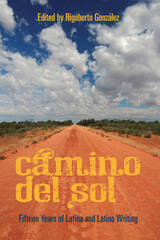 Camino del Sol: Fifteen Years of Latina and Latino Writing
Edited by Rigoberto González
University of Arizona Press, 2010 Since 1994, the Camino del Sol series has been one of the premier vehicles for Latina/o literary voices. Launched under the auspices of Chicana/o luminary Ray Gonzalez, it quickly established itself in both the Latina/o community and the publishing world as it garnered awards for its outstanding writing.
Featuring both established writers and first-time authors, Camino del Sol has published poetry and prose that convey something about the Latina/o experience—works that tap into universal truths through a distinct cultural lens. This volume celebrates fifteen years of books by bringing together some of the series’ best work, such as poetry from Francisco X. Alarcón, fiction from Christine Granados, and nonfiction from Luis Alberto Urrea. These voices echo the entire spectrum of Latina/o writing, from Chicana/o to Puerto Rican to Brazilian-American, and take in themes ranging from migration to gender.
Awards bestowed upon Camino del Sol titles include the PEN/Beyond Margins Award to Richard Blanco’s Directions to the Beach of the Dead; Before Columbus Foundation American Book Awards to Diana García’s When Living Was a Labor Camp and Luis Alberto Urrea’s Nobody’s Son; International Latino Book Awards to Pat Mora’s Adobe Odes and Kathleen Alcalá’s The Desert Remembers My Name; the Premio Aztlán literary prize to Sergio Troncoso’s The Last Tortilla; and the PEN Oakland-Josephine Miles National Literary Award to Kathleen de Azevedo’s Samba Dreamers. All of these works are represented in this outstanding collection.
In a short span of time, Camino del Sol has cultivated an admirable and sizeable list of distinguished contemporary authors—and even garnered the first National Book Critics Circle Award for a Chicana/o for Juan Felipe Herrera’s Half of the World in Light. Camino del Sol: Fifteen Years of Latina and Latino Writing is a benchmark for the series and a wonderful introduction to the world of Latina/o literature.
 Camouflage and Mimicry
Denis Owen
University of Chicago Press, 1982 Many organisms, to avoid being noticed, combine color and shape to create elaborate and highly effective disguises. Some have evolved uncanny likenesses to such elements of their environment as leaves and rocks. Others use color and shape in more spectacular displays simply to frighten a predator or to warn that they are poisonous. In turn, and to complicate matters for their enemies, some edible animals have evolved a striking likeness to poisonous animals that use color as a warning. Though such camouflage and mimicry is most widely and brilliantly evident among the insects—where sometimes only the experienced naturalist can see through the deception—it has also evolved in plants and several groups of vertebrates, including birds, snakes, and salamanders.
Camouflage and Mimicry describes the remarkably varied attempts of species to deceive their predators and prey. It illustrates a group of strategies which help to increase an individual's chances of survival.
A Camouflage of Specimens and Garments
Jennifer Militello
Tupelo Press, 2016 In her third full-length collection of poems, Jennifer Militello weaves fragmentary letters addressing illness and struggle through ventriloquisms of mythological heroes and dead composers, ancient goddesses and murdered girls. Stylized “dictionaries” open into lay-ered definitions meant like magical clothing or tutelary amulets to provide shelter from a world that cannot be controlled. As the poet stitches together a plethoric identity to ex-plore disguises, A Camouflage of Specimens and Garments casts a smokescreen of selves.
Camp Chase and the Evolution of Union Prison Policy
Roger Pickenpaugh
University of Alabama Press, 2007 Discusses an important yet often misunderstood topic in American History
Camp Chase was a major Union POW camp and also served at various times as a Union military training facility and as quarters for Union soldiers who had been taken prisoner by the Confederacy and released on parole or exchanged. As such, this careful, thorough, and objective examination of the history and administration of the camp will be of true significance in the literature on the Civil War.
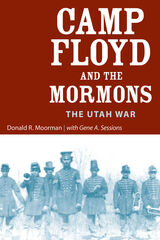 Camp Floyd and the Mormons: The Utah War
Donald R Moorman
University of Utah Press, 1992 Camp Floyd and the Mormons traces the history of the sojourn of “Johnston’s Army” in Utah Territory from the beginning of the Utah War in 1857 through the abandonment of Camp Floyd in Cedar Valley west of Utah Lake at the outbreak of the Civil War. The book describes the relationship between the invading army and the local Mormon population, gives an account of Indian affairs in Utah, and describes the activities of federal officials in Utah during that volatile period. Completed posthumously by Gene Sessions, Moorman’s colleague at Weber State University, Camp Floyd and the Mormons is a comprehensive analysis of the history of frontier Utah as a decade of isolation ended and confrontations with the United States government began. Moorman had unprecedented access to materials in the LDS Church Archives on subjects ranging from the Mountain Meadows Massacre to the Mormon responses to the presence of the army in Utah from 1858 through 1861. First published by the University of Utah Press in 1992, this reprint edition includes a new introduction by Gene Sessions in which he recounts Moorman’s research adventures during the 1960s "in the bowels of the old Church Administration Building, where Joseph Fielding Smith and A. Will Lund watched over the contents of the archives like wide-eyed mother hens."
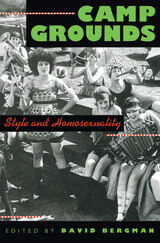 Camp Grounds: Style and Homosexuality
David Bergman
University of Massachusetts Press, 1993 The concept of camp has never been easy to define. Derived from the French verb camper, "to pose," it has been variously interpreted as a style that favors exaggeration, an ironic attitude toward the cultural mainstream, and a form of aestheticism that celebrates artifice over beauty. At the same time, camp has been long associated with homosexual culture, or at least with a self-conscious eroticism that questions traditional gender constructions.
The sixteen essays on camp included in this book explore further the relationship between style and homosexuality, showing how camp has made its way into every aspect of our cultural lives: theater, popular music, opera, film, and literature. Beginning with an overview of what camp is, where it came from, and how it operates, the chapter addresses topics ranging from the "high camp" of Whitman and Proust to the "low camp" of drag queen culture and gay fanzines. Together they carry forward a conversation that began more than twenty-five years ago, before Stonewall and AIDS, when Susan Sontag published her memorable "Notes on Camp."
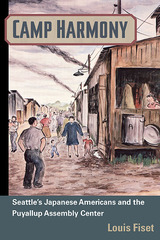 Camp Harmony: Japanese American Internment and the Puyallup Assembly Center
Louis Fiset
University of Illinois Press, 2009 This book is the first full portrait of a single assembly center--located at the Western Washington fairgrounds at Puyallup, outside Seattle--that held Japanese Americans for four months prior to their transfer to a relocation center during World War II. Gathering archival evidence and eyewitness accounts, Louis Fiset reconstructs the events leading up to the incarceration as they unfolded on a local level: arrests of Issei leaders, Nikkei response to the war dynamics, debates within the white community, and the forced evacuation of the Nikkei community from Bainbridge Island. The book explores the daily lives of the more than seven thousand inmates at "Camp Harmony," detailing how they worked, played, ate, and occasionally fought with each other and with their captors. Fiset also examines the inmates' community life, health care, and religious activities. He includes details on how army surveyors selected the center's site, oversaw its construction, and managed the transfer of inmates to the more permanent Minidoka Relocation Center in Idaho.
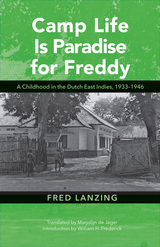 Camp Life Is Paradise for Freddy: A Childhood in the Dutch East Indies, 1933–1946
Fred Lanzing
Ohio University Press, 2017 “Children see and hear what is there; adults see and hear what they are expected to and mainly remember what they think they ought to remember,” David Lowenthal wrote in The Past Is a Foreign Country. It is on this fraught foundation that Fred Lanzing builds this memoir of his childhood in a Japanese internment camp for Dutch colonialists in the East Indies during the World War II. When published in the Netherlands in 2007, the book triggered controversy, if not vitriol, for Lanzing’s assertion that his time in the camp was not the compendium of horrors commonly associated with the Dutch internment experience. Despite the angry reception, Lanzing’s account corresponds more closely with the scant historical record than do most camp memoirs. In this way, Lanzing’s work is a substantial addition to ongoing discussions of the politics of memory and the powerful—if contentious—contributions that subjective accounts make to historiography and to the legacies of the past. Lanzing relates an aspect of the war in the Pacific seldom discussed outside the Netherlands and, by focusing on the experiences of ordinary people, expands our understanding of World War II in general. His compact, beautifully detailed account will be accessible to undergraduate students and a general readership and, together with the introduction by William H. Frederick, is a significant contribution to literature on World War II, the Dutch colonial experience, the history of childhood, and Southeast Asian history.
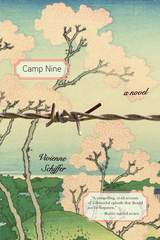 Camp Nine: A Novel
Vivienne Schiffer
University of Arkansas Press, 2011 On February 19, 1942, President Franklin D. Roosevelt signed Executive Order 9066, authorizing the U.S. military to ban anyone from certain areas of the country, with primary focus on the West Coast. Eventually the order was used to imprison 120,000 people of Japanese descent in incarceration camps such as the Rohwer Relocation Center in remote Desha County, Arkansas. This time of fear and prejudice (the U.S. government formally apologized for the relocations in 1982) and the Arkansas Delta are the setting for Camp Nine. The novel's narrator, Chess Morton, lives in tiny Rook Arkansas. Her days are quiet and secluded until the appearance of a "relocation" center built for what was, in effect, the imprisonment of thousands of Japanese Americans. Chess's life becomes intertwined with those of two young internees and an American soldier mysteriously connected to her mother's past. As Chess watches the struggles and triumphs of these strangers and sees her mother seek justice for the people who briefly and involuntarily came to call the Arkansas Delta their home, she discovers surprising and disturbing truths about her family's painful past.
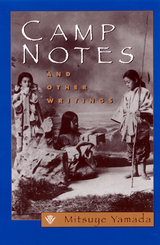 Camp Notes and Other Writings
Yamada, Mitsuye
Rutgers University Press, 1998 Honorable Mention of the 1999 Gustavus Myers Outstanding Book Awards
Two collections by an important Asian American writer -- Camp Notes and Other Poeems and Desert Run: Poems and Stories -- return to print in one volume. Mitsuye Yamada was born in Kyushu, Japan, and raised in Seattle, Washington, until the outbreak of World War II when her family was removed to a concentration camp in Idaho. Camp Notes and Other Writings recounts this experience. Yamada's poetry yields a terse blend of emotions and imagery. Her twist of words creates a twist of vision that make her poetry come alive. The weight of her cultural experience-the pain of being perceived as an outsider all of her life-permeates her work. Yamada's strength as a poet stems from the fact that she has managed to integrate both individual and collective aspects of her background, giving her poems a double impact. Her strong portrayal of individual and collective life experience stands out as a distinct thread in the fabric of contemporary literature by women.
"The core poems of Camp Notes and the title come from the notes I had taken when I was in camp, and it wasn’t published until thirty years after most of it was written. I was simply describing what was happening to me, and my thoughts. But, in retrospect, the collection takes on a kind of expanded meaning about that period in our history. As invariably happens, because Japanese American internment became such an issue in American history, I suppose I will be forever identified as the author of Camp Notes. Of course, I try to show that it’s not the only thing I ever did in my whole life; I did other things besides go to an internment camp during World War II. So, in some ways I keep producing to counteract that one image that gets set in the public mind. At the time that I was writing it, I wasn’t necessarily a political person. Now, when I reread it, even to myself, I think it probably has a greater warning about the dangers of being not aware, not aware of one’s own rights, not aware of helping other people who may be in trouble. I think that it does speak to our present age very acutely." -- Mitsuye Yamada, "You should not be invisible”: An Interview with Mitsuye Yamada, Contemporary Women's Writing, March 2014, Vol. 8 Issue 1 Read the whole interview at: https://academic.oup.com/cww/article/8/1/1/414906/You-should-not-be-invisible-An-Interview-with
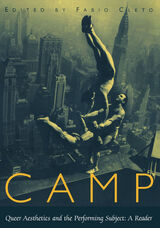 Camp: Queer Aesthetics and the Performing Subject--A Reader
Fabio Cleto, Editor
University of Michigan Press, 1999 This groundbreaking collection addresses the multi-layered issue of camp, whose inexhaustible breadth of reference and theoretical relevance have made it one of the most salient and challenging issues on the contemporary critical stage. Reassessing the role and significance of the finest essays on camp written by leading intellectuals in cultural studies, lesbian and gay studies and queer theory, this critical anthology both "queers" camp as an issue and offers an excellent key to rethinking the history, theory, and practice of camp. The anthology is divided into five thematic/historical sections: Tasting It; Flaunting the Closet; Gender, and Other Spectacles; Pop Camp, Surplus Counter-Value, or the Camp of Cultural Economy; and The Queer Issue. These groupings help the reader situate the critical debates around the subject. Fabio Cleto's introduction brings new theoretical insights to the subject of camp while tracing its history as an object of intellectual and cultural critique and analysis. A comprehensive bibliography that traces the earliest use of the word 'camp' to the present completes this unique and exciting volume. “Is ‘camp’ a kind of irony, an effect of one’s historic vantage point, an art form or an elitist aesthetic? … From landmark early works by Christopher Isherwood and Susan Sontag to influential contemporary pieces by Esther Newton, Andrew Ross and Judith Butler, this anthology encapsulates the philosophical discussion of this slippery postmodern concept.”
--Publishers Weekly
“As an object of critical inquiry, camp has proven notoriously difficult to define. Fabio Cleto takes this difficulty as his point of departure in the most recent anthology of a growing body of scholarly literature on the topic…Cleto resists defining camp [but] does not abandon the task of framing, in a coherent but flexible way, camp as a problematic.”
--Semiotica
“Fabio Cleto’s collection variously associates ‘camp’ with the 1960s, aestheticism, androgyny, cross-dressing, the cultural figure of the dandy, decadence, drag, exaggeration, kitsch, parody, pastiche, postmodernism, the sentimental, and the transvestite… The essayists in Camp disagree freely and fiercely over definitions. This is to be expected in a queer reader, one whose contributors endeavor to ‘read across’ the meanings of camp.”
--The Gay & Lesbian Review
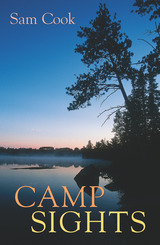 Camp Sights
Sam Cook
University of Minnesota Press, 2002 Unforgettable stories perfect for sharing around the campfire-now in paperback! Camp Sights welcomes you to the intimate beauty of camps-quiet camps for fathers and daughters, familiar camps on a favorite lake with good friends, hunting camps with their rich histories and traditions, serene camps under the starry sky of a summer night, peaceful camps warmed by supper cooking on the stove. You’ll experience the challenges and adventures of life in the North Woods-a chance encounter with Arctic wolves on Canada’s Ellesmere Island, a night on the Gods River on a canoe trip to Hudson Bay, a whiteout storm in the barren lands of the Northwest Territories. But you’ll also learn of the everyday pleasures of the outdoors-stories of steelhead fishing, deer and duck hunting, and unforgettable characters like canoe builder Joe Seliga, legendary trout fisherman Benny Larson, and Ely’s "Jackpine" Bob Cary.Throughout the book, Sam Cook offers insights into the subtleties of the natural world that all too often go unnoticed, inviting you to see your world anew.In 1976 Sam Cook trekked north from his native Kansas to work for an outfitter in the Superior-Quetico canoe country. Now, as the Duluth News-Tribune’s outdoors writer, he uses Duluth, Minnesota, as "base camp" for creating his humorous, powerful, and compassionate columns.
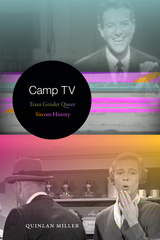 Camp TV: Trans Gender Queer Sitcom History
Quinlan Miller
Duke University Press, 2019 Sitcoms of the 1950s and 1960s are widely considered conformist in their depictions of gender roles and sexual attitudes. In Camp TV Quinlan Miller offers a new account of the history of American television that explains what campy meant in practical sitcom terms in shows as iconic as The Dick Van Dyke Show as well as in more obscure fare, such as The Ugliest Girl in Town. Situating his analysis within the era's shifts in the television industry and the coalescence of straightness and whiteness that came with the decline of vaudevillian camp, Miller shows how the sitcoms of this era overflowed with important queer representation and gender nonconformity. Whether through regular supporting performances (Ann B. Davis's Schultzy in The Bob Cummings Show), guest appearances by Paul Lynde and Charles Nelson Reilly, or scripted dialogue and situations, industry processes of casting and production routinely esteemed a camp aesthetic that renders all gender expression queer. By charting this unexpected history, Miller offers new ways of exploring how supposedly repressive popular media incubated queer, genderqueer, and transgender representations.
 Campaign ’72: The Managers Speak
Ernest R. May
Harvard University Press, 1973 In January 1973, for the first time in American history, principal participants in a major election met to discuss the science and the art of campaign strategy: the planning, calculation, contrivance, miscalculation, and mischance that determine what the electorate sees. Here campaign managers, pollsters, and journalists met to compare notes on their techniques and tactics and on their successes and failures as they reviewed the events of the primaries and election:
the poor decisions made in the face of complex state primary laws;
the decline of Muskie and the rise of McGovern;
the significance of issues versus Nixon's image;
the effects of party reform on the Democratic convention;
the credentials fights;
the twists of strategy during the final months of the campaign;
the way the press covered the campaign and how reporters were treated by the various staffs;
the lessons for 1976 drawn by reporters and campaign people.
The straightforward exchanges took place at the Harvard Conference on Campaign Decision-Making. Eighteen key people participated, including those in the campaigns of Nixon, McGovern, Wallace, Muskie, Humphrey, Jackson, and McCloskey. Four political correspondents--David Broder, James Naughton, Al Otten, and James Perry--expertly guided the conversation, probing for additional insights.
The transcript of the conference--oral history at its best--has been carefully edited and makes absorbing reading. Included are brief sketches of the participants, a chronology of major events of the campaign, tables of campaign statistics, and a full index.
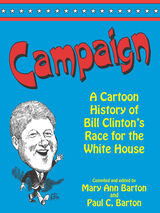 Campaign: A Cartoon History of Bill Clinton's Race for the White House
Mary Ann Barton
University of Arkansas Press, 1993 This fascinating record chronicles Governor Bill Clinton’s 1992 bid for the presidency by gathering editorial cartoons from some of the nation’s premier magazines and newspapers. His meteoric rise from obscure origins as governor of a small southern state to his current position as the world’s most powerful head of state presents political cartoonists with a unique challenge.
For many people, in the United States and abroad, the dramas of the campaign created the character of Clinton. From the Gennifer Flowers debacle to Clinton’s
resurrection at the Democratic National Convention and the triumph of the election win, the incisive cartoons in this collection capture Clinton’s emerging image in a way that no written word can. The forty-five contributing artists use these cartoons to depict the breathtaking and colorful events that only a presidential campaign can produce and offer hours of entertainment for any reader.
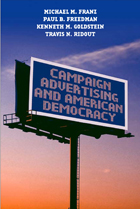 Campaign Advertising and American Democracy
Michael M. Franz, Paul B. Freedman, Kenneth M. Goldstein and Travis N. Ridout
Temple University Press, 2007 It has been estimated that more than three million political ads were televised leading up to the elections of 2004. More than $800,000,000 was spent on TV ads in the race for the White House alone and presidential candidates, along with their party and interest group allies, broadcast over a million ads -- more than twice the number aired before the 2000 elections. What were the consequences of this barrage of advertising?
Were viewers turned off by political advertising to the extent that it disuaded them from voting, as some critics suggest? Did they feel more connected to political issues and the political system or were they alienated? These are the questions this book answers, based on a unique, robust, and extensive database dedicated to political advertising.
Confronting prevailing opinion, the authors of this carefully researched work find that political ads may actually educate, engage, and mobilize American voters. Only in the rarest of circumstances do they have negative impacts.
The Campaign and Battle of Manzikert, 1071
Georgios Theotokis
Arc Humanities Press, 2024
The Battle of Manzikert on August 26, 1071 is widely regarded as one of the most significant turning points in medieval history, frequently presented as the culmination of a Turco-Islamic assault upon the Byzantine bulwark of a Christian world struggling for survival. Emperor Romanus IV’s campaigns between 1068 and 1071 do, in many ways, represent the empire’s fightback against an enemy that for decades had penetrated deep into Asia Minor, its heartland and strategic bulwark. Yet Manzikert was not a disaster. This book examines the geopolitical background and the origins of the campaign that led to the battle, the main protagonists, and their strategies and battle tactics. It also evaluates the primary sources and the enduring legacy of the battle, for both the Greek and Turkish historiography of the twentieth century.
Campaign Crossroads: Presidential Politics in Indiana from Lincoln to Obama
Andrew E. Stoner
Indiana Historical Society Press, 2017 Campaign Crossroads looks back over the varied, sometimes important, sometimes irrelevant, but always interesting presidential campaign cycles in Indiana’s history. By taking in the influences of technology, transportation and communication itself, we see an evolution in the political process that is not only altogether Hoosier, but also altogether American in its quality and importance.
Using a narrative approach with a mix of primary and secondary sources, the work examines not only the rhetoric of presidents and presidential hopefuls, but also the nature of campaigns and their impact on Indiana communities. While Indiana enjoyed the position of being a battleground state for the better part of a century from the 1870s until the 1960s, it has also been ignored, dismissed, and has on occasion created unexpected political drama.
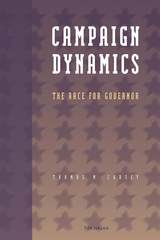 Campaign Dynamics: The Race for Governor
Thomas M. Carsey
University of Michigan Press, 2001 Campaign Dynamics: The Race for Governor explores the dynamic interaction between candidates and voters that takes place during campaigns. It finds that voters respond in a meaningful way to what candidates say and do during their campaigns.
Candidates for state-wide and national offices spend millions of dollars and thousands of hours trying to convey their messages to voters. Do voters hear them and respond? More specifically, do the issues candidates stress on the campaign trail influence the choices voters make when casting their ballots? The evidence presented in this book suggests that the answer is a resounding yes.
Campaign Dynamics examines more than one hundred gubernatorial elections from 1982 through 1994, beginning with case studies of the gubernatorial races in Virginia and New Jersey in 1993. Combining interviews and observations with empirical analysis of public opinion polls, the case studies develop the basic understanding of how campaigns define the set of important issues in an election. Then the analysis is expanded to consider the abortion issue in thirty-four gubernatorial elections in 1990. Later chapters test these ideas in over one hundred gubernatorial elections, combining exit poll data on upwards of 100,000 voters from dozens of races with measures of campaign themes developed out of a content analysis of newspaper coverage.
This book employs multiple methods and sources of data and represents one of the most comprehensive theoretical and empirical efforts to understand the role of campaigns in voting behavior ever undertaken.
Campaign Dynamics will be of interest to those who study state politics, voting behavior and campaigns, and democratic theory. It should also guide students and scholars interested in performing empirical tests of formal models and those wishing to combine multiple methods in their research.
Thomas M. Carsey is Assistant Professor of Political Science, University of Illinois at Chicago.
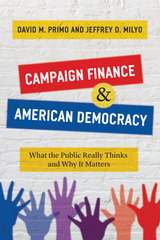 Campaign Finance and American Democracy: What the Public Really Thinks and Why It Matters
David M. Primo and Jeffrey D. Milyo
University of Chicago Press, 2020 In recent decades, and particularly since the US Supreme Court’s controversial Citizens United decision, lawmakers and other elites have told Americans that stricter campaign finance laws are needed to improve faith in the elections process, increase trust in the government, and counter cynicism toward politics. But as David M. Primo and Jeffrey D. Milyo argue, politicians and the public alike should reconsider the conventional wisdom in light of surprising and comprehensive empirical evidence to the contrary.
Primo and Milyo probe original survey data to determine Americans’ sentiments on the role of money in politics, what drives these sentiments, and why they matter. What Primo and Milyo find is that while many individuals support the idea of reform, they are also skeptical that reform would successfully limit corruption, which Americans believe stains almost every fiber of the political system. Moreover, support for campaign finance restrictions is deeply divided along party lines, reflecting the polarization of our times. Ultimately, Primo and Milyo contend, American attitudes toward money in politics reflect larger fears about the health of American democracy, fears that will not be allayed by campaign finance reform.
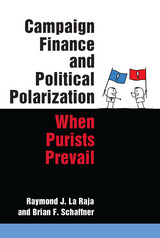 Campaign Finance and Political Polarization: When Purists Prevail
Raymond J. La Raja and Brian F. Schaffner
University of Michigan Press, 2015 Efforts to reform the U.S. campaign finance system typically focus on the corrupting influence of large contributions. Yet, as Raymond J. La Raja and Brian F. Schaffner argue, reforms aimed at cutting the flow of money into politics have unintentionally favored candidates with extreme ideological agendas and, consequently, fostered political polarization. Drawing on data from 50 states and the U.S. Congress over 20 years, La Raja and Schaffner reveal that current rules allow wealthy ideological groups and donors to dominate the financing of political campaigns. In order to attract funding, candidates take uncompromising positions on key issues and, if elected, take their partisan views into the legislature. As a remedy, the authors propose that additional campaign money be channeled through party organizations—rather than directly to candidates—because these organizations tend to be less ideological than the activists who now provide the lion’s share of money to political candidates. Shifting campaign finance to parties would ease polarization by reducing the influence of “purist” donors with their rigid policy stances. La Raja and Schaffner conclude the book with policy recommendations for campaign finance in the United States. They are among the few non-libertarians who argue that less regulation, particularly for political parties, may in fact improve the democratic process.
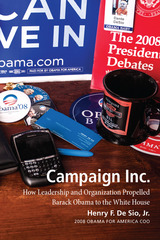 Campaign Inc.: How Leadership and Organization Propelled Barack Obama to the White House
Henry F. De Sio., Jr.
University of Iowa Press, 2014 It takes more than an excellent candidate to win elections; it takes an outstanding campaign organization, too. Campaign Inc. is the story of how leadership and organization propelled Barack Obama to the White House. As the chief operating officer of Obama’s 2008 presidential campaign, Henry F. De Sio, Jr., was positioned to view this historic campaign as few others could. In this fascinating behind-the-scenes account, he whisks readers into Obama’s national election headquarters in Chicago to glimpse the decision-making processes and myriad details critical to running a successful and innovative presidential campaign. From the campaign’s early chaos to the jubilation and drama of winning the Iowa caucus, to the drawn-out Democratic nomination process, to Obama’s eventual election as president of the United States, De Sio guides readers through the challenges faced by the Obama for America campaign in its brief twenty-one-month lifespan.
De Sio shows readers that Obama himself was direct about his vision for the campaign when he instructed his staff to “run it like a business.” Thus, this is less the story of Barack Obama, candidate, and more the story of Barack Obama, CEO. Because campaigns are launched from scratch during every election cycle, they are the ultimate entrepreneurial experience. In the course of the election, the Obama campaign scaled up from a scrappy start-up to a nearly $1 billion operation, becoming a hothouse environment on which the glare of the media spotlight was permanently trained.
Campaign Inc. allows readers to peek behind the curtain at the underdog organization that brought down the Clinton campaign and later went on to defeat the Republican machine, while offering lessons in leadership and organization to innovators, executives, and entrepreneurs.
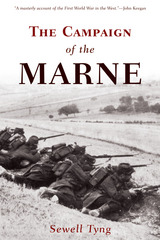 The Campaign of the Marne
Sewell Tyng
Westholme Publishing, 2007 The Definitive Account of the Battle of the Marne, One of World War I's Most Important Events
"A masterly account of the First World War in the West."—John Keegan "A distinguished piece of historical writing."—Journal of Modern History "Admirable... clear and interesting."—Foreign Affairs "Direct and clear... it lays bare a most complicated course of events so that even the layman can follow."—New Republic
Named as One of The 100 Best Nonfiction Books of the Twentieth Century With diplomacy unraveling during the summer of 1914, Germany swept into Belgium during the first week of August in an audacious attempt to catch France and England off guard. First contemplated after the Franco-Prussian War, the Schlieffen Plan was designed to keep Germany from fighting on two fronts. With a quick and decisive victory over France and its allies to the west, Germany could then confront Russia to the east. Despite the surprise of Germany's initial advance, the plan ultimately failed because it required much more mobile troops than were available at the time - something that would have to await the mechanized blitzkrieg of World War II—allowing France and British Expeditionary Forces to establish a tenacious defense. What followed was a stalemate along the Marne River and the beginning of four long years of destructive trench warfare that would only be lifted by a joint French, British, and American offensive across this same river plain in 1918. In The Campaign of the Marne, the entire genesis of the Schlieffen Plan, its modification, implementation, and the complex series of grueling battles that followed is laid out with the intent to make the entire episode comprehensible to the general reader. Hailed as one of the 100 best nonfiction books of the twentieth century by eminent military historian John Keegan, this is the first time the book has been available since its original publication in 1935.
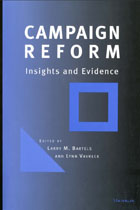 Campaign Reform: Insights and Evidence
Larry M. Bartels and Lynn Vavreck, Editors
University of Michigan Press, 2000 What is wrong with American political campaigns? How could the campaign process be improved? This volume brings the expertise of leading political scientists to the public debate about campaign reform. These scholars probe the reality behind the conventional wisdom that nasty, vacuous campaigns dominated by big money and cynical media coverage are perverting our political process and alienating our citizenry.
Some of their conclusions will be startling to campaigners and critics alike. For example, "attack" advertisements prove to be no more effective than self-promotional advertisements, but are more substantive. Indeed, candidates in their advertisements and speeches focus more on policy and less on strategy and process than any major news outlet, including the New York Times. The volume suggests that, as a result, prospective voters in 1996 knew more about the candidates' issue positions than in any presidential election in decades, yet turnout and public faith in the electoral process continued to decline.
For aspiring reformers, Bartels and his colleagues provide a bracing reality check. For students and scholars of electoral politics, political communication, and voting behavior, they provide an authoritative summary and interpretation of what we know about the nature and impact of political campaigns. The insights and evidence contained in this volume should be of interest to anyone concerned about the present state and future prospects of American electoral process.
Larry M. Bartels is Professor of Politics and Public Affairs and Stuart Professor of Communications and Public Affairs in the Woodrow Wilson School, Princeton University. Lynn Vavreck is Assistant Professor of Government, Dartmouth College. Other contributors are Bruce Buchanan, Tami Buhr, Ann Crigler, John G. Geer, Kathleen Hall Jamieson, Marion Just, Daron R. Shaw, and John Zaller.
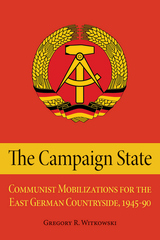 The Campaign State: Communist Mobilizations for the East German Countryside, 1945-1990
Gregory R. Witkowski
Northern Illinois University Press, 2017 Communist regimes are defined by dictatorial power, state planning, and active propaganda machines. In The Campaign State, Gregory Witkowski explores the intersection of these three elements in East Germany by focusing on mass mobilizations. He dissects the anatomy of campaigns and argues that while mass mobilizations are often perceived as symbols of strength, they also indicate underlying systemic weaknesses. By focusing on the ability of regimes to mobilize individuals to transform society, he explains both the durability and the ultimate demise of the German Democratic Republic.
This study seamlessly blends an analysis of top-down campaign initiatives with the influence of such mobilizations on the grassroots level. For more than thirty years, East German leaders doggedly extended such mobilization efforts, yet complete success remained elusive. Witkowski reveals how local leaders, campaign participants, and peasants acted in ways both compliant and noncompliant with party goals to create societal change.
Campaigns became a ubiquitous part of life under communist rule. Witkowski shows that such mobilizations were initially an integral part of state-planning efforts and only later became ritualized, as party portrayals of goals and accomplishments diverged from East Germans’ lived experience. He argues that incessant campaigns exposed a substantial gap between rhetoric and reality in the German Democratic Republic that undermined the regime’s legitimacy. This valuable and original study will appeal to scholars and students of German history, Communism, and state planning.
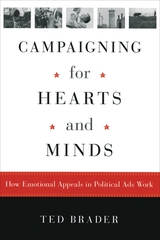 Campaigning for Hearts and Minds: How Emotional Appeals in Political Ads Work
Ted Brader
University of Chicago Press, 2005 It is common knowledge that televised political ads are meant to appeal to voters' emotions, yet little is known about how or if these tactics actually work. Ted Brader's innovative book is the first scientific study to examine the effects that these emotional appeals in political advertising have on voter decision-making.
At the heart of this book are ingenious experiments, conducted by Brader during an election, with truly eye-opening results that upset conventional wisdom. They show, for example, that simply changing the music or imagery of ads while retaining the same text provokes completely different responses. He reveals that politically informed citizens are more easily manipulated by emotional appeals than less-involved citizens and that positive "enthusiasm ads" are in fact more polarizing than negative "fear ads." Black-and-white video images are ten times more likely to signal an appeal to fear or anger than one of enthusiasm or pride, and the emotional appeal triumphs over the logical appeal in nearly three-quarters of all political ads.
Brader backs up these surprising findings with an unprecedented survey of emotional appeals in contemporary political campaigns. Politicians do set out to campaign for the hearts and minds of voters, and, for better or for worse, it is primarily through hearts that minds are won. Campaigning for Hearts and Minds will be indispensable for anyone wishing to understand how American politics is influenced by advertising today.
 Campaigning in Europe for a Free Indonesia: Indonesian Nationalists and the Worldwide Anticolonial Movement, 1917–1932
Klaas Stutje
National University of Singapore Press, 2019 ‘Campaigning in Europe for a Free Indonesia’ explores Indonesian transnational political networks in the late colonial period, connecting the history of Indonesian nationalism with that of anticolonial internationalism and transnational activism. This book adds an international dimension to our understanding of the nationalist and anticolonial movement in the Netherlands Indies. Offering important new understandings of the Indonesian independence struggle, this fine-grained study explores the international activities in the capitals of interwar Europe of the Perhimpoenan Indonesia (PI), an Indonesian nationalist student organisation based in the Netherlands. Operating in a vibrant political environment, the PI interacted with different anticolonial movements in cities across Europe. Focusing on the period between 1917 and 1931, the book follows the personal journeys of different students to cities such as Zürich, Paris, Brussels and Berlin as they established contacts, joined associations and attended international conferences. Here, the complex reality of movement building is examined, going beyond superficial suggestions of contact and collaboration. The study shows that the activities of the PI reverberated in the Indonesian political landscape, where the new collaborations in Europe were followed with great interest. In this way, the book offers new findings for multiple audiences – Indonesianists and scholars of anticolonial resistance alike. However, it also demonstrates that the political awakening of Indonesian elites should be understood not just as an indigenous response to Dutch rule but also as part of global anticolonial movements and struggles.
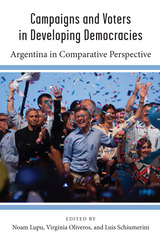 Campaigns and Voters in Developing Democracies: Argentina in Comparative Perspective
Edited by Noam Lupu, Virginia Oliveros, and Luis Schiumerini
University of Michigan Press, 2019 Voting behavior is informed by the experience of advanced democracies, yet the electoral context in developing democracies is significantly different. Civil society is often weak, poverty and inequality high, political parties ephemeral and attachments to them weak, corruption rampant, and clientelism widespread. Voting decisions in developing democracies follow similar logics to those in advanced democracies in that voters base their choices on group affiliation, issue positions, valence considerations, and campaign persuasion. Yet developing democracies differ in the weight citizens assign to these considerations. Where few social identity groups are politically salient and partisan attachments are sparse, voters may place more weight on issue voting. Where issues are largely absent from political discourse, valence considerations and campaign effects play a larger role. Campaigns and Voters in Developing Democracies develops a theoretical framework to specify why voter behavior differs across contexts.
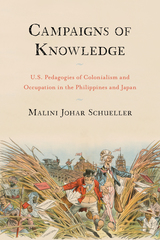 Campaigns of Knowledge: U.S. Pedagogies of Colonialism and Occupation in the Philippines and Japan
Malini Johar Schueller
Temple University Press, 2019 The creation of a new school system in the Philippines in 1898 and educational reforms in occupied Japan, both with stated goals of democratization, speaks to a singular vision of America as savior, following its politics of violence with benevolent recuperation. The pedagogy of recovery—in which schooling was central and natives were forced to accept empire through education—might have shown how Americans could be good occupiers, but it also created projects of Orientalist racial management: Filipinos had to be educated and civilized, while the Japanese had to be reeducated and “de-civilized.” In Campaigns of Knowledge, Malini Schueller contrapuntally reads state-sanctioned proclamations, educational agendas, and school textbooks alongside political cartoons, novels, short stories, and films to demonstrate how the U.S. tutelary project was rerouted, appropriated, reinterpreted, and resisted. In doing so, she highlights how schooling was conceived as a process of subjectification, creating particular modes of thought, behaviors, aspirations, and desires that would render the natives docile subjects amenable to American-style colonialism in the Philippines and occupation in Japan.
Campbell-Bannerman
Roy Hattersley
Haus Publishing, 2006 A biography of the intriguing life of the unknown Liberal British Prime Minister.
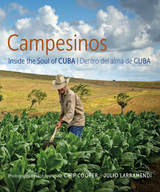 Campesinos: Inside the Soul of Cuba
Chip Cooper and Julio Larramendi
University of Alabama Press, 2017
Deep inside the soul of Cuba are the campesinos—the men and women who have always worked the countryside across the length and breadth of Cuba, away from cities, towns, and often villages. Resilient, resourceful, and proud, campesinos are the heart and soul of Cuba. The fruit of years of travel among Cuba’s less-known and little-explored rural communities, Campesinos: Inside the Soul of Cuba is a collection of loving and intimate photographs by world-renowned photographers Chip Cooper and Julio Larramendi documenting people and places from every corner of the island nation, many never seen by Cubans themselves let alone visitors from abroad.
Into the center of this world traveled two photographers to document these extraordinary people. One, Julio Larramendi, was born in Cuba and has spent his whole life there. The other, Chip Cooper, came to visit for the first time from his native Alabama more than a decade ago. Together, Cooper and Larramendi have captured the light, sounds, and spirit of the campesino landscape and the humble and determined people who inhabit it, ways of living that have not changed, in many instances, for a century or more. From green tobacco fields and winding roads to the faces, both stern and smiling, of children and their close-knit families, Cooper and Larramendi have captured in this landmark volume the rhythms and traditions of contemporary rural Cuban life in ways never before documented.
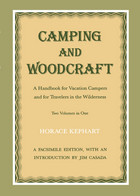 Camping and Woodcraft: A Handbook for Vacation Campers and Travelers in the Wilderness
Horace Kephart
University of Tennessee Press, 1988 Originally published in 1906 as one volume, Camping and Woodcraft was expanded into a two-volume edition in 1916 and 1917. Ranked sixth among the ten best-selling sporting books of all time, Camping and Woodcraft remains a classic for campers and a veritable outdoor enthusiast’s bible. This manual reflects Horace Kephart’s practical knowledge and covers, in depth, any problem that campers might confront. Kephart lived in the Great Smoky Mountains and spent most of his time in the wild. Consequently, he became an expert on all aspects of camp life from living in a semipermanent lean-to to traveling with only the bare essentials in a backpack. More than simply a hunting or fishing guide, Kephart’s book covers a wide variety of subjects from how to dress game and fish to how to shoot accurately. Every chapter is filled with tips that remain useful even after nearly a century of improvements in equipment and technology.
Camping Out In The Yellowstone
William W. Slaughter
University of Utah Press, 1994 Camping out in Yellowstone, 1882 describes the park at a time when Yellowstone was truly an "out-back and beyond" experience.
Writing just five years after the army chased the Nez Peirce Indians through the area, and only ten years after the park’s establishment, Mary Richards provides a vivid picture of the undeveloped and untouristed Yellowstone Park: Fire Hole Basin, Mammoth Hot Spring, Lower Falls, and the Excelsior Geyser, now defunct but mightier at the time than Old Faithful. Augmented by twenty-eight contemporary photographs, this book offers a fascinating perspective for present-day Park lovers.
Campion's Career: A Study of the Novels of Margery Allingham
Smith
University of Wisconsin Press, 1987 Here is a look at Water in a Sieve and Blackkerchief Dick and twenty-two other books by Margery Allingham featuring Albert Campion. Campion, the fictional hero, was a man of action, who appears to be a "guileless-looking nonentity whom it is almost obligatory to underestimate." Any fan of Campion or Ms. Allingham's mysteries will enjoy comparing their judgments to Pike's.
 Campus Free Speech: A Pocket Guide
Cass R. Sunstein
Harvard University Press, 2024 A Forbes Best Higher Education Book of the Year
From renowned legal scholar Cass R. Sunstein, a concise, case-by-case guide to resolving free-speech dilemmas at colleges and universities.
Free speech is indispensable on college campuses: allowing varied views and frank exchanges of opinion is a core component of the educational enterprise and the pursuit of truth. But free speech does not mean a free-for-all. The First Amendment prohibits “abridging the freedom of speech,” yet laws against perjury or bribery, for example, are still constitutional. In the same way, valuing freedom of speech does not stop a university from regulating speech when doing so is necessary for its educational mission. So where is the dividing line? How can we distinguish reasonable restrictions from impermissible infringement?
In this pragmatic, no-nonsense explainer, Cass Sunstein takes us through a wide range of scenarios involving students, professors, and administrators. He discusses why it’s consistent with the First Amendment to punish students who shout down a speaker, but not those who chant offensive slogans; why a professor cannot be fired for writing a politically charged op-ed, yet a university might legitimately consider an applicant’s political views when deciding whether to hire her. He explains why private universities are not legally bound by the First Amendment yet should, in most cases, look to follow it. And he addresses the thorny question of whether a university should officially take sides on public issues or deliberately keep the institution outside the fray.
At a time when universities are assailed on free-speech grounds from both left and right, Campus Free Speech: A Pocket Guide is an indispensable resource for cutting through the noise and understanding the key issues animating the debates.
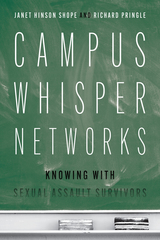 Campus Whisper Networks: Knowing with Sexual Assault Survivors
Janet Hinson Shope
Rutgers University Press, 2026 Campus Whisper Networks examines how personal knowledge about student sexual assault circulates within college campus communities. Based upon both qualitative and quantitative survey data, Janet Shope and Richard Pringle's research demonstrates that students who have been sexually assaulted tell someone -almost always a friend. Most college students know someone who has been assaulted. Simply knowing, by means of relationships, that one or more peers have been assaulted affects the knowers, and the effects reverberate unevenly across campuses. Shope and Pringle highlight the structural properties that prohibit relational knowledge from becoming official institutional knowledge, confining it to whispers and secrecy within informal spheres of knowledge. The rules governing the circulation of such knowledge create an uneven epistemic field of sexual assault. This uneven field is consequential for the communities, affecting survivors and their confidants and shaping student views of the college community. Campus Whisper Networks demonstrates how personal and institutional avoidance, both the “need to not know” and “no need to know,” create knowledge gaps that hide the community’s wounds and prevent personal knowledge from becoming social knowledge.
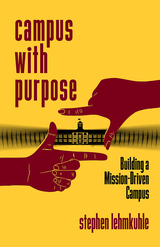 Campus with Purpose: Building a Mission-Driven Campus
Stephen Lehmkuhle
Rutgers University Press, 2021 When Stephen Lehmkuhle became the chancellor of the brand-new University of Minnesota-Rochester campus, he had to start from scratch. He did not inherit a legacy mission that established what the campus did and how to do it; rather, he needed to find a way to rationalize the existence of the nascent campus. Lehmkuhle recognized that without a shared understanding of purpose, the scope of a new campus expands at an unsustainable rate as it tries to be all things to all people, and so his first act was to decide on the driving purpose of the campus. He then used this purpose to make decisions about institutional design, scope, programs, and campus activities. Through personal and engaging anecdotes about his experience, Lehmkuhle describes how higher education leaders can focus on campus purpose to create new and fresh ways to think about many elements of campus operation and function, and how leaders can protect the campus’s purpose from the pervasive higher education culture that is hardened by history and habit.
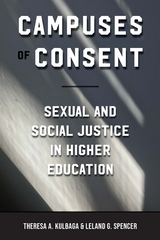 Campuses of Consent: Sexual and Social Justice in Higher Education
Theresa A. Kulbaga and Leland G. Spencer
University of Massachusetts Press, 2019 Winner of the 2020 OSCLG Outstanding Book Award
This new book for scholars and university administrators offers a provocative critique of sexual justice language and policy in higher education around the concept of consent. Complicating the idea that consent is plain common sense, Campuses of Consent shows how normative and inaccurate concepts about gender, gender identity, and sexuality erase queer or trans students' experiences and perpetuate narrow, regressive gender norms and individualist frameworks for understanding violence.
Theresa A. Kulbaga and Leland G. Spencer prove that consent in higher education cannot be meaningfully separated from larger issues of institutional and structural power and oppression. While sexual assault advocacy campaigns, such as It's On Us, federal legislation from Title IX to the Clery Act, and more recent affirmative-consent measures tend to construct consent in individualist terms, as something “given” or “received” by individuals, the authors imagine consent as something that can be constructed systemically and institutionally: in classrooms, campus communication, and shared campus spaces.
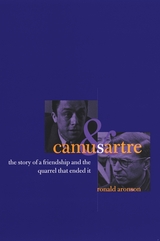 Camus and Sartre: The Story of a Friendship and the Quarrel that Ended It
Ronald Aronson
University of Chicago Press, 2003 Until now it has been impossible to read the full story of the relationship between Albert Camus and Jean-Paul Sartre. Their dramatic rupture at the height of the Cold War, like that conflict itself, demanded those caught in its wake to take sides rather than to appreciate its tragic complexity. Now, using newly available sources, Ronald Aronson offers the first book-length account of the twentieth century's most famous friendship and its end.
Albert Camus and Jean-Paul Sartre first met in 1943, during the German occupation of France. The two became fast friends. Intellectual as well as political allies, they grew famous overnight after Paris was liberated. As playwrights, novelists, philosophers, journalists, and editors, the two seemed to be everywhere and in command of every medium in post-war France. East-West tensions would put a strain on their friendship, however, as they evolved in opposing directions and began to disagree over philosophy, the responsibilities of intellectuals, and what sorts of political changes were necessary or possible.
As Camus, then Sartre adopted the mantle of public spokesperson for his side, a historic showdown seemed inevitable. Sartre embraced violence as a path to change and Camus sharply opposed it, leading to a bitter and very public falling out in 1952. They never spoke again, although they continued to disagree, in code, until Camus's death in 1960.
In a remarkably nuanced and balanced account, Aronson chronicles this riveting story while demonstrating how Camus and Sartre developed first in connection with and then against each other, each keeping the other in his sights long after their break. Combining biography and intellectual history, philosophical and political passion, Camus and Sartre will fascinate anyone interested in these great writers or the world-historical issues that tore them apart.
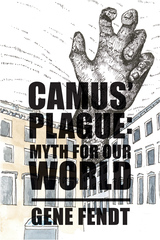 Camus' Plague: Myth for Our World
Gene Fendt
St. Augustine's Press, 2021 A year into the global pandemic, Gene Fendt repositions the attention of the Western world on a literary classic that bears a vital perspective. Presently, civilization cannot allow itself to think about being better. First it has to survive. Referencing Thomas Merton’s claim that Camus’ fictional account is actually a “modern myth about the destiny of man” and indication of the blight of “ambiguous and false explanations, interpretations, conventions, justifications, legalizations, evasions which infect our struggling civilization,” Fendt makes the case that “modernity itself is a time of plague.”
Fendt asserts that perhaps “the originality of the modern plague is that most people admit of no symptoms.” This chilling likeness to the asymptomatic Covid-19 victim is but one of the images of what the plague stands for in both the novel and contemporary society. The existentialist fiction of Camus is unwrapped by Fendt’s fidelity to realism and Camus’ motivations as an artist. As Camus calls nihilistic art and culture “barbaric,” Fendt calls the barbarian a natural slave. If we are moved by the forces of powers that be without sense or knowledge of a proper end, we too have been rendered worse than ignorant.
Beyond the presentation of The Plague as a myth, Fendt also provides generous insight into elements of this work that give an autobiographical portrait of Albert Camus´ artistic development. He provides an intelligent challenge to labeling Camus an atheist, if Camus is truly the artist Fendt believes him to be. It is also an unlikely but important contribution to the political philosophical study of solidarity.
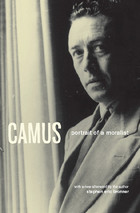 Camus: Portrait of a Moralist
Stephen Eric Bronner
University of Chicago Press, 2009 Decades after his death, Albert Camus (1913–1960) is still regarded as one of the most influential and fascinating intellectuals of the twentieth century. This biography by Stephen Eric Bronner explores the connections between his literary work, his philosophical writings, and his politics. Camus illuminates his impoverished childhood, his existential concerns, his activities in the antifascist resistance, and the controversies in which he was engaged. Beautifully written and incisively argued, this study offers new insights—and above all—highlights the contemporary relevance of an extraordinary man. “A model of a kind of intelligent writing that should be in greater supply. Bronner manages judiciously to combine an appreciation for the strengths of Camus and nonrancorous criticism of his weaknesses. . . . As a personal and opinionated book, it invites the reader into an engaging and informative dialogue.”—American Political Science Review “This concise, lively, and remarkably evenhanded treatment of the life and work of Albert Camus weaves together biography, philosophical analysis, and political commentary.”—Science & Society
Camus: The Challenge of Dostoevsky
Ray Davison
University of Exeter Press, 1997
This is the first full-length study in English of Camus's life-long fascination with the works of the Russian writer Feodor Dostoevsky. The purpose of the book is to demonstrate the ways in which Dostoevsky's thought and fiction served to stimulate and crystallize Camus's own thinking. Davison lucidly identifies the lines of divergence and counter-arguments which Camus produced as answers to the challenge of Dostoevsky's Christian/Tzarist vision of life.
The traditional methods of comparative literary criticism are jettisoned in favour of the more exciting claim that Camus's literary and philosophical texts can be read as precise and detailed replies to some of Dostoevsky's central beliefs about immortality, religion and politics. The study ranges freely over the entirety of the works of both major writers.
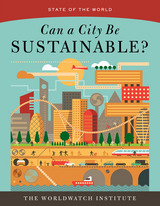 Can a City Be Sustainable? (State of the World)
The Worldwatch Institute
Island Press, 2016 Cities are the world’s future. Today, more than half of the global population—3.7 billion people—are urban dwellers, and that number is expected to double by 2050. There is no question that cities are growing; the only debate is over how they will grow. Will we invest in the physical and social infrastructure necessary for livable, equitable, and sustainable cities? In the latest edition of State of the World, the flagship publication of the Worldwatch Institute, experts from around the globe examine the core principles of sustainable urbanism and profile cities that are putting them into practice.
State of the World first puts our current moment in context, tracing cities in the arc of human history. It also examines the basic structural elements of every city: materials and fuels; people and economics; and biodiversity. In part two, professionals working on some of the world’s most inventive urban sustainability projects share their first-hand experience. Success stories come from places as diverse as Ahmedabad, India; Freiburg, Germany; and Shanghai, China. In many cases, local people are acting to improve their cities, even when national efforts are stalled. Parts three and four examine cross-cutting issues that affect the success of all cities. Topics range from the nitty-gritty of handling waste and developing public transportation to civic participation and navigating dysfunctional government.
Throughout, readers discover the most pressing challenges facing communities and the most promising solutions currently being developed. The result is a snapshot of cities today and a vision for global urban sustainability tomorrow.
 Can a Good Christian Be a Good Lawyer?: Homilies, Witnesses, and Reflections
Thomas E. Baker
University of Notre Dame Press, 1997 Law professors Thomas E. Baker and Timothy W. Floyd asked some of their legal colleagues to respond to this provocative question: "Can a good Christian be a good lawyer?" Here are twenty-one highly personal narratives that answer the question of how each writer tries, sometimes but not always successfully, to be both a good Christian and a good lawyer.
How does a lawyer called to live the Gospel of Jesus Christ reconcile his or her faith with the secular calling to the legal profession? The editors did not set out to provide some kind of final resolution or unified consensus. Instead, they have compiled a remarkable collection of reflections by lawyers, judges, and academics who represent many different branches of Christianity.
The reader is likely to find many role models to emulate and the inspiration to continue to fight the good fight in these accounts grounded in legal and Christian thought. Reading about these real-life ethical dilemmas, conflicting loyalties, and personal difficulties offers the reassurance that others have shared their ongoing struggle to rhyme their career with their faith.
Although every lawyer will find Can a Good Christian Be a Good Lawyer? especially meaningful, these essays speak to all persons of faith who strive to practice their beliefs in their work.
 Can a Health Care Market Be Moral?: A Catholic Vision
Mary J. McDonough
Georgetown University Press, 2007 Since the 1970s health care costs in the United States have doubled, insurance premiums have far outpaced inflation, and the numbers of the uninsured and underinsured are increasing at an alarming rate. At the same time the public expects better health care and access to the latest treatment technologies. Governments, desperate to contain ballooning costs, often see a market-based approach to health care as the solution; critics of market systems argue that government regulation is necessary to secure accessible care for all. The Catholic Church generally questions the market's ability to satisfy the many human needs intrinsic to any care delivery system yet, although the Church views health care as a basic human right, it has yet to offer strategies for how such a right can be guaranteed. Mary J. McDonough, a former Legal Aid lawyer for medical cases, understands the advantages and disadvantages of market-based care and offers insight and solutions in Can a Health Care Market Be Moral? Drawing on Catholic social teachings from St. Augustine to Pope John Paul II, McDonough reviews health system successes and failures from around the world and assesses market approaches to health care as proposed by leading economists such as Milton Friedman, Regina Herzlinger, Mark Pauly, and Alain Enthoven. Balancing aspects of these proposals with Daniel Callahan's value-dimension approach, McDonough offers a Catholic vision of health care in the United States that allows for some market mechanisms while promoting justice and concern for the least advantaged.
Can a Liberal be a Chief? Can a Chief be a Liberal?: Some Thoughts on an Unfinished Business of Colonialism
Olúfémi Táíwò
Prickly Paradigm Press, 2021 An argument against the idea of the indigenous chief as a liberal political figure.
Across Africa, it is not unusual for proponents of liberal democracy and modernization to make room for some aspects of indigenous culture, such as the use of a chief as a political figure. Yet for Olúfẹ́mi Táíwò, no such accommodation should be made. Chiefs, he argues, in this thought-provoking and wide-ranging pamphlet, cannot be liberals—and liberals cannot be chiefs. If we fail to recognize this, we fail to acknowledge the metaphysical underpinnings of modern understandings of freedom and equality, as well as the ways in which African intellectuals can offer a distinctive take on the unfinished business of colonialism.
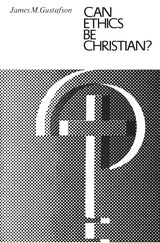 Can Ethics Be Christian?
James M. Gustafson
University of Chicago Press, 1977 Is there a special relation between religious beliefs and moral behavior? In particular, is there a distinctive Christian moral character and how is this manifested in moral actions? The influential theologian James M. Gustafson probes these questions and offers an analysis of the distinctively religious reasons of the "heart and mind" which constitute the basis for a Christian ethics.
Professor Gustafson grounds his discussion in a concrete example of moral conduct which deeply impressed him. The incident—narrated in detail at the start and referred to throughout—concerns a nonreligious colleague who came to the aid of an intoxicated soldier. Although seemingly trivial, this incident, in the author's view, approximates the normal sorts of experiences in which individuals have to make moral decisions every day; it becomes a touchstone to investigate the logical, social, and religious elements in moral decision making.
Can I Finish, Please?
Catherine Bowman
Four Way Books, 2016 Not-quite-woman, not-quite-man, not-quite-animal, not-quite-flower: the poems in Can I Finish, Please? are shape-shifting acts, lyric interruptions that crave and resist completion, where the mutable self and the world are made and unmade over and over. These poems explore hungers, from appetite to hedonistic consumption, from prayer to a yearning for generative resolution. An exiled couple remakes a ruined world out of buttons and string; tools give advice on love; a magic walking stick guides a speaker through haunted stone quarries; beds turn into musical instruments; a great antlered deer lives inside a locket; flowers transform into frogs, dogs, hobos in a lecherous garden that howls and laments on the violence we do to each other and the world. Pain and loss are recognized as necessary elements in the making of a self.
 Can Literature Promote Justice?: Trauma Narrative and Social Action in Latin American Testimonio
Kimberly A. Nance
Vanderbilt University Press, 2006 As if in direct response to The New Yorker's question of "The Power of the Pen: Does Literature Change Anything?" Kimberly Nance takes up the relationship between ethics and literature. With the 40th anniversary of the testimonio occurring in 2006, there has never been a better time to reconsider its role in achieving social justice. The advent of the testimonio--loosely, a political autobiography of a Latin American activist who hopes, through the telling of her life story, to bring about change--was met with a great deal of excitement by scholars who posited it as a radical new form of literature. Those accolades were almost immediately followed by a series of critical problems. In what sense were testimonios "true"? What right did privileged scholars in the U.S. have to engage accounts of suffering with traditional modes of criticism? Were questions of veracity or aesthetics more important? Were these texts autobiography or political screeds? It seemed critics didn't know quite what to make of the testimonio and so, after a brief bout of engagement, disregarded it. Nance, however, argues that any form as prolific as the testimonio is well worth examining and that these questions, rather than being insurmountable, are exactly the questions with which scholars ought to be wrestling. If, as critics claim, that the testimonio is one of the most pervasive contemporary Latin American cultural genres, then it is high time for a comprehensive study of the genre such as Nance's.
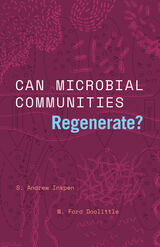 Can Microbial Communities Regenerate?: Uniting Ecology and Evolutionary Biology
Andrew Inkpen and Ford Doolittle
University of Chicago Press, 2022 By investigating a simple question, a philosopher of science and a molecular biologist offer an accessible understanding of microbial communities and a motivating theory for future research in community ecology.
Microorganisms, such as bacteria, are important determinants of health at the individual, ecosystem, and global levels. And yet many aspects of modern life, from the overuse of antibiotics to chemical spills and climate change, can have devastating, lasting impacts on the communities formed by microorganisms. Drawing on the latest scientific research and real-life examples such as attempts to reengineer these communities through microbial transplantation, the construction of synthetic communities of microorganisms, and the use of probiotics, this book explores how and why communities of microorganisms respond to disturbance, and what might lead to failure. It also unpacks related and interwoven philosophical questions: What is an organism? Can a community evolve by natural selection? How can we make sense of function and purpose in the natural world? How should we think about regeneration as a phenomenon that occurs at multiple biological scales? Provocative and nuanced, this primer offers an accessible conceptual and theoretical understanding of regeneration and evolution at the community level that will be essential across disciplines including philosophy of biology, conservation biology, microbiomics, medicine, evolutionary biology, and ecology.
 Can Music Make You Sick?: Measuring the Price of Musical Ambition
Sally Anne Gross and George Musgrave
University of Westminster Press, 2020 Stream Podcast Grant Hutchison (Frightened Rabbit):‘This book should be mandatory reading for every label, booking agent, manager and tour manager in the business of music and touring so we can all better understand what’s really involved in living the life of a professional musician and the role we all have in making that life as liveable as possible’ Tim Shiel (Double J/Triple J Radio, Australia):‘The most important book I’ve ever read about music’ ‘An eye-opening must read’ **** Shaun Ryder (Happy Mondays): ‘Holding on to your mental health in this pressured environment is so important and at times so very difficult, I know that all too well. This book lays bare what it is like to live for your music and how it can feel to be a musician today’ The Wire magazine:‘Poses uncomfortable questions…[and] sheds light on complex issues with compelling thoroughness’ ‘Musicians often pay a high price for sharing their art with us. Underneath the glow of success can often lie loneliness and exhaustion, not to mention the basic struggles of paying the rent or buying food. Sally-Anne Gross and George Musgrave raise important questions – and we need to listen to what the musicians have to tell us about their working conditions and their mental health’ Crispin Hunt (Multi-Platinum Songwriter/Record Producer & Chair of the Ivor’s Academy):‘In this important book, Sally Anne Gross and George Musgrave investigate the relationship between the well-being music brings to society and the well-being of those who create. It's a much needed reality-check, deglamorising the romantic image of the tortured artist’ Adam Ficek (Psychotherapist [Music and Mind]/BabyShambles):‘A critical and timely book’ Joe Muggs (DJ, Promoter, Journalist [Guardian, Telegraph, FACT, Mixmag, The Wire]):‘The best guide to what being a musician, and what "the music industry" actually are that I can remember reading’ Andreea Magdalina (Founder of shesaid.so):‘This book is extremely important....The pandemic is forcing our industry to reinvent itself, once again, and this book is a call to ensure these new systems are fairer for everyone and that they foster a healthier lifestyle’ It is often assumed that creative people are prone to psychological instability, and that this explains apparent associations between cultural production and mental health problems. In their detailed study of recording and performing artists in the British music industry, Sally Anne Gross and George Musgrave turn this view on its head. By listening to how musicians understand and experience their working lives, this book proposes that whilst making music is therapeutic, making a career from music can be traumatic. The authors show how careers based on an all-consuming passion have become more insecure and devalued. Artistic merit and intimate, often painful, self-disclosures are the subject of unremitting scrutiny and data metrics. Personal relationships and social support networks are increasingly bound up with calculative transactions. Drawing on original empirical research and a wide-ranging survey of scholarship from across the social sciences, their findings will be provocative for future research on mental health, wellbeing and working conditions in the music industries and across the creative economy. Going beyond self-help strategies, they challenge the industry to make transformative structural change. Until then, the book provides an invaluable guide for anyone currently making their career in music, as well as those tasked with training and educating the next generation.
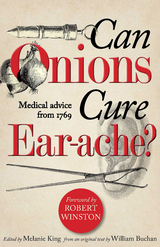 Can Onions Cure Ear-Ache?: Medical Advice from 1769
William Buchan
Bodleian Library Publishing, 2012 What common condition was once treated with cow dung? How might oyster shells relieve heartburn? Can eels really cure deafness? Is the secret to stopping a stubborn case of hiccups a simple ingredient found in most pantries? If you were struck by illness or injury in the late eighteenth century, you would most likely have been referred to Scottish physician William Buchan’s Domestic Medicine—and, as a result, you may have found yourself administering urine to your ears or drinking a broth made from sheep’s brains.
Originally published in 1769, Domestic Medicine was produced for the benefit of those without access to—or means to afford—medical assistance, and copies of the book were found in apothecaries and coffee houses, private households and clubs. In 1797, Bounty mutineer Fletcher Christian and his crew even had the foresight to pack a copy before fleeing to the Pitcairns. Derived from folklore and the emerging medical science of the day, some of Buchan’s recommendations for how to live a healthy life still ring true: for instance, exercising, enjoying a varied diet, and getting an abundance of fresh air. Others are delightfully dodgy or even downright dangerous, such as genital trusses, the prescription of mercury, or the suggestion that Spanish fly might soothe aching joints.
Bringing together an exceedingly entertaining selection of entries from one of the earliest self-help books, Can Onions Cure Ear-ache? offers fascinating insight into the popular treatments of the time.
Can Politics Be Thought?
Alain Badiou
Duke University Press, 2018 In Can Politics Be Thought?—published in French in 1985 and appearing here in English for the first time—Alain Badiou offers his most forceful and systematic analysis of the crisis of Marxism. Distinguishing politics as an active mode of thinking from the political as a domain of the State, Badiou argues for the continuation of Marxist politics. In so doing, he shows why we need to recapture the emancipatory hypothesis of Marx's original gesture in order to actualize its radical potential. This volume also includes Badiou's “Of an Obscure Disaster: On the End of the Truth of the State,” in which he rebuts claims of Communism's death after the fall of the Soviet Union.
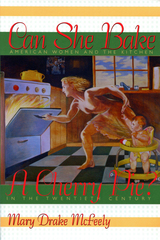 Can She Bake a Cherry Pie?: American Women and the Kitchen in the Twentieth Century
Mary Drake McFeely
University of Massachusetts Press, 2000 In the rural America of the past, a woman's reputation was sometimes made by her cherry pie—or her chocolate layer cake, or her biscuits. As America modernized and as women left the home, entered the paid labor force, and battled their way to success in the professions, mastery of cooking remained an accepted sign that a woman took her gendered responsibilities seriously. Ironically, over the course of the twentieth century, as ready-made foods and kitchen appliances made home cooking less essential and labor-intensive, skill in the kitchen continued to be perceived not only by society but often by women themselves as a measure of a woman's true value.
This book shows how cooking developed and evolved during the twentieth century. From Fannie Farmer to Julia Child, new challenges arose to replace the old. Women found themselves still tied to the kitchen, but for different reasons and with the need to acquire new skills. Instead of simply providing sustenance for the family, they now had to master more complex cooking techniques, the knowledge of "ethnic" cuisines, the science of nutrition, the business of consumerism, and, perhaps most important of all, the art of keeping their husbands and children happy and healthy.
 Can the Subaltern See?: Photographs as History, Volume 84
Fernando Coronil , ed.
Duke University Press In the words of guest editor Fernando Coronil, this special issue of the Hispanic American Historical Review on photography contributes “an expanding discussion across disciplinary boundaries of the role of visuality in social life.” Helping to overcome the split between image and word in Western theory, the essays pinpoint the need to recognize the “play of all senses in the construction of reality.” Turning photos and collections of photos into historical documents, the four authors read images as texts to be analyzed in the context of their production and circulation. Each essay looks at the role of a particular photographic genre in the making of modern Latin American identities. Articles cover the adaptation in late-nineteenth-century Oaxaca of European type photography as a tool of imperialist enterprise and science, state consolidation, and consumer culture; the use of portrait photography by the K’iche Mayans of Quetzaltenango; and the family album—made up of snapshots, postcards, and other memorabilia—as a historical document. Contributors. Greg Grandin, Daniel James, Mirta Zaida Lobato, Deborah Poole
Can This Marriage Be Saved?: A Memoir
Nancy McCabe
University of Missouri Press, 2020 In this warm, deeply-personal, and often humorous book, Nancy McCabe re-examines and gains new understanding of her early life and her ill-advised marriage. Borrowing from Bosch’s Garden of Earthly Delights and Kafka’s “Metamorphosis,” how-to essays and before-and-after weight loss ads, a curriculum guide, Bible study notes, an obsession with Tom Swiftie jokes, and women’s magazine columns and quizzes that oversimplified women’s lives and choices, McCabe examines the many influences that led to her youthful marriage—and out of it, into finally taking control of her life.
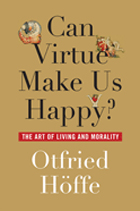 Can Virtue Make Us Happy?: The Art of Living and Morality
Otfried Hoffe
Northwestern University Press, 2010 Can one be happy and free, and nonetheless be moral? This question occurs at the core of daily life and is, as well, a question as old as philosophy itself. In Can Virtue Make Us Happy? The Art of Living and Morality, Otfried Höffe, one of Europe’s most well-known philosophers, offers a far-reaching and foundational work in philosophical ethics. As long as one understands "happiness" purely as a feeling of subjective well-being, Höffe argues, there is at best only an accidental unity between it and morality. However, if one means by "happiness" the quality of doing well in the sense of one’s own successful existence, then one must include actions that undoubtedly have a moral character and are named virtues. He uses clear and general language to present what one understands by "happiness" and "freedom" while illuminating the blind alleys in the history of philosophy as well as the difficulties raised by the issues themselves. What has priority: good ends or right action? Is freedom always anarchy? Is it possible to think of a freedom enhanced by morality? Is "morality" only a pretty word for stupidity? Does humanity have a good or a bad character? Is there such a thing as evil? Höffe offers us enlightened philosophical reflection and foundational orientation but no simple formulas; this is precisely what is at stake because anyone who wishes to live a self-determined life rejects any and all formulas.
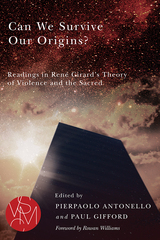 Can We Survive Our Origins?: Readings in René Girard's Theory of Violence and the Sacred
Pierpaolo Antonello
Michigan State University Press, 2015 Are religions intrinsically violent (as is strenuously argued by the ‘new atheists’)? Or, as Girard argues, have they been functionally rational instruments developed to manage and cope with the intrinsically violent runaway dynamic that characterizes human social organization in all periods of human history? Is violence decreasing in this time of secular modernity post-Christendom (as argued by Steven Pinker and others)? Or are we, rather, at increased and even apocalyptic risk from our enhanced powers of action and our decreased socio-symbolic protections? Rene Girard’s mimetic theory has been slowly but progressively recognized as one of the most striking breakthrough contributions to twentieth-century critical thinking in fundamental anthropology: in particular for its power to model and explain violent sacralities, ancient and modern. The present volume sets this power of explanation in an evolutionary and Darwinian frame. It asks: How far do cultural mechanisms of controlling violence, which allowed humankind to cross the threshold of hominization—i.e., to survive and develop in its evolutionary emergence—still represent today a default setting that threatens to destroy us? Can we transcend them and escape their field of gravity? Should we look to—or should we look beyond—Darwinian survival? What—and where (if anywhere)—is salvation?
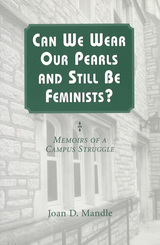 Can We Wear Our Pearls and Still Be Feminists?: Memoirs of a Campus Struggle
Joan D. Mandle
University of Missouri Press, 2000
When Joan Mandle accepted the position of Director of Women's Studies at Colgate University, she had specific goals in mind—to make the program stronger, more academically rigorous, and publicly open. The program would resist becoming the captive of identity politics and would refuse to allow itself to become marginalized on the campus. It would reach beyond the negative stereotypes of feminism on campus by appealing to and challenging all students and faculty interested in gender issues and social change.
Just as Mandle anticipated, she faced obstacles during the transformation. Among her critics were feminist students and faculty whose views of a successful program directly contradicted Mandle's. While the new director called for outreach, they insisted on isolation. While she set forth a policy of inclusiveness, they sought to maintain an exclusive community. These individuals preferred the former model of the women's studies program, despite its tendency toward separatism.
Can We Wear Our Pearls and Still Be Feminists? explores women's studies from Mandle's perspective as a program director, feminist activist, and scholar. She offers a vivid account of being forced to grapple with fundamental issues of what women's studies is and should be. Her strong commitment to feminism and women's studies does not prevent her from voicing her concerns; instead, it compells her to share the story of her directorship in hopes of shedding light on the strengths and weaknesses, pitfalls and triumphs of women's studies as an academic discipline.
Through her examination of the battles involved in creating an academically significant and ideologically open program, Mandle provides insight into a possible avenue of change for feminism. By showing how the program at Colgate University was able to encourage campuswide discussions on feminism, Mandle demonstrates that women's studies can succeed as an inclusive and rigorous field. This enlightening memoir provides readers with a window on important debates concerning feminism and women in academia.
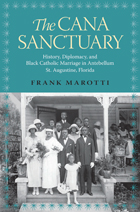 The Cana Sanctuary: History, Diplomacy, and Black Catholic Marriage in Antebellum St. Augustine, Florida
Frank Marotti
University of Alabama Press, 2012 Uses the collective testimony from more than two hundred Patriot War claims, previously believed to have been destroyed, to offer insight into the lesser-known Patriot War of 1812 and to constitute an intellectual history of everyday people caught in the path of an expanding American empire
In the late seventeenth century a group of about a dozen escaped African slaves from the English colony of Carolina reached the Spanish settlement of St. Augustine. In a diplomatic bid for sanctuary, to avoid extradition and punishment, they requested the sacrament of Catholic baptism from the Spanish Catholic Church. Their negotiations brought about their baptism and with it their liberation. The Cana Sanctuary focuses on what author Frank Marotti terms “folk diplomacy”—political actions conducted by marginalized, non-state sectors of society—in this instance by formerly enslaved African Americans in antebellum East Florida. The book explores the unexpected transformations that occurred in seventeenth- and eighteenth-century St. Augustine as more and more ex-slaves arrived to find their previously disregarded civil rights upheld under sacred codes by an international, nongovernmental, authoritative organization.
With the Catholic Church acting as an equalizing, empowering force for escaped African slaves, the Spanish religious sanctuary policy became part of popular historical consciousness in East Florida. As such, it allowed for continual confrontations between the law of the Church and the law of the South. Tensions like these survived, ultimately lending themselves to an “Afro-Catholicism” sentiment that offered support for antislavery arguments.
 Canaan Bound: The African-American Great Migration Novel
Lawrence R. Rodgers
University of Illinois Press, 1997
The Great Migration--the exodus of more than six million blacks from
their southern homes hoping for better lives in the North--is a defining
event of post-emancipation African-American life and a central feature
of twentieth-century black literature. Lawrence Rodgers explores the historical
and literary significance of this event and in the process identifies
the Great Migration novel as a literary form that intertwines geography
and identity.
Drawing on a wide range of major literary voices, including Richard Wright,
Ralph Ellison, and Toni Morrison, as well as lesser-known writers such
as William Attaway (Blood on the Forge) and Dorothy West (The Living Is
Easy), Rodgers conducts a kind of literary archaeology of the Great Migration.
He mines the writers' biographical connections to migration and teases
apart the ways in which individual novels relate to one another, to the
historical situation of black America, and to African-American literature
as a whole.
In reading migration novels in relation to African-American literary
texts such as slave narratives, folk tales, and urban fiction, Rodgers
affirms the southern folk roots of African-American culture and argues
for a need to stem the erosion of southern memory.
Canaanite Myth and Hebrew Epic: Essays in the History of the Religion of Israel
Frank Moore Cross
Harvard University Press, 1973 The essays in this volume address key aspects of Israelite religious development. Frank Moore Cross traces the continuities between early Israelite religion and the Canaanite culture from which it emerged; explores the tension between the mythic and the historical in Israel’s religious expression; and examines the reemergence of Canaanite mythic material in the apocalypticism of early Christianity and the Dead Sea Scrolls.
 Canada and Eastern Europe, 1945–1991: Meeting in the Middle
Andrea Chandler
Central European University Press, 2024 How democratic regimes should engage with authoritarian regimes, or self-proclaimed authorities in states under occupation, has long been a subject of debate. The work examines Canada's relations with member-states of the Warsaw Pact during the Cold War. Central and East European communist states were nominally independent but established under occupation. Canadian leaders explored whether engaging in foreign relations with these countries would encourage liberalization or embolden dictatorships. Over time, Canada's position evolved as a policy of encouraging bilateral and multilateral diplomacy, while calling for the respect of human rights. However, Canada's economic relationship with East European states was at times at cross-purposes with its democratic principles. Andrea Chandler concludes that while Canada did play a role in encouraging democratization, the country's leaders did not sufficiently consider the impact of these policies on the citizens of Warsaw Pact countries. This book treats Canada’s engagement with Hungary, Poland, the German Democratic Republic, Romania, Bulgaria and Czechoslovakiaduring the Cold War, in which the Western countries of the North Atlantic Treaty Organization (including Canada) had an adversarial relation with the Soviet bloc nations.
Canada at the Polls, 1984: A Study of the Federal General Elections
Howard R. Penniman, ed.
Duke University Press, 1988 This is the most recent in the At the Polls series, in which Duke University Press has joined with the American Enterprise Institute for Public Policy Research to publish studies on the electoral process as it functions throughout the world. Cited by Choice for its "high standards of scholarly analysis and objectivity," At the Polls provides both a chronicle of events and a thorough analysis of the elections results.
 Canada Gazetteer Atlas
Canada Gazetteer Atlas
University of Chicago Press, 1980 This definitive work—Canada's official atlas—is the first to bring together from diverse official sources complete information on the populated places of the country.
It consists of two parts:
First, 48 double-page relief maps which are the most current available, together with information on the sources used and definitions of the features mapped. Geographical names are given in the language actually approved by the respective authorities for the provinces and territories.
Second, the gazetteer, or index, to places and physical features which includes:
-Every city, town, village, and hamlet of more than 50 residents
-13,000 physical features including roads, railways, waterways
-Status, population, and incorporation of urban centers
-National and provincial parks, military establishments, Indian Reserves, trailer courts
Every population center or physical feature is easily found and identified. All information is based on latest census statistics.
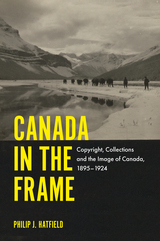 Canada in the Frame
Edited by Philip J. Hatfield
University College London, 2018 Canada in the Frame explores a photographic collection held at the British Library that offers a unique view of late-nineteenth-century and early twentieth-century Canada. The collection, which contains more than 4,500 images, taken between 1895 and 1923, covers a dynamic period in Canada’s national history and provides a variety of views of its landscapes, developing urban areas and peoples. Colonial Copyright Law was the driver by which these photographs were acquired; unmediated by curators, but rather by the eye of the photographer who created the image, they showcase a grassroots view of Canada during its early history as a confederation.
Canada in the Frame describes this little-known collection and includes over one hundred images from the collection. The author asks key questions about what it shows contemporary viewers of Canada and its photographic history, and about the peculiar view these photographs offer of a former part of the British Empire in a postcolonial age, viewed from the old "Heart of Empire." Case studies are included on subjects such as urban centers, railroads and migration, which analyze the complex ways in which photographers approached their subjects in the context of the relationship between Canada, the British Empire, and photography.
 Canada in the World Economy
John A. Stovel
Harvard University Press In his study of Canada, John A. Stovel examines the changes in that country’s balance of payments and balance of trade from confederation to the present day, including as part of his examination historical, statistical, and theoretical points of view. The author also reexamines critically—and finds himself in sharp disagreement with—Jacob Viner’s classic in the field, Canada’s Balance of International Indebtedness, 1900-1913, which has long been considered the definitive analysis of the subject.
Developing in Part I an eclectic theory of international balance of payments, and in Part II concentrating on the Canadian balance of trade and balance of payments in relation to economic developments preceding World War I, Stovel carefully prepares the foundation for a critique of Viner’s analysis of the period 1900-1913. Discussing the inadequacy of the Mill-Taussig theory and its empirical verification, and observing the extent to which the newer theoretical developments have afforded increased understanding, Stovel criticizes Viner’s statistics and the use to which they were put. He delineates with telling clarity the mutual interaction of many elements in cyclical growth development, as opposed to the oversimplified and inadequate causal links of the earlier theory.
In addition to the wealth of analysis of the earlier period, the author investigates the interwar period, with the postwar boom and the depression of the thirties, presenting a careful analysis of the structural changes in the balance of payments during this period as well as indicating the change in Canada’s relation to the United States and Great Britain. The concluding section of the book deals with the period following World War II, and the author indicates the possible lessons to be learned from Canada’s experiences and the improvements in government policy that have taken place, especially with respect to exchange rates.
 Canada North: Journey to the High Arctic
John Stager
Rutgers University Press, 1992 Discover the Far North hand-in-hand with two leading authorities on the Arctic.
This travel guide offers a unique eight-day tour of the Canadian Arctic, starting at Iqaluit near the head of Frobisher Bay (2,000 kilometers north of Ottawa), flying across the line of the Arctic Circle to Resolute, and onward to Ward Hunt Island, the northernmost airstrip in North America. Whether you make the journey in person or as an armchair traveler, this eye-opening book will tell you just what makes this region so extraordinary. Stager and Swain comment on everything that's likely to catch your attention from the air, on the ground, or in the frigid waters--from the lay of the land to the cost of the food, from frost polygons to sea smoke, from narwhals to snow geese, from kayaks to icebreakers, from soapstone sculptures to satellite dishes.
Canada North: Journey to the High Arctic makes the best of traveling companions: compact, informed, and lively. You'll want to read and reread it as you plan the journey of a lifetime.
Canada Votes, 1935-1989
Frank Feigert
Duke University Press, 1989 This work updates and enhances Howard Scarrow’s Canada Votes (1962) with complete election data from the constituency level through the province, region, and nation for more than a half-century of Canadian political life since the benchmark election of 1935. Frank Feigert adds a description of the circumstances of all the elections since, and he gives background descriptions of the electoral systems in each province and territory.
The result is a compendium of data and analysis that can be found nowhere else and which will be an invaluable sourcebook for students of Canadian political behavior.
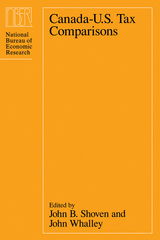 Canada-U.S. Tax Comparisons
Edited by John B. Shoven and John Whalley
University of Chicago Press, 1992 In the increasingly global economy, domestic tax policies have taken on a new importance for international economics. This unique volume compares the tax reform experiences of Canada and the United States, two countries with the world's largest bilateral flow of trade and investment.
With the signing of the U.S.-Canada Free Trade Agreement and the tax reforms of the 1980s, there has been some harmonization of tax systems. But geographic, cultural, and political characteristics shape distinct national social policies that may impede harmonization. As the U.S. and Canadian economies become even more integrated, differences in tax systems will have important effects, in particular on the relative rates of economic growth.
In this timely study, scholars from both countries show that, while the United States and Canada exhibit similar corporate tax structures and income tax systems, they have very different approaches to sales tax and social security taxes. Despite these differences, the two countries generate roughly the same amounts of revenue, produce similar costs of capital, and produce comparable distributions of income.
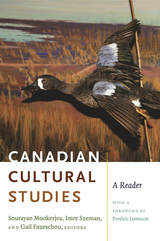 Canadian Cultural Studies: A Reader
Sourayan Mookerjea, Imre Szeman, and Gail Faurschou, eds.
Duke University Press, 2009 Canada is situated geographically, historically, and culturally between old empires (Great Britain and France) and a more recent one (the United States), as well as on the terrain of First Nations communities. Poised between historical and metaphorical empires and operating within the conditions of incomplete modernity and economic and cultural dependency, Canada has generated a body of cultural criticism and theory, which offers unique insights into the dynamics of both center and periphery. The reader brings together for the first time in one volume recent writing in Canadian cultural studies and work by significant Canadian cultural analysts of the postwar era. Including essays by anglophone, francophone, and First Nations writers, the reader is divided into three parts, the first of which features essays by scholars who helped set the agenda for cultural and social analysis in Canada and remain important to contemporary intellectual formations: Harold Innis, Marshall McLuhan, and Anthony Wilden in communications theory; Northrop Frye in literary studies; George Grant and Harold Innis in a left-nationalist tradition of critical political economy; Fernand Dumont and Paul-Émile Borduas in Quebecois national and political culture; and Harold Cardinal in native studies. The volume’s second section showcases work in which contemporary authors address Canada’s problematic and incomplete nationalism; race, difference, and multiculturalism; and modernity and contemporary culture. The final section includes excerpts from federal policy documents that are especially important to Canadians’ conceptions of their social, political, and cultural circumstances. The reader opens with a foreword by Fredric Jameson and concludes with an afterword in which the Quebecois scholar Yves Laberge explores the differences between English-Canadian cultural studies and the prevailing forms of cultural analysis in francophone Canada. Contributors. Ian Angus, Himani Bannerji, Jody Berland, Paul-Émile Borduas, Harold Cardinal, Maurice Charland, Stephen Crocker, Ioan Davies, Fernand Dumont, Kristina Fagan, Gail Faurschou, Len Findlay, Northrop Frye, George Grant, Rick Gruneau, Harold Innis, Fredric Jameson, Yves Laberge, Jocelyn Létourneau, Eva Mackey, Lee Maracle, Marshall McLuhan, Katharyne Mitchell, Sourayan Mookerjea, Kevin Pask, Rob Shields, Will Straw, Imre Szeman, Serra Tinic, David Whitson, Tony Wilden
 Canadian Military Intelligence: Operations and Evolution from the October Crisis to the War in Afghanistan
David A. Charters
Georgetown University Press The most comprehensive history of Canadian military intelligence and its influence on key military operations Canadian intelligence has become increasingly central to the operations of the Canadian Armed Forces (CAF). Canadian Military Intelligence: Operations and Evolution from the October Crisis to the War in Afghanistan is the first comprehensive history that examines the impact of tactical, operational, and strategic intelligence on the Canadian military. Drawing upon a wide range of original documents and interviews with participants in specific operations, author David A. Charters provides an inside perspective on the development of military intelligence since the Second World War. He shows how intelligence influenced key military operations, from domestic internal security to peacekeeping efforts to high-intensity air campaigns—including the October Crisis of 1970, the Oka Crisis, the Gulf War, peacekeeping and enforcement operations in the Balkans, and the war in Afghanistan. He describes how decades of experience, innovation, and increasingly close cooperation with its Five Eyes and NATO allies allowed Canada’s military intelligence to punch above its weight. Its tactical effectiveness and ability to overcome challenges reshaped the outlook of military commanders, and intelligence emerged from the margins to become a central feature of military and defense operations. Canadian Military Intelligence offers lessons from the past and critical implications for future intelligence support with the creation of the Canadian Forces Intelligence Command. This book will be essential to both intelligence history and military history readers and collections.
Canadian Wetlands: Places and People
Rod Giblett
Intellect Books, 2014 In Canadian Wetlands, Rod Giblett reads the Canadian canon against the grain, critiquing its popular representation of wetlands and proposing alternatives by highlighting the work of recent and contemporary Canadian authors, such as Douglas Lochhead and Harry Thurston, and by entering into dialogue with American writers. The book will engender mutual respect between researchers for the contribution that different disciplinary approaches can and do make to the study and conservation of wetlands internationally.
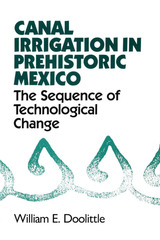 Canal Irrigation in Prehistoric Mexico: The Sequence of Technological Change
By William E. Doolittle
University of Texas Press, 1990 Prehistoric farmers in Mexico invented irrigation, developed it into a science, and used it widely. Indeed, many of the canal systems still in use in Mexico today were originally begun well before the discovery of the New World. In this comprehensive study, William E. Doolittle synthesizes and extensively analyzes all that is currently known about the development and use of irrigation technology in prehistoric Mexico from about 1200 B.C. until the Spanish conquest in the sixteenth century A.D. Unlike authors of previous studies who have focused on the political, economic, and social implications of irrigation, Doolittle considers it in a developmental context. He examines virtually all the known systems, from small canals that diverted runoff from ephemeral mountain streams to elaborate networks that involved numerous large canals to irrigate broad valley floors with water from perennial rivers. Throughout the discussion, he gives special emphasis to the technological elaborations that distinguish each system from its predecessors. He also traces the spread of canal technology into and through different ecological settings. This research substantially clarifies the relationship between irrigation technology in Mexico and the American Southwest and argues persuasively that much of the technology that has been attributed to the Spaniards was actually developed in Mexico by indigenous people. These findings will be important not only for archaeologists working in this area but also for geographers, historians, and engineers interested in agriculture, technology, and arid lands.
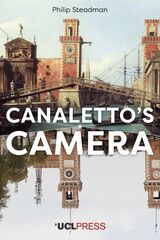 Canaletto's Camera
Philip Steadman
University College London, 2025 Did Canaletto paint what he saw, or what he wanted us to see? Exploring the boundary between observation and invention.
Canaletto’s Camera provides a revelatory look at how the Venetian master Antonio Canaletto (1697–1768) used the camera obscura, a precursor to the modern camera, to create his meticulous cityscapes. Drawing on new research, Steadman examines Canaletto’s connections to contemporary scientists and his reliance on measured architectural drawings, discovering previously unrecognized techniques that shaped his iconic views of Venice and London.
By analyzing Canaletto’s sketches and reconstructing an 18th-century camera obscura, Steadman and his colleagues have recreated the artist’s process, demonstrating how he traced real scenes, altered them in his finished works, and even engaged in a form of early photomontage. Through digital overlays and side-by-side comparisons with contemporary photographs, the book challenges assumptions about Canaletto’s realism and artistic manipulation.
Lavishly illustrated and deeply engaging, Canaletto’s Camera is a compelling read for art historians, scholars of optical devices, and those fascinated by the intersection of art and science.
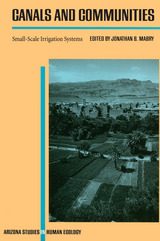 Canals and Communities: Small-Scale Irrigation Systems
Jonathan B. Mabry
University of Arizona Press, 1996 From the mountains of South America to the deserts of northern Africa to the islands of south Asia, people have devised myriad ways of moving water to sustain their communities and nourish their crops. Many of these irrigation methods have been used over long periods of time and continue to function in diverse ecological and sociopolitical contexts. This book presents case studies and comparative essays about local institutions for managing water resources. Drawn from around the globe, the cases clearly demonstrate that "indigenous" irrigation is often more sustainable, cost-effective, and flexible than has been generally believed. The contributors discuss a wide range of environments, cultural traditions, and historical contexts in which such systems operate, maintaining a common focus on incentives for cooperation, operational rules, collective-choice arrangements, principles of allocation, and conflict-resolution mechanisms. Canals and Communities can serve as a sourcebook for social scientists and development planners investigating the cultural ecology of irrigated agriculture, the ethnology of cooperative social formations, the politics of collective-resource institutions, and the sociology of rural development. The book also provides examples and generalizations about the cross-cultural characteristics of sustainable water resource management and intensive agriculture. Aside from its theoretical contributions to human ecology and anthropology, the book is of practical importance to development studies. The cases it presents make a convincing argument for perpetuating small-scale irrigation systems as part of the world's repertoire of irrigation knowledge and resources.
CONTENTS
Introduction
The Ethnology of Irrigation: Cross-Cultural Characteristics of Local Water Management, Jonathan B. Mabry
Patterns of Cooperation and Conflict in Local Irrigation
1. La Gente es Muy Perra: Conflict and Cooperation over Irrigation Water in Cucurpe, Sonora, Mexico, Thomas E. Sheridan
2. Dhasheeg Agriculture in the Jubba Valley of Somalia, Catherine Besteman
3. The Dry and the Drier: Cooperation and Conflict in Moroccan Irrigation, John R. Welch
4. The Political Ecology of Irrigation in an Andean Peasant Community, Paul H. Gelles
Methods and Models for Analyzing Local Irrigation
5. Rapid Rural Appraisal of Arid Land Irrigation: A Moroccan Example, John R. Welch, Jonathan B. Mabry, and Hsain Ilahiane
6. Simulation Modelling of Balinese Irrigation, J. Stephen Lansing
7. Institutional Innovation in Small-Scale Irrigation Networks: A Cape Verdean Case, Mark W. Langworthy and Timothy J. Finan
Development Lessons from Local Irrigation
8. Qanats and Rural Societies: Sustainable Agriculture and Irrigation Cultures in Contemporary Iran, Michael E. Bonine
9. The Utility of Tradition in Sri Lankan Bureaucratic Irrigation: The Case of the Kirindi Oya Project, Pamela Stanbury
10. The Relevance of Indigenous Irrigation: A Comparative Analysis of Sustainability, Jonathan B. Mabry and David A. Cleveland
Conclusion
The Hydraulics of History: Evolutionary Trajectories of Local and Centralized Irrigation, Jonathan B. Mabry
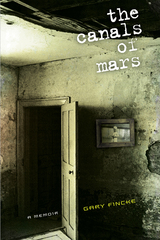 The Canals of Mars: A Memoir
Gary Fincke
Michigan State University Press, 2010 The Canals of Mars is a memoir that explores and ponders "weakness," which in Gary Fincke's family was the catch-all term for every possible human flaw-physical, psychological, or spiritual. Fincke grew up near Pittsburgh during the 1950s and 1960s, raised by blue-collar parents for whom the problems that beset people-from alcoholism to nearsightedness to asthma to fear of heights-were nothing but weaknesses.
In a highly engaging style, Fincke meditates on the disappointments he suffered-in his body, his mind, his work-because he was convinced that he had to be "perfect." Anything less than perfection was weakness and no one, he understood from an early age, wants to be weak.
Six of the chapters in the book have been cited in Best American Essays. The chapter that provides the book's title, The Canals of Mars, won a Pushcart Prize and was included in The Pushcart Book of Essays: The Best Essays from a Quarter Century of the Pushcart Prize.
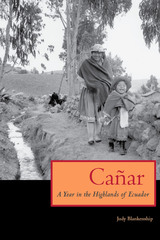 Cañar: A Year in the Highlands of Ecuador
By Judy Blankenship
University of Texas Press, 2005 Once isolated from the modern world in the heights of the Andean mountains, the indigenous communities of Ecuador now send migrants to New York City as readily as they celebrate festivals whose roots reach back to the pre-Columbian past. Fascinated by this blending of old and new and eager to make a record of traditional customs and rituals before they disappear entirely, photographer-journalist Judy Blankenship spent several years in Cañar, Ecuador, photographing the local people in their daily lives and conducting photography workshops to enable them to preserve their own visions of their culture. In this engaging book, Blankenship combines her sensitively observed photographs with an inviting text to tell the story of the most recent year she and her husband Michael spent living and working among the people of Cañar. Very much a personal account of a community undergoing change, Cañar documents such activities as plantings and harvests, religious processions, a traditional wedding, healing ceremonies, a death and funeral, and a home birth with a native midwife. Along the way, Blankenship describes how she and Michael went from being outsiders only warily accepted in the community to becoming neighbors and even godparents to some of the local children. She also explains how outside forces, from Ecuador's failing economy to globalization, are disrupting the traditional lifeways of the Cañari as economic migration virtually empties highland communities of young people. Blankenship's words and photographs create a moving, intimate portrait of a people trying to balance the demands of the twenty-first century with the traditions that have formed their identity for centuries.
 Canaries in the Code Mine: Precarity and the Future of Tech Work
Max Papadantonakis
Temple University Press, 2025 The idea that the tech industry is a secure field with jobs and opportunities for growth is a myth. There is widespread precarity among software developers, who experience uncertainty, anxiety, and imposter syndrome as technological advancements threaten job security. Max Papadantonakis investigates this phenomenon in his revealing study, Canaries in the Code Mine. He indicates that precarity is not just about the risk of losing one’s job; it is about living in a career where basic needs and rights are not guaranteed.
Interviewing 120 software developers from leading tech firms, Papadantonakis shows how temporary contracts, project cancellations, and company downsizing undermine the security of even highly skilled professionals. He also highlights the systemic inequalities that shape the tech industry, showing how age, race, and gender often dictate the opportunities and responsibilities software developers have—or are denied.
Canaries in the Code Mine highlights a disturbing reality of privilege and vulnerability within the tech industry. Papadantonakis engages in a critical discourse on the evolving nature of work in the digital era, emphasizing the need to shape an equitable future in the rapidly evolving landscape.
Canarsie: The Jews and Italians of Brooklyn against Liberalism
Jonathan Rieder
Harvard University Press, 1985 What accounts for the precarious state of liberalism in the mid-1980s? Why was the Republican Party able to steal away so many ethnic Democrats of modest means in recent presidential elections? Jonathan Rieder explores these questions in his powerful study of the Jews and Italians of Canarsie, a middle-income community that was once the scene of a wild insurgency against racial busing. Proud bootstrappers, the children of immigrants, Canarsians may speak with piquant New York accents, but their story has a more universal appeal. Canarsie is Middle America, Brooklyn-style.
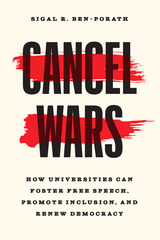 Cancel Wars: How Universities Can Foster Free Speech, Promote Inclusion, and Renew Democracy
Sigal R. Ben-Porath
University of Chicago Press, 2023 An even-handed exploration of the polarized state of campus politics that suggests ways for schools and universities to encourage discourse across difference.
College campuses have become flashpoints of the current culture war and, consequently, much ink has been spilled over the relationship between universities and the cultivation or coddling of young American minds. Philosopher Sigal R. Ben-Porath takes head-on arguments that infantilize students who speak out against violent and racist discourse on campus or rehash interpretations of the First Amendment. Ben-Porath sets out to demonstrate the role of the university in American society and, specifically, how it can model free speech in ways that promote democratic ideals.
In Cancel Wars, she argues that the escalating struggles over “cancel culture,” “safe spaces,” and free speech on campus are a manifestation of broader democratic erosion in the United States. At the same time, she takes a nuanced approach to the legitimate claims of harm put forward by those who are targeted by hate speech. Ben-Porath’s focus on the boundaries of acceptable speech (and on the disproportional impact that hate speech has on marginalized groups) sheds light on the responsibility of institutions to respond to extreme speech in ways that proactively establish conversations across difference. Establishing these conversations has profound implications for political discourse beyond the boundaries of collegiate institutions. If we can draw on the truth, expertise, and reliable sources of information that are within the work of academic institutions, we might harness the shared construction of knowledge that takes place at schools, colleges, and universities against truth decay. Of interest to teachers and school leaders, this book shows that by expanding and disseminating knowledge, universities can help rekindle the civic trust that is necessary for revitalizing democracy.
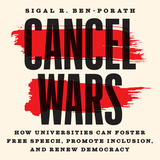 Cancel Wars: How Universities Can Foster Free Speech, Promote Inclusion, and Renew Democracy
Sigal R. Ben-Porath
University of Chicago Press, 2023 This is the audiobook version of this book.
An even-handed exploration of the polarized state of campus politics that suggests ways for schools and universities to encourage discourse across difference.
College campuses have become flashpoints of the current culture war and, consequently, much ink has been spilled over the relationship between universities and the cultivation or coddling of young American minds. Philosopher Sigal R. Ben-Porath takes head-on arguments that infantilize students who speak out against violent and racist discourse on campus or rehash interpretations of the First Amendment. Ben-Porath sets out to demonstrate the role of the university in American society and, specifically, how it can model free speech in ways that promote democratic ideals.
In Cancel Wars, she argues that the escalating struggles over “cancel culture,” “safe spaces,” and free speech on campus are a manifestation of broader democratic erosion in the United States. At the same time, she takes a nuanced approach to the legitimate claims of harm put forward by those who are targeted by hate speech. Ben-Porath’s focus on the boundaries of acceptable speech (and on the disproportional impact that hate speech has on marginalized groups) sheds light on the responsibility of institutions to respond to extreme speech in ways that proactively establish conversations across difference. Establishing these conversations has profound implications for political discourse beyond the boundaries of collegiate institutions. If we can draw on the truth, expertise, and reliable sources of information that are within the work of academic institutions, we might harness the shared construction of knowledge that takes place at schools, colleges, and universities against truth decay. Of interest to teachers and school leaders, this book shows that by expanding and disseminating knowledge, universities can help rekindle the civic trust that is necessary for revitalizing democracy.
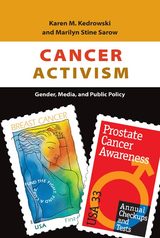 Cancer Activism: Gender, Media, and Public Policy
Karen M. Kedrowski and Marilyn Stine Sarow
University of Illinois Press, 2010 The first comparison of the breast cancer and the prostate cancer movements Cancer Activism explores the interplay between advocacy, the media, and public perception through an analysis of breast cancer and prostate cancer activist groups over a nearly twenty-year period. Despite both diseases having nearly identical mortality and morbidity rates, Karen M. Kedrowski and Marilyn Stine Sarow present evidence from more than 4,200 news articles to show that the different groups have had markedly different impacts. They trace the rise of each movement from its beginning and explore how discussions about the diseases appeared on media, public, and government agendas. In an important exception to the feminist tenet that women as a group hold less power than men, Kedrowski and Sarow demonstrate that the breast cancer movement is not only larger and better organized than the prostate cancer movement, it is also far more successful at shaping media coverage, public opinion, and government policy.
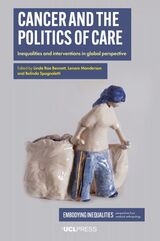 Cancer and the Politics of Care: Inequalities and Interventions in Global Perspective
Edited by Linda Rae Bennett, Lenore Manderson, and Belinda Spagnoletti
University College London, 2023 An ethnographic examination of the effects of structural inequalities on cancer treatment around the world.
Taking an ethnographic approach, the contributors to this book offer new examinations of cancer and its treatment to show how social, economic, race, gender, and other structural inequalities intersect, compound, and complicate health inequalities. Cancer experiences and impacts are explored across eleven countries: Argentina, Brazil, Denmark, France, Greece, India, Indonesia, Italy, Senegal, the United Kingdom, and the United States. The volume engages with specific cancers from the point of primary prevention to screening, diagnosis, treatment (or its absence), and end-of-life care. Cancer and the Politics of Care traverses new theoretical terrain by explicitly critiquing cancer interventions, their limitations and success, the politics that drive them, and their embeddedness in local cultures and value systems. Its diversity and innovation ensure its wide utility among those working in and studying medical anthropology, social anthropology, and other fields at the intersections of social science, medicine, and health equity.
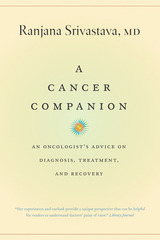 A Cancer Companion: An Oncologist's Advice on Diagnosis, Treatment, and Recovery
Ranjana Srivastava
University of Chicago Press, 2015 Cancer. It’s the diagnosis no one wants to hear. Unfortunately though, these days most of us have known or will know someone who receives it. But what’s next? With the diagnosis comes not only fear and uncertainty, but numerous questions, and a lot of unsolicited advice. With A Cancer Companion, esteemed oncologist Ranjana Srivastava is here to help, bringing both experience and honesty to guide cancer patients and their families through this labyrinth of questions and treatments.
With candor and compassion, Srivastava provides an approachable and authoritative reference. She begins with the big questions, like what cancer actually is, and she moves on to offer very practical advice on how to find an oncologist, what to expect during and after treatments, and how to manage pain, diet, and exercise. She discusses in detail the different therapies for cancers and why some cancers are inoperable, and she skillfully addresses the emotional toll of the disease. She speaks clearly and directly to cancer patients, caretakers, and their loved ones, offering straightforward information and insight, something that many oncologists can’t always convey in the office.
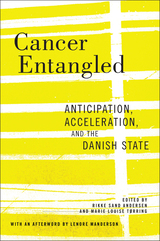 Cancer Entangled: Anticipation, Acceleration, and the Danish State
Rikke Sand Andersen
Rutgers University Press, 2023 Cancer Entangled explores the shifts that took place in Denmark around the millennium, when health promoters set out to minimize delays in cancer diagnoses in hope of improving cancer survival. The authors suggest a temporal reframing of cancer control that emphasizes the importance of focusing on how people – potential patients as well as health care professionals – experience and anticipate cancer before a diagnosis or a prediction has been made. This argument compellingly challenges and augments anthropological work on cancer control that has privileged attention to the productive role of science and technology and to life with cancer or cancer risk. By offering rich ethnographic insights into the introduction of the first cancer vaccine, cancer signs and symptoms, public discourses on delays, social class and care seeking, cancer suspicion in the clinic, as well as the work on fast-track referral – the book convincingly situates cancer control in an ethical registrar involving attention to acceleration and time, showing how cancer waiting times become an index of the "state of the nation".
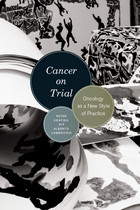 Cancer on Trial: Oncology as a New Style of Practice
Peter Keating and Alberto Cambrosio
University of Chicago Press, 2011 Until the early 1960s, cancer treatment consisted primarily of surgery and radiation therapy. Most practitioners then viewed the treatment of terminally ill cancer patients with heroic courses of chemotherapy as highly questionable. The randomized clinical trials that today sustain modern oncology were relatively rare and prompted stiff opposition from physicians, who were loath to assign patients randomly to competing treatments. Yet today these trials form the basis of medical oncology. How did such a spectacular change occur? How did medical oncology pivot from a nonentity and, in some regards, a reviled practice to the central position it now occupies in modern medicine?
In Cancer on Trial Peter Keating and Alberto Cambrosio explore how practitioners established a new style of practice, at the center of which lies the cancer clinical trial. Far from mere testing devices, these trials have become full-fledged experiments that have redefined the practices of clinicians, statisticians, and biologists. Keating and Cambrosio investigate these trials and how they have changed since the 1960s, all the while demonstrating their significant impact on the progression of oncology. A novel look at the institution of clinical cancer research and therapy, this book will be warmly welcomed by historians, sociologists, and anthropologists of science and medicine, as well as clinicians and researchers in the cancer field.
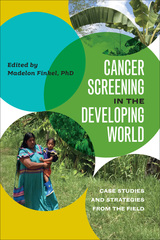 Cancer Screening in the Developing World: Case Studies and Strategies from the Field
Edited by Madelon L. Finkel
Dartmouth College Press, 2018 Worldwide, cancer is responsible for one in eight deaths—more than AIDS, tuberculosis, and malaria combined. This global burden starkly illustrates the inequality between the developed and the developing world. While the majority of people living in developed countries receive timely treatment, those living in developing countries are not as fortunate and their survival rates are much lower—not only due to delays in diagnosis, but also to a lack of personnel, a paucity of treatment facilities, and the unavailability of many medications. Routine screening—a mainstay in the developed world—could greatly increase the likelihood of identifying individuals with early stage cancers and thus reduce the number of people who present with advanced disease. This book represents a critical addition to the literature of global health studies. Focusing on cervical, breast, and oral cancers, these case studies highlight innovative strategies in cancer screening in a diverse array of developing countries. The authors discuss common issues and share how obstacles—medical, economic, legal, social, and psychological—were addressed or overcome in specific settings. Each chapter offers an empirical discussion of the nature and scope of a screening program, the methodology used, and its findings, along with a candid discussion of challenges and limitations and suggestions for future efforts.
 The Cancer Stage of Capitalism: From Crisis to Cure
John McMurtry
Pluto Press, 2013 The Cancer Stage of Capitalism is a modern classic of critical philosophy and political economy, renowned for its depth and comprehensive research. It provides a step by step diagnosis of the continuing economic collapse in the US and Europe and has had an enormous influence on new visions of economic alternatives.
John McMurtry argues that our world disorder of unending crises is the predictable result of a cancerous economic system multiplying out of all control and destroying ecological, social and organic life - a process he describes as 'global ecogenocide'. In this updated edition he explains the ‘social immune response’ required to fight the ‘macro cancer’, something which has already been shown in developments such as the Occupy movement and the democratic social transformation of Latin America.
In an official global culture increasingly destructive of life, this book shows the necessity and possibility of building a sustainable society based on a universal commitment to life and nature.
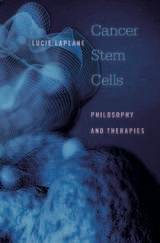 Cancer Stem Cells: Philosophy and Therapies
Lucie Laplane
Harvard University Press, 2016 An innovative theory proposes a new therapeutic strategy to break the stalemate in the war on cancer. It is called cancer stem cell (CSC) theory, and Lucie Laplane offers a comprehensive analysis, based on an original interdisciplinary approach that combines biology, biomedical history, and philosophy.
Rather than treat cancer by aggressively trying to eliminate all cancerous cells—with harmful side effects for patients—CSC theory suggests the possibility of targeting the CSCs, a small fraction of cells that lie at the root of cancers. CSCs are cancer cells that also have the defining properties of stem cells—the abilities to self-renew and to differentiate. According to this theory, only CSCs and no other cancer cells can induce tumor formation.
To date, researchers have not agreed on the defining feature of CSCs—their stemness. Drawing from a philosophical perspective, Laplane shows that there are four possible ways to understand this property: stemness can be categorical (an intrinsic property of stem cells), dispositional (an intrinsic property whose expression depends on external stimuli), relational (an extrinsic property determined by a cell’s relationship with the microenvironment), or systemic (an extrinsic property controlled at the system level). Our ability to cure cancers may well depend upon determining how these definitions apply to different types of cancers.
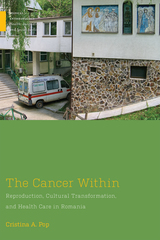 The Cancer Within: Reproduction, Cultural Transformation, and Health Care in Romania
Cristina A. Pop
Rutgers University Press, 2022 The Cancer Within examines cervical cancer in Romania as a point of entry into an anthropological reflection on contemporary health care. Cervical cancer prevention reveals the inner workings of emerging post-communist medicine, which aligns the state and the market, public and private health care providers, policy makers, and ordinary women. Fashioned by patriarchal relations, lived religion, and the historical trauma of pronatalism, Romanian women’s responses to reproductive medicine and cervical cancer prevention are complicated by neoliberal reforms to medical care. Cervical cancer prevention – and especially the HPV vaccination – provided Romanians a legitimate instance to express their conflicting views of post-communist medicine. What sets Romania apart is that pronatalism, patriarchy, lived religion, medical reforms, and moral contestation of preventive medicine bring into line systemic contingencies that expose the historical, social, and cultural trajectories of cervical cancer.
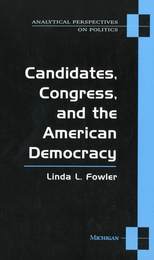 Candidates, Congress, and the American Democracy
Linda L. Fowler
University of Michigan Press, 1993 In Candidates, Congress, and the American Democracy Linda L. Fowler provides a wide-ranging examination of candidacy as a source of both stability and change in U.S. politics. An expert on political candidates, she brings a novel perspective to the topic by emphasizing that candidates are necessary instruments for popular control of government. Fowler maintains that the ambitions of individual candidates are essential to the functioning of the nation's constitutional system and are important factors in its political history. She traces the influence of candidates in fostering electoral competition, promoting the representation of such newly mobilized groups of citizens as women and ethnic minorities, and transforming political institutions and parties. Despite the importance of candidacy, the institution is poorly understood because both scholars and voters tend to limit their focus on candidates to the narrow context of election campaigns. The author argues that a broader view reveals how candidates are linked to a variety of trends and contradictions in contemporary U.S. politics.
Candle Feather Wooden Spoon: New Jewish Stories
Rabbi Zoe Klein
Central Conference of American Rabbis, 2023 A collection of original stories by acclaimed author Rabbi Zoë Klein, Candle, Feather, Wooden Spoon invites readers on a magical, mystical journey. With settings both traditional and contemporary, the stories each highlight an essential aspect of living a meaningful Jewish life. Appropriate for all ages, the many tales include "Time Palace," a legend of how the Jewish people created Shabbat; "Yofiel," the story of an angel who keeps revealing the secrets of Torah; "Shalom Bayit," imagining the chuppah as a metaphor for powerful social change; and "Candle, Feather, Wooden Spoon," which reframes these traditional Passover objects as tools for intergenerational healing. Whether you're a rabbi, cantor, or educator--the storytellers of our community--or just a lover of stories, this book is sure to stir your heart and inspire your spirit.
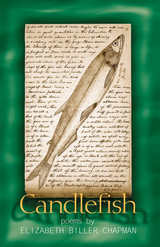 Candlefish: Poems
Elizabeth Chapman
University of Arkansas Press, 2004 The candlefish, enormous schools of which enter the Pacific Northwest’s rivers in the spring, is so rich with oil that when supplied with a wick it can be used as a candle. Thus creatures of the water become transformed into instruments of fire and spirit, ultimately transcending this world. Written as the author begins to navigate the second half of life, Candlefish unfolds along multiple lines of narrative and reflection. Each poem is rendered from experience and made incandescent by the spark of the author’s intellect and insight. Whether tending the flower beds, skinnydipping on her birthday, conversing with a grown daughter, or bringing inside the teacup her husband can no longer carry, Elizabeth Biller Chapman distills each moment to its most vital components and makes them luminous with the necessity and surprise of relation. Elizabeth Biller Chapman’s candlefish gracefully swim toward the pierced horizon all of us must face and are transformed by imaginative compassion as the book develops, season by season, from summer to spring.
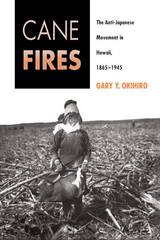 Cane Fires: The Anti-Japanese Movement in Hawaii, 1865-1945
Gary Y. Okihiro
Temple University Press, 1992 Outstanding Book in History and Social Science Award, Association for Asian American Studies, 1992
"Okihiro's account is an important corrective to our understanding of the Japanese American Experience in World War II."
--The Hawaiian Journal of History
Challenging the prevailing view of Hawaii as a mythical "racial paradise," Gary Okihiro presents this history of a systematic anti-Japanese movement in the islands from the time migrant workers were brought to the sugar cane fields until the end of World War II. He demonstrates that the racial discrimination against Japanese Americans that occurred on the West Coast during the second World War closely paralleled the less familiar oppression of Hawaii's Japanese, which evolved from the production needs of the sugar planters to the military's concern over the "menace of alien domination."
Okihiro convincingly argues that those concerns motivated the consolidation of the plantation owners, the Territorial government, and the U.S. military-Hawaii's elite-into a single force that propelled the anti-Japanese movement, while the military devised secret plans for martial law and the removal and detention of Japanese Americans in Hawaii two decades before World War II.
Excerpt
Read an excerpt from Chapter 1 (pdf).
Reviews
"Scholars of American race relations will want to read this book. So will anyone interested in Hawaii's history or in the experiences of Japanese or Asian Americans. It will go far in putting to rest any residual notion that the WWII experiences of the Japanese Americans represented 'aberration' or 'hysterical' reaction to wartime exigencies."
--Franklin S. Odo, University of Hawaii at Manoa
"A well-researched and well-written treatment of the subject."
--Library Journal
Contents
Illustrations
Preface
Part I: Years of Migrant Labor, 1986-1909
1. So Much Charity, So Little Democracy
2. Hole Hole Bushi
3. With the Force of Wildfire
Part II: Years of Dependency, 1910-1940
4. Cane Fires
5. In the National Defense
6. Race War
7. Extinguishing the Dawn
8. Dark Designs
Part III: World War II, 1941-1945
9. Into the Cold Night Rain
10. Bivouac Song
11. In Morning Sunlight
Notes
Index
About the Author(s)
Gary Y. Okihiro is Associate Professor of History at Cornell University.
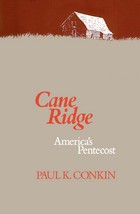 Cane Ridge: America's Pentecost
Paul K. Conkin
University of Wisconsin Press, 1990 What happened at or near the Cane Ridge meeting house in central Kentucky in August 1801 has become a legendary event in American religious history. Never before in America had so many thousands of people gathered for what became much more than the planned Presbyterian communion service. Never had so many families camped on the grounds. Never before had so many people been affected with involuntary physical exercises—sobbing, shouting, shaking, and swooning. And never before in American had a religious meeting led to so much national publicity, triggered so much controversy, or helped provoke such important denominational schisms.
Paul Conkin tells the story of Cane Ridge in all its dimensions. The backdrop involves the convoluted history of Scotch-Irish Presbyterianism in America, the pluralistic religious environment in early Kentucky, and the gradual evolution of a new form of evangelical religious culture in eighteenth-century America.
The aftermath was complex. Cane Ridge helped popularize religious camps and influenced the subsequent development of planned camp meetings. It exposed deep and developing divisions of doctrine among Presbyterian clergy, and contributed to the birth of two new denominations —Christians (Disciples of Christ) and Cumberland Presbyterians and furthered the growth of a new revival culture, keyed to a crisis-like conversion experience, even as it marked a gradual decline in sacramentalism.
 Canfield Drive: A History of Race and the American City on a Street in St. Louis
Matthew Knox Averett
University of Missouri Press, 2025 On August 9, 2014, Michael Brown and a friend were walking down Canfield Drive, a residential street in the St. Louis suburb of Ferguson. There, they encountered Ferguson Police Officer Darren Wilson. Moments later, Brown was dead on the street—shot by Wilson at least six times. That evening, a memorial appeared on the pavement where he had fallen. In the days that followed, vigils turned into protests, and protests into an Uprising, as police in riot gear faced off with a grieving, outraged community. For nearly two weeks, Ferguson commanded the nation’s attention. The killing of Michael Brown was an outrage and it should not have happened. But Canfield Drive was primed for tragedy long before that fatal encounter because the street was already a place of racial conflict. This was no accident.
Canfield Drive: A History of Race and the American City on a Street in St. Louis uncovers the deeper history behind the street where Brown died, tracing how race and the built environment have long intersected in St. Louis—from the city’s founding to the Ferguson Uprising. The book follows the story of Black space across two centuries: from early Black communities, to the birth of the St. Louis Blues, to the Halcyon days of The Ville, to the destruction of Mill Creek Valley, to the tragedy of Pruitt-Igoe, and to the construction of Canfield Drive. Though Canfield Drive is the first comprehensive history of St. Louis’s Black urban landscape, it is more than just St. Louis's story. Canfield Drive details the racial engineering of the American city. Here is the machinery of American segregation laid bare: occupancy covenants, court decisions, racial steering, white flight, public housing, voucher systems, and predatory policing that combine to transform neighborhoods into traps. Here too are the people who fought back, building community against staggering odds and securing civil rights reforms that transformed America's understanding of government's obligations to its citizens.
Canfield Drive provides a powerful lens on the national story of race and the American city and reveals how Michael Brown's death was not just one officer's deadly decision, but the inevitable outcome of America's built environment—a tragedy centuries in the making, on a street designed for violence. This is how a place becomes a powder keg. This is how history erupts into headlines. This is the story behind the story that America couldn't look away from. This is the story of how a street came to matter, and how it came to stand for something far greater than itself.
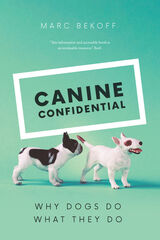 Canine Confidential: Why Dogs Do What They Do
Marc Bekoff
University of Chicago Press, 2018 For all the love and attention we give dogs, much of what they do remains mysterious. Just think about different behaviors you see at a dog park: We have a good understanding of what it means when dogs wag their tails—but what about when they sniff and roll on a stinky spot? Why do they play tug-of-war with one dog, while showing their bellies to another? Why are some dogs shy, while others are bold? What goes on in dogs’ heads and hearts—and how much can we know and understand?
Canine Confidential has the answers. Written by award-winning scientist—and lifelong dog lover—Marc Bekoff, it not only brilliantly opens up the world of dog behavior, but also helps us understand how we can make our dogs’ lives the best they can possibly be. Rooted in the most up-to-date science on cognition and emotion—fields that have exploded in recent years—Canine Confidential is a wonderfully accessible treasure trove of new information and myth-busting. Peeing, we learn, isn’t always marking; grass-eating isn’t always an attempt to trigger vomiting; it’s okay to hug a dog—on their terms; and so much more. There’s still much we don’t know, but at the core of the book is the certainty that dogs do have deep emotional lives, and that as their companions we must try to make those lives as rich and fulfilling as possible. It’s also clear that we must look at dogs as unique individuals and refrain from talking about “the dog.”
Bekoff also considers the practical importance of knowing details about dog behavior. He advocates strongly for positive training—there’s no need to dominate or shame dogs or to make them live in fear—and the detailed information contained in Canine Confidential has a good deal of significance for dog trainers and teachers. He also suggests that trainers should watch and study dogs in various contexts outside of those in which they are dealing with clients, canine and human, with specific needs.
There’s nothing in the world as heartwarming as being greeted by your dog at the end of the workday. Read Canine Confidential, and you’ll be on the road to making your shared lives as happy, healthy, and rewarding as they can possibly be.
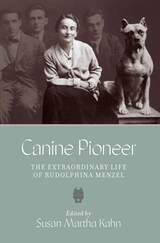 Canine Pioneer: The Extraordinary Life of Rudolphina Menzel
Edited by Susan Martha Kahn
Brandeis University Press, 2022 An insightful look at the life and legacy of a pioneer cynologist between Europe and Israel.
Rudolphina Menzel (née Waltuch, 1891–1973), was a Viennese-born, Jewish scientist whose pioneering research on canine psychology, development, and behavior fundamentally shaped the ways dogs came to be trained, cared for, and understood. Between the two world wars, Menzel was known throughout Europe as one of the foremost breeders and trainers of police dogs and served as a sought-after consultant at Kummersdorf, the German military dog training institute in Berlin. She was also a fervent Zionist who was responsible for inventing the canine infrastructure in what came to be the State of Israel and for training hundreds of dogs to protect Jewish lives and property in pre-state Palestine. Teaching Jews to like dogs and training dogs to serve Jews became Menzel’s unique kind of Zionist mission. Detailed and insightful, Canine Pioneer: The Extraordinary Life of Rudolphina Menzel brings to light an important piece of history.
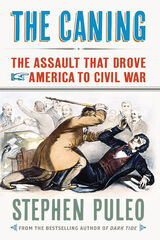 The Caning: The Assault That Drove America to Civil War
Stephen Puleo
Westholme Publishing, 2012 A Turning Point in American History, the Beating of U.S. Senator Charles Sumner and the Beginning of the War Over Slavery
Early in the afternoon of May 22, 1856, ardent pro-slavery Congressman Preston S. Brooks of South Carolina strode into the United States Senate Chamber in Washington, D.C., and began beating renowned anti-slavery Senator Charles Sumner with a gold-topped walking cane. Brooks struck again and again—more than thirty times across Sumner’s head, face, and shoulders—until his cane splintered into pieces and the helpless Massachusetts senator, having nearly wrenched his desk from its fixed base, lay unconscious and covered in blood. It was a retaliatory attack. Forty-eight hours earlier, Sumner had concluded a speech on the Senate floor that had spanned two days, during which he vilified Southern slaveowners for violence occurring in Kansas, called Stephen A. Douglas of Illinois a “noise-some, squat, and nameless animal,” and famously charged Brooks’s second cousin, South Carolina Senator Andrew Butler, as having “a mistress. . . who ugly to others, is always lovely to him. . . . I mean, the harlot, Slavery.” Brooks not only shattered his cane during the beating, but also destroyed any pretense of civility between North and South.
One of the most shocking and provocative events in American history, the caning convinced each side that the gulf between them was unbridgeable and that they could no longer discuss their vast differences of opinion regarding slavery on any reasonable level.The Caning: The Assault That Drove America to Civil War tells the incredible story of this transformative event. While Sumner eventually recovered after a lengthy convalescence, compromise had suffered a mortal blow. Moderate voices were drowned out completely; extremist views accelerated, became intractable, and locked both sides on a tragic collision course.
The caning had an enormous impact on the events that followed over the next four years: the meteoric rise of the Republican Party and Abraham Lincoln; the Dred Scott decision; the increasing militancy of abolitionists, notably John Brown’s actions; and the secession of the Southern states and the founding of the Confederacy. As a result of the caning, the country was pushed, inexorably and unstoppably, to war. Many factors conspired to cause the Civil War, but it was the caning that made conflict and disunion unavoidable five years later.
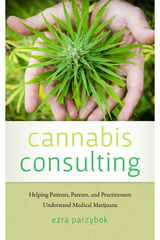 Cannabis Consulting: Helping Patients, Parents, and Practitioners Understand Medical Marijuana
Ezra Parzybok
University Press of New England, 2018 As the movement for legalization of marijuana spreads across the country, it is important to weigh the possible benefits and pitfalls of cannabis use. Cannabis Consulting is both a handbook and a report from the front lines of medical marijuana use. Writing from the perspective of a parent and veteran schoolteacher turned professional cannabis consultant, Ezra Parzybok tells the often-inspiring stories of his practice, where he assists victims of chronic pain, terminal disease, and even conditions such as ADHD. This timely volume was written for patients and families, law enforcement and health professionals, who are trying to make decisions about cannabis during this critical era of transition. It is an honest, clear-eyed exploration of the marijuana debate that looks beyond the hype and disinformation on both sides to chart a new path toward rational and safe use of cannabis.
Cannabis in Arabic Verse and Prose
Adam Bremer-McCollum
Harvard University Press From the thirteenth to the fifteenth centuries, a number of historians, jurists, poets, and others writing in Arabic turned their attention to a newly arrived plant, Cannabis indica, noting its psychoactive powers and how it first spread among Sufis. They discuss cannabis’s origins, who uses it and how, and whether or not it should be used. These works range from historical narratives to anecdotal, sometimes humorous, stories to legal remarks, all buttressed by quotations from poetry. Cannabis in Arabic Verse and Prose also includes a famous section from historian al-Maqrīzī’s (1364–1442) influential work on Egypt, excerpts from treatises by lesser-known writers, and the most important text on the subject from this time period by poet al-Badrī (1443–1489). This edition presents the Arabic texts with facing English translations, an Arabic-English glossary, and commentary.
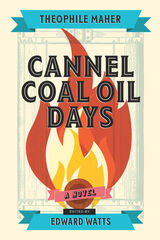 Cannel Coal Oil Days: A Novel
Theophile Maher
West Virginia University Press, 2021 A newly discovered nineteenth-century novel about West Virginia breaking away from Virginia, set amid the cannel coal boom and featuring an interracial abolitionist movement.
Based mostly on his own experiences, Theophile Maher’s local color novel Cannel Coal Oil Days challenges many popular ideas about antebellum Appalachia, bringing it more fully into the broader story of the United States. Written in 1887, discovered in 2018, and published here for the first time, it offers a narrative of life between 1859 and 1861 in what was then western Virginia as it became West Virginia.
Cannel coal (a soft form of coal whose oil, when distilled, was competitive in the lighting oil business after overfishing reduced the whale oil supply) was at the center of one of Appalachia’s first extractive industries. Using the development of coal oil manufacturing in the Kanawha valley as its launching point, Maher’s semiautobiographical novel tells of a series of interrelated changes, each reflecting larger transformations in the United States as a whole. It shows how coal oil manufacturing was transformed from an amateurish endeavor to a more professional industry, with implications for Appalachian environment and labor. Then, Maher foreshadows the coming Progressive Era by insisting on moral and environmental reforms based in democratic and Christian principles. Finally, he tells the story of the coming of the Civil War to the region, as the novel’s protagonist, a mining engineer, works closely with a Black family to organize the local abolitionist mountain folk into a Union militia to aid in the secession of West Virginia from Virginia.
 Cannibal Democracy: Race and Representation in the Literature of the Americas
Zita Nunes
University of Minnesota Press, 2008 Zita Nunes argues that the prevailing narratives of identity formation throughout the Americas share a dependence on metaphors of incorporation and, often, of cannibalism. From the position of the incorporating body, the construction of a national and racial identity through a process of assimilation presupposes a remainder, a residue. Nunes addresses works by writers and artists who explore what is left behind in the formation of national identities and speak to the limits of the contemporary discourse of democracy. Cannibal Democracy tracks its central metaphor’s circulation through the work of writers such as Mário de Andrade, W. E. B. Du Bois, and Toni Morrison and journalists of the black press, as well as work by visual artists including Magdalena Campos-Pons and Keith Piper, and reveals how exclusion-understood in terms of what is left out-can be fruitfully understood in terms of what is left over from a process of unification or incorporation. Nunes shows that while this remainder can be deferred into the future-lurking as a threat to the desired stability of the present-the residue haunts discourses of national unity, undermining the ideologies of democracy that claim to resolve issues of race. Zita Nunes is associate professor of English at the University of Maryland, College Park.
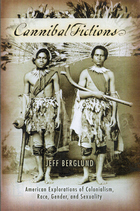 Cannibal Fictions: American Explorations of Colonialism, Race, Gender, and Sexuality
Jeff Berglund
University of Wisconsin Press, 2006 Objects of fear and fascination, cannibals have long signified an elemental "otherness," an existence outside the bounds of normalcy. In the American imagination, the figure of the cannibal has evolved tellingly over time, as Jeff Berglund shows in this study encompassing a strikingly eclectic collection of cultural, literary, and cinematic texts.
Cannibal Fictions brings together two discrete periods in U.S. history: the years between the Civil War and World War I, the high-water mark in America's imperial presence, and the post-Vietnam era, when the nation was beginning to seriously question its own global agenda. Berglund shows how P. T. Barnum, in a traveling exhibit featuring so-called "Fiji cannibals," served up an alien "other" for popular consumption, while Edgar Rice Burroughs in his Tarzan of the Apes series tapped into similar anxieties about the eruption of foreign elements into a homogeneous culture. Turning to the last decades of the twentieth century, Berglund considers how treatments of cannibalism variously perpetuated or subverted racist, sexist, and homophobic ideologies rooted in earlier times. Fannie Flagg's novel Fried Green Tomatoes invokes cannibalism to new effect, offering an explicit critique of racial, gender, and sexual politics (an element to a large extent suppressed in the movie adaptation). Recurring motifs in contemporary Native American writing suggest how Western expansion has, cannibalistically, laid the seeds of its own destruction. And James Dobson's recent efforts to link the pro-life agenda to allegations of cannibalism in China testify still further to the currency and pervasiveness of this powerful trope.
By highlighting practices that preclude the many from becoming one, these representations of cannibalism, Berglund argues, call into question the comforting national narrative of e pluribus unum.
 Cannibal Metaphysics
Eduardo Viveiros de Castro
University of Minnesota Press, 2017 The iconoclastic Brazilian anthropologist and theoretician Eduardo Viveiros de Castro, well known in his discipline for helping initiate its “ontological turn,” offers a vision of anthropology as “the practice of the permanent decolonization of thought.” After showing that Amazonian and other Amerindian groups inhabit a radically different conceptual universe than ours—in which nature and culture, human and nonhuman, subject and object are conceived in terms that reverse our own—he presents the case for anthropology as the study of such “other” metaphysical schemes, and as the corresponding critique of the concepts imposed on them by the human sciences. Along the way, he spells out the consequences of this anthropology for thinking in general via a major reassessment of the work of Claude Lévi-Strauss, arguments for the continued relevance of Deleuze and Guattari, dialogues with the work of Philippe Descola, Bruno Latour, and Marilyn Strathern, and inventive treatments of problems of ontology, translation, and transformation. Bold, unexpected, and profound, Cannibal Metaphysics is one of the chief works marking anthropology’s current return to the theoretical center stage.
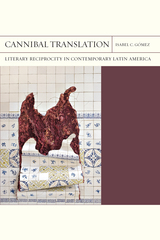 Cannibal Translation: Literary Reciprocity in Contemporary Latin America
Isabel C. Gómez
Northwestern University Press, 2023 Winner of the 2024 ACLA Harry Levin Prize
A bold comparative study illustrating the creative potential of translations that embrace mutuality and resist assimilation
Cannibal translators digest, recombine, transform, and trouble their source materials. Isabel C. Gómez makes the case for this model of literary production by excavating a network of translation projects in Latin America that includes canonical writers of the twentieth century, such as Haroldo and Augusto de Campos, Rosario Castellanos, Clarice Lispector, José Emilio Pacheco, Octavio Paz, and Ángel Rama. Building on the avant-garde reclaiming of cannibalism as an Indigenous practice meant to honorably incorporate the other into the self, these authors took up Brazilian theories of translation in Spanish to fashion a distinctly Latin American literary exchange, one that rejected normative and Anglocentric approaches to translation and developed collaborative techniques to bring about a new understanding of world literature.
By shedding new light on the political and aesthetic pathways of translation movements beyond the Global North, Gómez offers an alternative conception of the theoretical and ethical challenges posed by this artistic practice. Cannibal Translation: Literary Reciprocity in Contemporary Latin America mobilizes a capacious archive of personal letters, publishers’ records, newspapers, and new media to illuminate inventive strategies of collectivity and process, such as untranslation, transcreation, intersectional autobiographical translation, and transpeaking. The book invites readers to find fresh meaning in other translational histories and question the practices that mediate literary circulation.
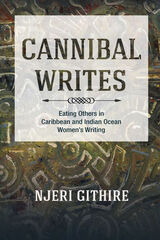 Cannibal Writes: Eating Others in Caribbean and Indian Ocean Women's Writing
Njeri Githire
University of Illinois Press, 2014 Postcolonial and diaspora studies scholars and critics have paid increasing attention to the use of metaphors of food, eating, digestion, and various affiliated actions such as loss of appetite, indigestion, and regurgitation. As such stylistic devices proliferated in the works of non-Western women writers, scholars connected metaphors of eating and consumption to colonial and imperial domination.
In Cannibal Writes, Njeri Githire concentrates on the gendered and sexualized dimensions of these visceral metaphors of consumption in works by women writers from Haiti, Jamaica, Mauritius, and elsewhere. Employing theoretical analysis and insightful readings of English- and French-language texts, she explores the prominence of alimentary-related tropes and their relationship to sexual consumption, writing, global geopolitics and economic dynamics, and migration. As she shows, the use of cannibalism in particular as a central motif opens up privileged modes for mediating historical and sociopolitical issues.
Ambitiously comparative, Cannibal Writes ranges across the works of well-known and lesser known writers to tie together two geographic and cultural spaces that have much in common but are seldom studied in parallel.
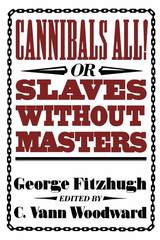 Cannibals All! Or, Slaves without Masters
George Fitzhugh
Harvard University Press, 1960 Cannibals All! got more attention in William Lloyd Garrison’s Liberator than any other book in the history of that abolitionist journal. And Lincoln is said to have been more angered by George Fitzhugh than by any other pro-slavery writer, yet he unconsciously paraphrased Cannibals All! in his House Divided speech.
Fitzhugh was provocative because of his stinging attack on free society, laissez-faire economy, and wage slavery, along with their philosophical underpinnings. He used socialist doctrine to defend slavery and drew upon the same evidence Marx used in his indictment of capitalism. Socialism, he held, was only “the new fashionable name for slavery,” though slavery was far more humane and responsible, “the best and most common form of socialism.”
His most effective testimony was furnished by the abolitionists themselves. He combed the diatribes of their friends, the reformers, transcendentalists, and utopians, against the social evils of the North. “Why all this,” he asked, “except that free society is a failure?”
The trouble all started, according to Fitzhugh, with John Locke, “a presumptuous charlatan,” and with the heresies of the Enlightenment. In the great Lockean consensus that makes up American thought from Benjamin Franklin to Franklin Roosevelt, Fitzhugh therefore stands out as a lone dissenter who makes the conventional polarities between Jefferson and Hamilton, or Hoover and Roosevelt, seem insignificant. Beside him Taylor, Randolph, and Calhoun blend inconspicuously into the American consensus, all being apostles of John Locke in some degree. An intellectual tradition that suffers from uniformity—even if it is virtuous, liberal conformity—could stand a bit of contrast, and George Fitzhugh can supply more of it than any other American thinker.
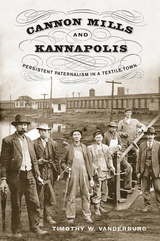 Cannon Mills and Kannapolis: Persistent Paternalism in a Textile Town
Timothy W. Vanderburg
University of Tennessee Press, 2013 Cannon Mills was once the country’s largest manufacturer of household textiles, and in many ways it exemplified the textile industry and paternalism in the postbellum South. At the same time, however, its particular brand of paternalism was much stronger and more enduring than elsewhere, and it remained in place long after most of the industry had transitioned to modern, bureaucratic management.
In Cannon Mills and Kannapolis, Tim Vanderburg critically examines the rise of the Cannon Mills textile company and the North Carolina community that grew up around it. Beginning with the founding of the company and the establishment of its mill town by James W. Cannon, the author draws on a wealth of primary sources to show how, under Cannon’s paternalism, workers developed a collective identity and for generations accepted the limits this paternalism placed on their freedom. After exploring the growth and maturation of Cannon Mills against the backdrop of World War I and its aftermath, Vanderburg examines the impact of the Great Depression and World War II and then analyzes the postwar market forces that, along with federal policies and unionization, set in motion the industry’s shift from a paternalistic model to bureaucratic authority. The final section of the book traces the decline of paternalism and the eventual decline of Cannon Mills when the death of the founder’s son, Charles Cannon, led to three successive sales of the company. Pillowtex, its final owner, filed for bankruptcy and was liquidated in 2003.
Vanderburg uses Cannon Mills’s intriguing history to help answer some of the larger questions involving industry and paternalism in the postbellum South. Complete with maps and historic photographs, this authoritative, highly readable account of one company and the town it created adds a captivating layer of complexity to our understanding of southern capitalism.
Cannoneers in Gray: The Field Artillery of the Army of Tennessee
Larry J. Daniel
University of Alabama Press, 1989 A highly regarded resource on a critical aspect of the Civil War
This enlarged edition of Cannoneers in Gray provides new detail concerning the activities of artillery units operating in key campaigns of the western theater of the Civil War—at Stones River, Missionary Ridge, Kennesaw Mountain, Shiloh, Peachtree Creek. Larry Daniel traces the four-year history of the artillery branch of the Army of Tennessee from its organization through its demise at the war's end. He shows that Civil War cannons were of little consequence when used as offensive weapons but could be highly effective in defense.
Includes five new maps of campaigns and battles central to his discussion of larger issues, such as command and strategy on the western front.
Canoe Country Camping: Wilderness Skills for the Boundary Waters and Quetico
Michael Furtman
University of Minnesota Press, 2002 Canoe Country Camping is a complete, entertaining, and up-to-date guide that gives you the information you need for a safe and enjoyable canoe trip. First-time campers will find answers to all their questions about where to go, how to pack, and what to do. Seasoned campers will find helpful tips to streamline their planning and make their next trip better than ever. Prepare for all the challenges of the wilderness from the obvious to the unexpected. Michael Furtman, experienced Boundary Waters and Quetico canoeist, helps you: plan your adventure, pick your gear, pack for the portage, paddle efficiently, and prepare a comfortable camp. Canoe Country Camping is chock full of handy checklists, helpful charts, and detailed drawings. Use it before you go. Take it along in your pack for quick reference. Then get out there with confidence, relax and enjoy your trip.
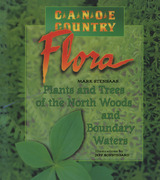 Canoe Country Flora: Plants and Trees of the North Woods and Boundary Waters
Mark Stensaas
University of Minnesota Press, 2004 The vast North Woods, a land magnificently arrayed in the deep greens of pine, spruce, and fir and the brilliant blues of crystal clear lakes, spans the area from Minnesota to Maine and from Michigan to Hudson Bay. With a little help fromCanoe Country Flora, keen explorers will discover a world full of life and wonder in the plants that thrive in this beautiful lake country. Canoe Country Flora, a friendly field guide, introduces you to ninety-six of the most common trees, shrubs, wildflowers, fungi, ferns, lichens, and other plants you’re likely to encounter during your travels north. Detailed line drawings and brief plant profiles help you recognize what you’re seeing, while “Sparky” Stensaas’s intriguing tales draw you into a deeper study of the plants’s natural and cultural histories. Each plant is made identifiable and memorable by fascinating facts, handy checklists, diagrams and charts, and interesting activities that help adults and children learn by discovery. Use this book as a companion to Canoe Country Wildlife or alone as your guide to a unique North Woods adventure.
 Canoe Country Wildlife: A Field Guide to the North Woods and Boundary Waters
Mark Stensaas
University of Minnesota Press, 2004 Warblers, wolves, and whirligig beetles—the creatures of the canoe countrywilderness come alive in Canoe Country Wildlife. In this read-aloud treasure, “Sparky” Stensaas, naturalist and storyteller, intrigues you with his tales of encounters with the forest inhabitants—from tiny toads to majestic moose. Canoe Country Wildlife, a friendly field guide, introduces you to the wildlife you are most likely to see as you travel in the North Woods. It describes these creatures and their habits accurately so you’ll know where and when to look for them. Detailed line drawings illustrate each animal clearly so you’ll recognize what you’re seeing. The book is filled with fascinating little-known facts: Did you know that wood frogs can freeze solid, only to live again? That loons can fly a hundred miles an hour? That chipmunks can carry seventy sunflower seeds in their cheeks? Canoe Country Wildlife includes handy checklists to help you keep track of the critters you encounter, a calendar for you to record the natural events you witness, and activities—one for each animal—that will help both adults and children learn by discovery. Carry Canoe Country Wildlife in your pack. Your trip will be more enjoyable and your memories will last forever. It’s a great gift for anyone who loves the outdoors.
Canoeing the Delaware River
Letcher, Gary
Rutgers University Press, 1997 Canoeing the Delaware River provides a mile-by-mile account of the Delaware's course from where the East and West Branches meet in Hancock, New York, two hundred miles downstream to tidewater at Trenton, New Jersey. The book describes rapids, access areas, and points of interest in detail. It is an invaluable resource to both the novice out for an afternoon paddle and the adventurer on a ten-day trip. This completely revised and updated edition provides new maps, guides to river outfitters, campgrounds, information sources on river conditions, and new photographs.In addition to guiding the way, Canoeing the Delaware River portrays the people, places, and events associated with the river from its colorful past through present times. Gary Letcher also includes information on canoe safety and environmental concerns.
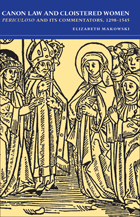 Canon Law and Cloistered Women: Periculoso and Its Commentators, 1298–1545 (Studies in Medieval and Early Modern Canon Law, Volume 5)
Elizabeth Makowski
Catholic University of America Press, 1997 Pope Boniface VIII (1294-1303) published a decree in 1298 that transformed long-standing attitudes toward nuns into universal Church law. Referred to as Periculoso, the first word of the Latin text, this decree announced that all nuns, no matter what rule they observed and no matter where their monasteries were located, were to be perpetually cloistered. With the exception of those who were contagiously ill, nuns were under no circumstances to break the law of enclosure, either by leaving their monasteries or by inviting unauthorized persons into them. Ultimately, the decree altered the lives of nuns, while indirectly abetting the move toward alternatives to the cloister. Although historians of women religious have frequently cited Periculoso as a milestone, the text of the law and the legal comment that its publication occasioned have never before been exhaustively studied.
Canon Law and Cloistered Women provides the most thorough examination to date of the landmark decree. Elizabeth Makowski surveys precedents for Periculoso as well as some of the problems Boniface VIII hoped to solve with his legislation. She further analyzes the commentary on Periculoso, much of it written by practicing lawyers, which unveils late medieval attitudes toward nuns and their male counterparts. Finally, she concludes with a discussion of the attempts to enforce the legislation.
Makowski's analysis illustrates not only the contribution that similar investigations of local efforts on the Continent might make to our understanding of conventual life, but also the difficulties—so often alluded to by medieval canonists—of making the "ideal" real.
ABOUT THE AUTHOR:
Elizabeth Makowski is associate professor of history at Southwest Texas State University. She is the coauthor of Wykked Wyves and the Woes of Marriage: Misogamous Literature from Juvenal to Chaucer (SUNY Press, 1989) and the author of numerous articles and book reviews.
PRAISE FOR THE BOOK:
"This is a significant contribution to the study of female monasticism. . . . Makowski's work is a welcome effort to understand the monastic discipline of enclosure and its application to convents. . . . What Makowski does in this fine study is to help scholars understand what [Periculoso] meant, both in the context in which it was fashioned and in the world of subsequent commentary. . . . An important book that should be required reading for all scholars of male and female monasticism."—Sixteenth Century Journal
"This is a clearly written survey of the decree and of medieval commentaries on it up to the Council of Trent. It will be of interest to historians both of legal and social history as well as throwing light upon the background of a much debated topic among religious orders."—English Historical Review
"[The] work is well-written, contains helpful information on the topic in context, and should be a useful resource for those interested in this historical era as well as for those intrigued by the institutional Church's less than even-handed treatment of cloistered contemplative women through the centuries."—Studia Canonica
"The clearly written survey of legal commentary on Periculoso is this book's greatest contribution. Even technical points of law are explained with sufficient clarity, so that the matters at issue can be understood even by one who is not a specialist in mediaeval canon law."—Ecclesiastical Law Journal
"This study provides insight into the way in which the leaders of the late medieval Church dealt with what they saw as the threat that women's spirituality posed to the Church and how to control it. To that extent alone, it is a valuable contribution to scholarship."—Catholic Historical Review
"Makowski has explored the comment
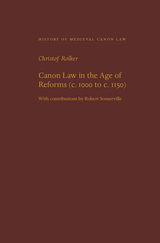 Canon Law in the Age of Reforms (c. 1000 to c. 1150)
Christof Rolker
Catholic University of America Press, 2023 This monograph addresses the history of canon law in Western Europe between ca. 1000 and ca. 1150, specifically the collections compiled and the councils held in that time. The main part consists of an analysis of all major collections, taking into account their formal and material sources, the social and political context of their origin, the manuscript transmission, and their reception more generally. As most collections are not available in reliable editions, a considerable part of the discussion involves the analysis of medieval manuscripts. Specialized research is available for many but not all these works, but tends to be scattered across miscellaneous publications in English, German, French, Italian, and Spanish; one purpose of the book is thus to provide relatively uniform, up-to-date accounts of all major collections of the period. At the same time, the book argues that the collections are much more directly influenced by the social milieux from which they emerged, and that more groups were involved in the development of high medieval canon law than it has previously been thought. In particular, the book seeks to replace the still widely held belief that the development of canon law in the century before Gratian’s Decretum (ca. 1140) was largely driven by the Reform papacy. Instead, it is crucial to take into account the contribution of bishops, monks, and other groups with often conflicting interests. Put briefly, local needs and conflicts played a considerably more important role than central (papal) ‘reform’, on which older scholarship has largely focused.
The Canon of Sir Thomas Wyatt’s Poety
Richard Harrier
Harvard University Press, 1975 Thomas Wyatt is the finest English poet between Chaucer and the Elizabethans. Many poems have been wrongly attributed to him, however, and the authenticity of different versions of his lyrics has been a matter of dispute. Richard Harrier makes a significant contribution both by establishing accurate texts and by determining the canon itself.
The only solid foundation for the Wyatt canon is his personal copybook, the Egerton MS, here reproduced in a diplomatic text. The apparatus records all changes within the manuscript and all contemporary variants; explanatory notes are provided. This volume, which includes a detailed and comprehensive analysis of the sources, will stand as the ultimate authority for the text and canon of Wyatt's poems.
 The Canon: The Original One Hundred and Fifty-Four Poems
Constantine Cavafy
Harvard University Press, 2007 This volume of 154 poems by Constantine Cavafy is the entire body of work by the artist widely considered a master of modern Greek poetry. Published only privately during his lifetime, Cavafy's poems achieved international acclaim when writers such as E. M. Forster, Laurence Durrell, T. S. Eliot, and W. H. Auden brought his work to a worldwide audience.
Cavafy was a poet of Alexandria, the city of his birth and his home throughout his adult life. At the confluence of many histories—Greek, Egyptian, Byzantine, modern European—and many religions, the city provided endless inspiration for his brief, intimate portraits of individuals, historic and contemporary, real and imagined. Homoerotic desire, artistic longing, and a nostalgic fatalism suffuse the subjects he examined and laid bare, without metaphor or simile, in free iambic verse.
Published here in the original Greek, with a new English translation by the noted poet Stratis Haviaris on each facing page, and with a foreword by Seamus Heaney, The Canon is Cavafy, familiar and fresh, seen through new eyes, yet instantly recognized: "the Greek gentleman in a straw hat," as Forster called him, "standing absolutely motionless at a slight angle to the universe."
 Canonical States, Canonical Stages: Oedipus, Othering, and Seventeenth-Century Drama
Mitchell Greenberg
University of Minnesota Press, 1994
Canonical States, Canonical Stages was first published in 1994. Minnesota Archive Editions uses digital technology to make long-unavailable books once again accessible, and are published unaltered from the original University of Minnesota Press editions.
In the crucible of seventeenth-century Europe, a new kind of subjectivity formed, private and interior. Perversely, the new private subject made its most spectacular appearance on the public stage-an appearance that, as Mitchell Greenberg amply demonstrates, also marked the emergence of absolutism in Europe. What these two phenomena had to do with one another, and how they were elaborated in the theater of the seventeenth century, is the subject of Greenberg's book, a masterful critical work that relates the dramatic construction of modern subjectivity and absolutist culture to the formation of the Western literary canon.
In particular, Canonical States, Canonical Stages shows how the Oedipus myth, reinterpreted on various stages at the end of the Renaissance, served the purposes of the emerging culture by replaying the founding moment of absolute rule. Working with models of genealogical criticism, psychoanalysis, and a certain Continental feminism, Greenberg reads plays by Shakespeare, Lope de Vega, Calderón, Corneille, and Racine to show how, as symptomatic texts staged within the confines of familial scenarios, they combine a dynamics of politics with a conflicting "private" desire shown to be inimical to the dominant ideology. This analysis reveals how scenarios of sacrifice and transcendence are brought into play to normalize and naturalize inchoate and threatening forces of social change by appealing to preexisting cultural models such as the myth of Oedipus. A fascinating integration of texts from political theory, psychoanalysis, history, and literature, Canonical States, Canonical Stages offers a powerful interpretation of the interrelated representation of subjectivity and absolutism on the seventeenth-century stage.
Winner of the 1995 MLA Aldo and Jeanne Scaglione Prize for Comparative Literary Studies
Mitchell Greenberg is chair of the Department of French and Italian at Miami University in Ohio. He is the author of, among other books, Subjectivity and Subjugation in Seventeenth-Century Drama and Prose: The Family Romance of French Classicism (1992).
Canons
Edited by Robert von Hallberg
University of Chicago Press, 1984 Canon formation: ". . . the traditional dream of ambitious critics. A canon is commonly seen as what other people, once powerful, have made and what should now be opened up, demystified, or eliminated altogether." So writes editor Robert von Hallberg in his introduction. This collection of essays articulates how canons are constructed and examines the ways in which academic canons influence literary thought and instruction. Presenting a wide range of canonical interpretation, the volume includes essays on such themes as Native American literature and the canon, the ideology of canon formation, the history of American poetry anthologies, undoing the canonical economy, the making of the modernist canon, and canon and power in the Hebrew scriptures.
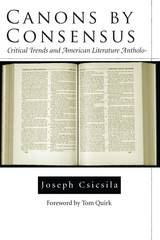 Canons by Consensus: Critical Trends and American Literature Anthologies
Joseph Csicsila, with a foreword by Tom Quirk
University of Alabama Press, 2004 The first systematic analysis of American literature textbooks used by college instructors in the last century
Scholars have long noted the role that college literary anthologies play in the rising and falling reputations of American authors. Canons by Consensus examines this classroom fixture in detail to challenge and correct a number of assumptions about the development of the literary canon throughout the 20th century. Joseph Csicsila analyzes more than 80 anthologies published since 1919 and traces not only the critical fortunes of individual authors, but also the treatment of entire genres and groupings of authors by race, region, gender, and formal approach. In doing so, he calls into question accusations of deliberate or inadvertent sexism and racism. Selections by anthology editors, Csicsila demonstrates, have always been governed far more by prevailing trends in academic criticism than by personal bias. Academic anthologies are found to constitute a rich and often overlooked resource for studying American literature, as well as an irrefutable record of the academy’s changing literary tastes throughout the last century.
|
|
